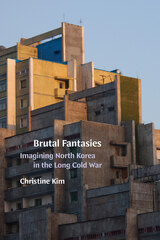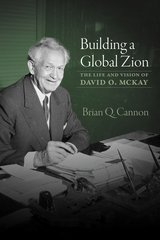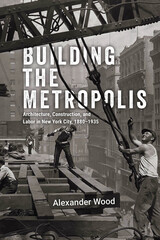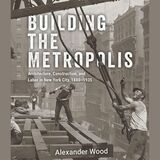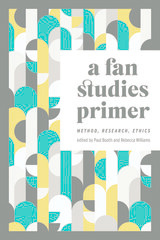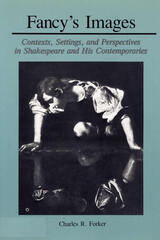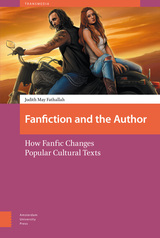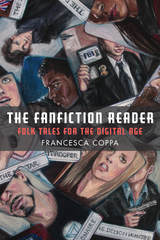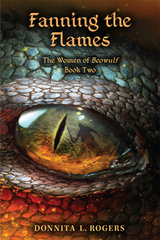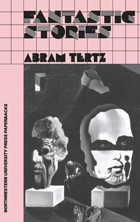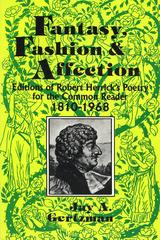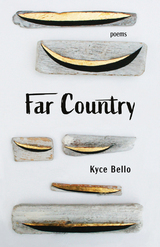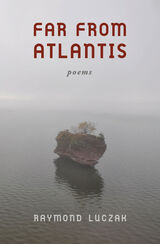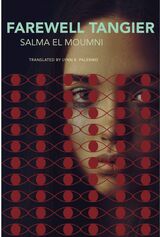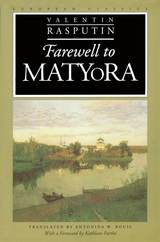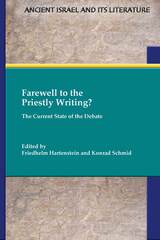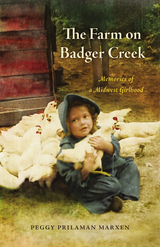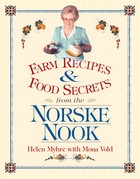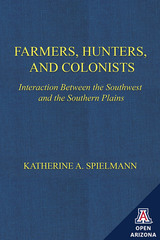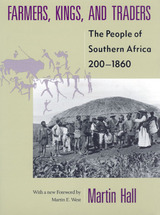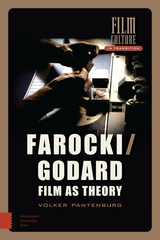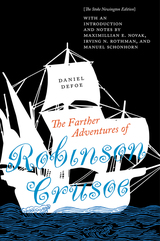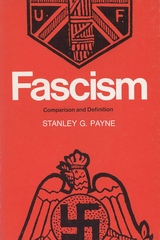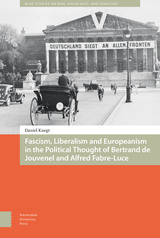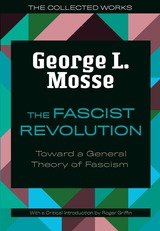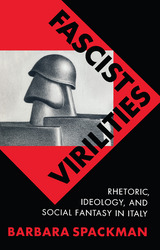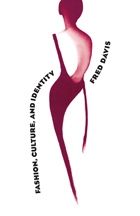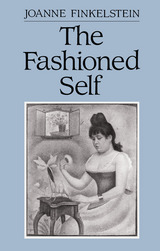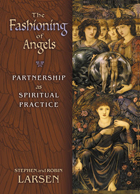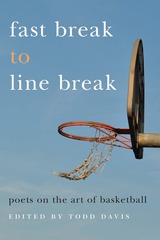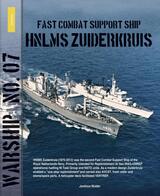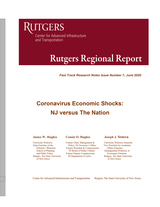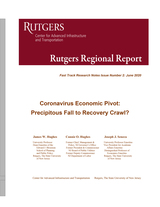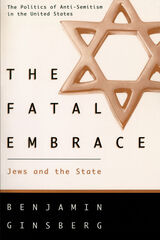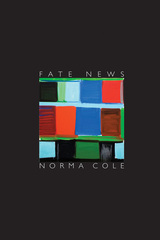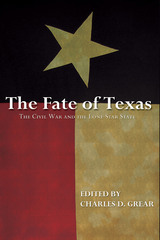 Fan Phenomena: Twin Peaks
Edited by Marisa C. Hayes and Franck Boulègue
Intellect Books, 2013 David Lynch and Mark Frost’s television series Twin Peaks debuted in April 1990 and by June of 1991 had been cancelled. Yet the impact of this surreal, unsettling show—ostensibly about the search for homecoming queen Laura Palmer’s killer—is far larger than its short run might indicate. A forerunner of the moody, disjointed, cinematic television shows that are commonplace today, Twin Peaks left a lasting impression, and nowhere is that more clear than in the devotion of its legions of loyal fans.
Fan Phenomena: Twin Peaks is the first book of its kind to revisit Lynch and Frost's groundbreaking series and explore how the show's cult status continues to thrive in the digital era. In ten essays, the contributors take a deeper look at Twin Peaks' rich cast of characters, iconic locations, and its profound impact on television programming, as well as the impact of new media and fan culture on the show’s continued relevance. Written by fans for fans, Fan Phenomena: Twin Peaks is an intelligent yet accessible guide to the various aspects of the show and its subsequent film. Featuring commentary from both first generation and more recent followers, these essays capture the endlessly fascinating universe of Twin Peaks, from Audrey Horne's keen sense of style to Agent Cooper's dream psychology.
The first non-academic collection that speaks to the show's fan base rather than a scholarly audience, this book is more approachable than previous Twin Peaks critical studies volumes and features color images of the series, film, and fan media. It will be welcomed by anyone seduced by the strangeness and camp of Lynch’s seminal series.
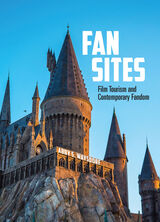 Fan Sites: Film Tourism and Contemporary Fandom
Abby S. Waysdorf
University of Iowa Press, 2021 Theme parks break attendance numbers with the promise of “stepping inside” a film’s world. Pop-up “experiences” are a regular part of promotional cycles. All this is accepted in the contemporary media environment—but why? What is the appeal of film tourism, and what can its rise tell us about contemporary fandom? Fan Sites explores why and how we experience film and television-related places, and what the growth of this practice means for contemporary fandom. Through four case studies—Game of Thrones tourism in Dubrovnik, Croatia and Northern Ireland, the Wizarding World of Harry Potter theme parks in Orlando, Florida, fandom of The Prisoner in Portmeirion, Wales, and Friends events in the United Kingdom and United States—this book presents a multifaceted look at the ways place and fandom interact today.
Fan Sites explores the different relationships that fans build with these places of fandom, from the exploratory knowledge-building of Game of Thrones fans on vacation, the appreciative evaluations of Harry Potter fans at the Wizarding World of Harry Potter, to the frequent “homecoming” visits of Prisoner fans, who see Portmeirion as a “safe vault” and the home of their fandom. Including engaging accounts of real fans at each location, Fan Sites addresses what the rise of fan tourism and places of fandom might mean for the future of fandom and its relationship with the media industry.
A Fan Studies Primer: Method, Research, Ethics
Paul Booth
University of Iowa Press, 2021 The discipline of fan studies is famously undisciplined. But that doesn’t mean it isn’t structured. This is the first comprehensive primer for classroom use that shows students how to do fan studies in practical terms. With contributions from a range of established and emerging scholars, coeditors Paul Booth and Rebecca Williams pull together case studies that demonstrate the wide array of methodologies available to fan studies scholars, such as auto/ethnography, immersion, interviews, online data mining, historiography, and textual analysis. This collection also probes the ethical questions that are unique to fan studies work, such as the use of online fan content for research, interview methods, consent, and privacy.
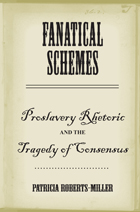 Fanatical Schemes: Proslavery Rhetoric and the Tragedy of Consensus
Patricia Roberts-Miller
University of Alabama Press, 2009 What was the relationship between rhetoric and slavery, and how did rhetoric fail as an alternative to violence, becoming instead its precursor? Fanatical Schemes is a study of proslavery rhetoric in the 1830s. A common understanding of the antebellum slavery debate is that the increased stridency of abolitionists in the 1830s, particularly the abolitionist pamphlet campaign of 1835, provoked proslavery politicians into greater intransigence and inflammatory rhetoric. Patricia Roberts-Miller argues that, on the contrary, inflammatory rhetoric was inherent to proslavery ideology and predated any shift in abolitionist practices. She examines novels, speeches, and defenses of slavery written after the pamphlet controversy to underscore the tenets of proslavery ideology and the qualities that made proslavery rhetoric effective. She also examines anti-abolitionist rhetoric in newspapers from the spring of 1835 and the history of slave codes (especially anti-literacy laws) to show that anti-abolitionism and extremist rhetoric long preceded more strident abolitionist activity in the 1830s. The consensus that was achieved by proslavery advocates, argues Roberts-Miller, was not just about slavery, nor even simply about race. It was also about manhood, honor, authority, education, and political action. In the end, proslavery activists worked to keep the realm of public discourse from being a place in which dominant points of view could be criticized--an achievement that was, paradoxically, both a rhetorical success and a tragedy.
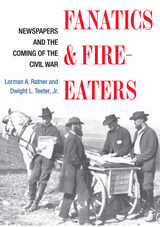 Fanatics and Fire-eaters: Newspapers and the Coming of the Civil War
Lorman A. Ratner and Dwight L. Teeter Jr.
University of Illinois Press, 2003 In the troubled years leading up to the Civil War, newspapers in the North and South presented the arguments for and against slavery, debated the right to secede, and in general denounced opposing viewpoints with imagination and vigor. At the same time, new technologies like railroads and the telegraph lent the debates an immediacy that both enflamed emotions and brought the slavery issue into every home. Lorman A. Ratner and Dwight L. Teeter Jr. look at the power of America's fast-growing media to influence perception and the course of events prior to the Civil War. Drawing on newspaper accounts from across the United States, the authors look at how the media covered—and the public reacted to—major events like the Dred Scott decision, John Brown's raid on Harper's Ferry, and the election of 1860. They find not only North-South disputes about the institution of slavery but differing visions of the republic itself—and which region was the true heir to the legacy of the American Revolution.
Fancy's Image: Contexts, Settings, and Perspectives in Shakespeare and His Contemporaries
Charles R Forker
Southern Illinois University Press, 1990
In ten essays spanning more than three decades of scholarship, Charles R. Forker, the author of Skull Beneath the Skin: The Achievement of John Webster, explores the dramatic and poetic styles of Shakespeare and his contemporaries in relation to Elizabethan ideas of space and time, image patterns and aesthetic form in drama, cultural contexts (the family, the state, the individual), and political and religious values.
Forker has divided his essays into three sections. The essays in the first section, "The Stage," explore theatrical self-consciousness; those in "The Green World" examine the use of pastoral and natural settings as significant factors in dramatization; the essays in the final section, "The Family," discuss ideas of dramatic engagement and disengagement in major Elizabethan playwrights other than Shakespeare.
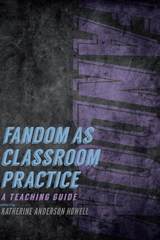 Fandom as Classroom Practice: A Teaching Guide
Katherine Anderson Howell
University of Iowa Press, 2018 Providing ways to engage students through their popular culture interests, this collection brings together several essays, across disciplines, to show how fan practices such as writing fan fiction, creating vids, communicating via Tumblr, and participating in film tourism can invite students to invest more of themselves into their education. Both scholarship and fandom encourage passionate engagement with texts—rather than passive consumption in isolation— and editor Katherine Anderson Howell and her contributors find that when students are encouraged to partake in a remix classroom that encourages their fan interests, they participate more in their education, are more critical of experts and authorities, and actively shape the discourse themselves. Creating this remix classroom requires thoughtfulness on the instructor’s part, and so the chapters in this volume come from teachers who have carefully constructed such courses, including several invaluable appendices that provide examples of methodologies, course assignments, teaching practices, and classroom setup. Each chapter also includes student responses that offer a sense of what students gained from each course. The result is an exciting and entertaining new way to motivate students and teachers alike, and it is sure to be a popular reference guide for instructors teaching classes from high school to graduate levels.
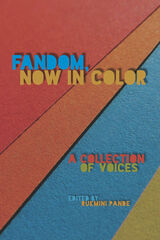 Fandom, Now in Color: A Collection of Voices
Rukmini Pande
University of Iowa Press, 2020 Fandom, Now in Color gathers together seemingly contradictory narratives that intersect at the (in)visibility of race/ism in fandom and fan studies. This collection engages the problem by undertaking the different tactics of decolonization—diversifying methodologies, destabilizing canons of “must-read” scholarship by engaging with multiple disciplines, making whiteness visible but not the default against which all other kinds of racialization must compete, and decentering white fans even in those fandoms where they are the assumed majority. These new narratives concern themselves with a broad swath of media, from cosplay and comics to tabletop roleplay and video games, and fandoms from Jane the Virgin to Japan’s K-pop scene. Fandom, Now in Color asserts that no one answer or approach can sufficiently come to grips with the shifting categories of race, racism, and racial identity. Contributors: McKenna Boeckner, Angie Fazekas, Monica Flegel, Elizabeth Hornsby, Katherine Anderson Howell, Carina Lapointe, Miranda Ruth Larsen, Judith Leggatt, Jenni Lehtinen, joan miller, Swati Moitra, Samira Nadkarni, Indira Neill Hoch, Sam Pack, Rukmini Pande, Deepa Sivarajan, Al Valentín
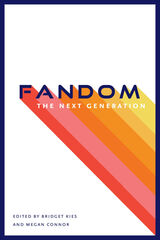 Fandom, the Next Generation
Bridget Kies
University of Iowa Press, 2022 This collection is the first to offer a close study of fan generations, which are defined not only by fans’ ages, but by their entry point into a canon or their personal politics. The contributors further the conversation about how generational fandom is influenced by and, in turn, influences technologies, industry practices, and social and political changes. As reboot culture continues, as franchises continue expanding over time, and as new technologies enable easier access to older media, Fandom, the Next Generation offers a necessary investigation into transgenerational fandoms and intergenerational fan relationships.
Contributors:
Maria Alberto, University of Utah
Mélanie Bourdaa, University of Bordeaux Montaigne
Meredith Dabek, Maynooth University
Simone Driessen, Erasmus University Rotterdam
Yektanurşin Duyan, Mardin Artuklu University
Dan Golding, Swinburne University of Technology
Bethan Jones, Aberdale, Wales (UK)
Siobhan Lyons, Sydney, New South Wales (Australia)
L. N. Rosales, University of Nebraska, Lincoln
Andrew Scahill, University of Colorado, Denver
Janelle Vermaak, Nelson Mandela University
Cynthia W. Walker, St. Peter’s University
Dawn Walls-Thumma, independent scholar
Neta Yodovich, University of Haifa
Fanfiction and the Author: How FanFic Changes Popular Cultural Texts
Judith May Fathallah
Amsterdam University Press, 2017 The production, reception and discussion of fanfiction is a major aspect of contemporary global media. Thus far, however, the genre has been subject to relatively little rigorous qualitative or quantitative study-a problem that Judith M. Fathallah remedies here through close analysis of fanfiction related to Sherlock, Supernatural, and Game of Thrones. Her large-scale study of the sites, reception, and fan rejections of fanfic demonstrate how the genre works to legitimate itself through traditional notions of authorship, even as it deconstructs the author figure and contests traditional discourses of authority. Through a process she identifies as the 'legitimation paradox', Fathallah demonstrates how fanfic hooks into and modifies the discourse of authority, and so opens new spaces for writing that challenges the authority of media professionals.
The Fanfiction Reader: Folk Tales for the Digital Age
Francesca Coppa
University of Michigan Press, 2017 Written originally as a fanfiction for the series Twilight, the popularity of Fifty Shades of Grey has made obvious what was always clear to fans and literary scholars alike: that it is an essential human activity to read and retell epic stories of famous heroic characters. The Fanfiction Reader showcases the extent to which the archetypal storytelling exemplified by fanfiction has continuities with older forms: the communal tale-telling cultures of the past and the remix cultures of the present have much in common. Short stories that draw on franchises such as Star Trek, Star Wars, Doctor Who, James Bond, and others are accompanied by short contextual and analytical essays wherein Coppa treats fanfiction—a genre primarily written by women and minorities—as a rich literary tradition in which non-mainstream themes and values can thrive.
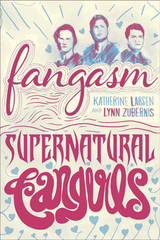 Fangasm: Supernatural Fangirls
Katherine Larsen and Lynn S. Zubernis
University of Iowa Press, 2013 Once upon a time not long ago, two responsible college professors, Lynn the psychologist and Kathy the literary scholar, fell in love with the television show Supernatural and turned their oh-so-practical lives upside down. Plunging headlong into the hidden realms of fandom, they scoured the Internet for pictures of stars Jensen Ackles and Jared Padalecki and secretly penned racy fan fiction. And then they hit the road—crisscrossing the country, racking up frequent flyer miles with alarming ease, standing in convention lines at 4 A.M.
They had white-knuckled encounters with overly zealous security guards one year and smiling invitations to the Supernatural set the next. Actors stripping in their trailers, fangirls sneaking onto film sets; drunken confessions, squeals of joy, tears of despair; wallets emptied and responsibilities left behind; intrigue and ecstasy and crushing disappointment—it’s all here.
And yet even as they reveled in their fandom, the authors were asking themselves whether it’s okay to be a fan, especially for grown women with careers and kids. “Crazystalkerchicks”—that’s what they heard from Supernatural crew members, security guards, airport immigration officials, even sometimes their fellow fans. But what Kathy and Lynn found was that most fans were very much like themselves: smart, capable women looking for something of their own that engages their brains and their libidos.
Fangasm pulls back the curtain on the secret worlds of fans and famous alike, revealing Supernatural behind the scenes and discovering just how much the cast and crew know about what the fans are up to. Anyone who’s been tempted to throw off the constraints of respectability and indulge a secret passion—or hit the road with a best friend—will want to come along.
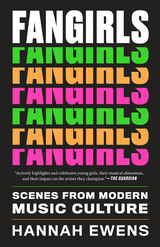 Fangirls: Scenes from Modern Music Culture
By Hannah Ewens
University of Texas Press, 2020 "To be a fan is to scream alone together." This is the discovery Hannah Ewens makes in Fangirls: how music fandom is at once a journey of self-definition and a conduit for connection and camaraderie; how it is both complicated and empowering; and how now, more than ever, fandoms composed of girls and young queer people create cultures that shape and change an entire industry. This book is about what it means to be a fangirl. Speaking to hundreds of fans from the UK, US, Europe, and Japan, Ewens tells the story of music fandom using its own voices, recounting previously untold or glossed-over scenes from modern pop and rock music history. In doing so, she uncovers the importance of fan devotion: how Ariana Grande represents both tragedy and resilience to her followers, or what it means to meet an artist like Lady Gaga in person. From One Directioners, to members of the Beyhive, to the author's own fandom experiences, this book reclaims the "fangirl" label for its young members, celebrating their purpose, their power, and, most of all, their passion for the music they love.
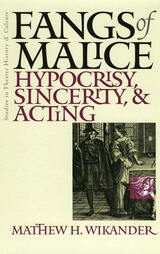 Fangs Of Malice: Hypocrisy Sincerity And Acting
Matthew H Wikander
University of Iowa Press, 2002 The idea that actors are hypocrites and fakes and therefore dangerous to society was widespread in the seventeenth and eighteenth centuries. Fangs of Malice examines the equation between the vice of hypocrisy and the craft of acting as it appears in antitheatrical tracts, in popular and high culture, and especially in plays of the period. Rousseau and others argue that actors, expert at seeming other than they are, pose a threat to society; yet dissembling seems also to be an inevitable consequence of human social intercourse. The “antitheatrical prejudice” offers a unique perspective on the high value that modern western culture places on sincerity, on being true to one's own self. Taking a cue from the antitheatrical critics themselves, Matthew Wikander structures his book in acts and scenes, each based on a particular slander against actors. A prologue introduces his main issues. Act One deals with the proposition “They Dress Up”: foppish slavery to fashion, cross-dressing, and dressing as clergy. Act Two treats the proposition “They Lie” by focusing on social dissembling and the phenomenon of the self-deceiving hypocrite and the public, princely hypocrite. Act Three, “They Drink,” examines a wide range of antisocial behavior ascribed to actors, such as drinking, gambling, and whoring. An epilogue ties the ancient ideas of possession and the panic that actors inspire to contemporary anxieties about representation not only in theatre but also in the visual and literary arts. Fangs of Malice will be of great interest to scholars and students of drama as well as to theatre professionals and buffs.
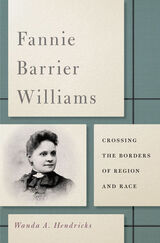 Fannie Barrier Williams: Crossing the Borders of Region and Race
Wanda A. Hendricks
University of Illinois Press, 2014 Born shortly before the Civil War, activist and reformer Fannie Barrier Williams (1855-1944) became one of the most prominent educated African American women of her generation. Hendricks shows how Williams became "raced" for the first time in early adulthood, when she became a teacher in Missouri and Washington, D.C., and faced the injustices of racism and the stark contrast between the lives of freed slaves and her own privileged upbringing in a western New York village. She carried this new awareness to Chicago, where she joined forces with black and predominantly white women's clubs, the Unitarian church, and various other interracial social justice organizations to become a prominent spokesperson for Progressive economic, racial, and gender reforms during the transformative period of industrialization. By highlighting how Williams experienced a set of freedoms in the North that were not imaginable in the South, this clearly-written, widely accessible biography expands how we understand intellectual possibilities, economic success, and social mobility in post-Reconstruction America.
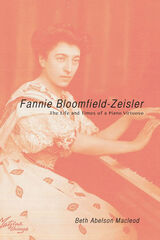 Fannie Bloomfield-Zeisler: The Life and Times of a Piano Virtuoso
Beth Abelson Macleod
University of Illinois Press, 2015 One of the foremost piano virtuosi of her time, Fannie Bloomfield-Zeisler reliably filled Carnegie Hall. As a ""new woman,"" she simultaneously embraced family life and forged an independent career built around a repertoire of the German music she tirelessly championed. Yet after her death she faded into obscurity. In this new biography, Beth Abelson Macleod reintroduces a figure long, and unjustly, overlooked by music history. Trained in Vienna, Bloomfield-Zeisler significantly advanced the development of classical music in the United States. Her powerful and sensitive performances, both in recital and with major orchestras, won her followers across the United States and Europe and often provided her American audiences with their first exposure to the pieces she played. The European-style salon in her Chicago home welcomed musicians, scientists, authors, artists, and politicians, while her marriage to attorney Sigmund Zeisler placed her at the center of a historical moment when Sigmund defended the anarchists in the 1886 Haymarket trial. In its re-creation of a musical and social milieu, Fannie Bloomfield-Zeisler paints a vivid portrait of a dynamic artistic life.
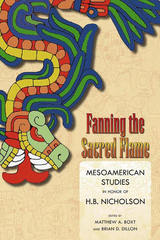 Fanning the Sacred Flame: Mesoamerican Studies in Honor of H. B. Nicholson
Matthew A. Boxt
University Press of Colorado, 2020 Fanning the Sacred Flame: Mesoamerican Studies in Honor of H. B. Nicholson contains twenty-two original papers in tribute to H. B. "Nick" Nicholson, a pioneer of Mesoamerican research. His intellectual legacy is recognized by Mesoamerican archaeologists, art historians, ethnohistorians, and ethnographers--students, colleagues, and friends who derived inspiration and encouragement from him throughout their own careers. Each chapter, which presents original research inspired by Nicholson, pays tribute to the teacher, writer, lecturer, friend, and mentor who became a legend within his own lifetime. Covering all of Mesoamerica across all time periods, contributors include Patricia R. Anawalt, Alfredo López Austin, Anthony Aveni, Robert M. Carmack, David C. Grove, Richard D. Hansen, Leonardo López Luján, Kevin Terraciano, and more. Eloise Quiñones Keber provides a thorough biographical sketch, detailing Nicholson's academic and professional journey. Publication supported, in part, by The Patterson Foundation and several private donors.
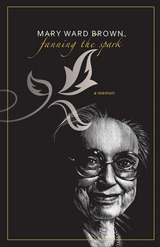 Fanning the Spark: A Memoir
Mary Ward Brown
University of Alabama Press, 2009 In 1986, after years of publishing stories in literary magazines and periodicals, Mary Ward Brown published her first book, the story collection Tongues of Flame. It soon received regional and national attention, and the following year won the PEN/Hemingway Award for fiction. Mary Ward Brown was sixty-nine years old. Though she would go on to write and publish many more stories and a well-received second collection, It Wasn’t All Dancing, Mary Ward Brown’s late acclaim hardly hints at the rich and varied life that prepared the way for her success. Fanning the Spark is the story of her life as a writer—her upbringing in rural Alabama; the joys of college, marriage, and motherhood; the sorrows of becoming a widow; and a lifelong devotion to writing, writers, and literature, and the company of those who shared those loves, nurturing and feeding her interior life in the face of many challenges, losses, and obstacles, both emotional and material. Here, in prose every bit as eloquent, evocative, and incisive as her stories, are her remembrances of loved ones; her letters fraught with worry to her son in Vietnam; periods of emotional isolation and unbidden silence; her invaluable friendships with renowned writers, editors, and agents; her love of community and place; and immeasurable delight with every award, speech, and public reading, the many recognitions she has garnered late in life. Above all, it is the story of the competing demands of art and of life, the constant struggle between her need to write and the practicalities of family, duty, and day to day living.
 Fanny & Joshua: The Enigmatic Lives of Frances Caroline Adams and Joshua Lawrence Chamberlain
Diane Monroe Smith
University Press of New England, 2013 Joshua Chamberlain has fascinated historians and readers ever since his service in the Civil War caused his commanding officers to sit up and take notice when the young professor was on the field. What makes a man a gifted soldier and natural leader? In this compelling book, Diane Monroe Smith argues that finding the answer requires a consideration of Chamberlain’s entire life, not just his few years on the battlefield. Truly understanding Chamberlain is impossible, Smith maintains, without exploring the life of Joshua’s soul mate and wife of almost fifty years, Fanny. In this dual biography, Fanny emerges as a bright, talented woman who kept Professor, General, and then Governor Chamberlain on his toes. But you don’t have to take Smith’s word for it. Liberally quoting from years of correspondence, the author invites you to judge for yourself.
Fanny Fern: An Independent Woman
Warren, Joyce W
Rutgers University Press, 1992 Fanny Fern is a name that is unfamiliar to most contemporary readers. In this first modern biography, Warren revives the reputation of a once-popular 19th-century newspaper columnist and novelist. Fern, the pseudonym for Sara Payson Willis Parton, was born in 1811 and grew up in a society with strictly defined gender roles. From her rebellious childhood to her adult years as a newspaper columnist, Fern challenged society's definition of women's place with her life and her words. Fern wrote a weekly newspaper column for 21 years and, using colorful language and satirical style, advocated women's rights and called for social reform. Warren blends Fern's life story with an analysis of the social and literary world of 19th-century America.
 Fanny Herself
Edna Ferber
University of Illinois Press, 1917 Heralded by one reviewer as "the most serious, extended and dignified of [Edna] Ferber's books," Fanny Herself is the intensely personal chronicle of a young girl growing up Jewish in a small midwestern town. Packed with the warmth and the wry, sidelong wit that made Ferber one of the best-loved writers of her time, the novel charts Fanny's emotional growth through her relationship with her mother, the shrewd, sympathetic Molly Brandeis.
"You could not have lived a week in Winnebago without being aware of Mrs. Brandeis," Ferber begins, and likewise the story of Fanny Brandeis is inextricable from that of her vigorous, enterprising mother. Molly Brandeis is the owner and operator of Brandeis' Bazaar, a modest general store left to her by her idealistic, commercially inept late husband. As Fanny strives to carve out her own sense of herself, Molly becomes the standard by which she measures her intellectual and spiritual progress.
Fanny's ambivalent feelings about being Jewish, her self-deprecating attitude toward her gift for sketching and drawing, and her inspired success as a businesswoman all contribute to the flesh-and-blood complexity of Ferber's youthful, eminently believable protagonist. She is accompanied on her journey by impeccably drawn characters such as Father Fitzpatrick, the Catholic priest in Winnebago; Ella Monahan, buyer for the glove department of the Haynes-Cooper mail order house; Fanny's brother, Theodore, a gifted violinist for whose musical education Molly sacrifices Fanny's future; and Clarence Heyl, the scrappy columnist who never forgot how Fanny rescued him from the school bullies.
Ferber's only work of fiction with a strong autobiographical element, Fanny Herself showcases the author's enduring interest in the capacity of strong women to transcend the limitations of their environment and control their own circumstances. Through Fanny's honest struggle with conflicting values–financial security and corporate success versus altruism and artistic integrity–Ferber grapples with some of the most deeply embedded contradictions of the American spirit.
 Fanny Kemble’s Journals
Fanny Kemble
Harvard University Press, 2000 Henry James called Fanny Kemble’s autobiography “one of the most animated autobiographies in the language.” Born into the first family of the British stage, Fanny Kemble was one of the most famous woman writers of the English-speaking world, a best-selling author on both sides of the Atlantic. In addition to her essays, poetry, plays, and a novel, Kemble published six works of memoir, eleven volumes in all, covering her life, which began in the first decade of the nineteenth century and ended in the last. Her autobiographical writings are compelling evidence of Kemble’s wit and talent, and they also offer a dazzling overview of her transatlantic world.
Kemble kept up a running commentary in letters and diaries on the great issues of her day. The selections here provide a narrative thread tracing her intellectual development—especially her views on women and slavery. She is famous for her identification with abolitionism, and many excerpts reveal her passionate views on the subject. The selections show a life full of personal tragedy as well as professional achievements. An elegant introduction provides a context for appreciating Kemble’s remarkable life and achievements, and the excerpts from her journals allow her, once again, to speak for herself.
FANNY WRIGHT: REBEL IN AMERICA
Celia Morris
University of Illinois Press, 1992 "A lively, readable narrative, informative to general readers and scholars alike. In its closely documented pages, one of the boldest and most iconoclastic women in Jacksonian America lives again."
-- New York Times Book Review
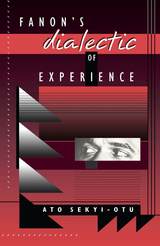 Fanon’s Dialectic of Experience
Ato Sekyi-Otu
Harvard University Press, 1996 With the flowering of postcolonialism, we return to Frantz Fanon, a leading theorist of the struggle against colonialism. In this thorough reinterpretation of Fanon’s texts, Ato Sekyi-Otu ensures that we return to him fully aware of the unsuspected formal complexity and substantive richness of his work. A Caribbean psychiatrist trained in France after World War II and an eloquent observer of the effects of French colonialism on its subjects from Algeria to Indochina, Fanon was a controversial figure—advocating national liberation and resistance to colonial power in his bestsellers, Black Skin, White Masks and The Wretched of the Earth.
But the controversies attending his life—and death, which some ascribed to the CIA—are small in comparison to those surrounding his work. Where admirers and detractors alike have seen his ideas as an incoherent mixture of Existentialism, Marxism, and psychoanalysis, Sekyi-Otu restores order to Fanon’s oeuvre by reading it as one dramatic dialectical narrative. Fanon’s Dialectic of Experience invites us to see Fanon as a dramatist enacting a movement of experience—the drama of social agents in the colonial context and its aftermath—in a manner idiosyncratically patterned on the narrative structure of Hegel’s Phenomenology of Spirit. By recognizing the centrality of experience to Fanon’s work, Sekyi-Otu allows us to comprehend this much misunderstood figure within the tradition of political philosophy from Aristotle to Arendt.
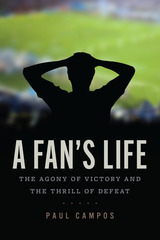 A Fan's Life: The Agony of Victory and the Thrill of Defeat
Paul Campos
University of Chicago Press, 2022 A lifelong sports fanatic plumbs the depths of the fan mindset, tracking the mania from the gridiron to the national political stage and beyond.
The Pass. The Curse. The Double Doink. A sports fan’s life is not just defined by intense moments on a field, it’s scarred by them. For a real fan, winning isn’t everything—losing is. The true fans, it’s said, are those who have suffered the most, enduring lives defined by irrational obsession, fervid hopes, and equally gut-wrenching misery. And as Paul Campos shows, those deep feelings are windows not just onto an individual fan’s psychology but onto some of our shared concepts of community, identity, and belonging—not all of which are admirable. In A Fan’s Life, he seeks not to exalt a particular team but to explore fandom’s thorniest depths, excavating the deeper meanings of the fan’s inherently unhappy life.
A Fan’s Life dives deep into the experience of being an ardent fan in a world defined more and more by the rhetoric of “winners” and “losers.” In a series of tightly argued chapters that suture together memoir and social critique, Campos chronicles his lifelong passion for University of Michigan football while meditating on fandom in the wake of the unprecedented year of 2020—when, for a time, a global pandemic took away professional and collegiate sports entirely. Fandom isn’t just leisure, he shows; it’s part of who we are, and part of even our politics, which in the age of Donald Trump have become increasingly tribal and bloody. Campos points toward where we might be heading, as our various partisan affiliations—fandoms with a grimly national significance—become all the more intense and bitterly self-defining. As he shows, we’re all fans of something, and making sense of fandom itself might offer a way to wrap our heads around our increasingly divided reality, on and off the field.
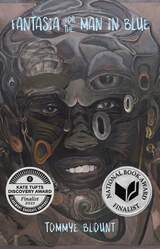 Fantasia for the Man in Blue
Tommye Blount
Four Way Books, 2020 In his debut collection Fantasia for the Man in Blue, Tommye Blount orchestrates a chorus of distinct, unforgettable voices that speak to the experience of the black, queer body as a site of desire and violence. A black man’s late-night encounter with a police officer—the titular “man in blue”—becomes an extended meditation on a dangerous erotic fantasy. The late Luther Vandross, resurrected here in a suite of poems, addresses the contradiction between his public persona and a life spent largely in the closet: “It’s a calling, this hunger / to sing for a love I’m too ashamed to want for myself.” In “Aaron McKinney Cleans His Magnum,” the convicted killer imagines the barrel of the gun he used to bludgeon Matthew Shepard as an “infant’s small mouth” as well as the “sad calculator” that was “built to subtract from and divide a town.” In these and other poems, Blount viscerally captures the experience of the “other” and locates us squarely within these personae.
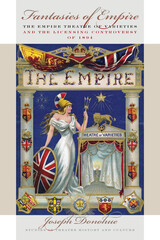 Fantasies of Empire: The Empire Theatre of Varieties and the Licensing Controversy of 1894
Joseph Donohue
University of Iowa Press, 2005 In the London summer of 1894, members of the National Vigilance Society, led by the well-known social reformer Laura Ormiston Chant, confronted the Empire Theatre of Varieties, Leicester Square, and its brilliant manager George Edwardes as he applied for a routine license renewal. On grounds that the Empire’s promenade was the nightly resort of prostitutes, that the costumes in the theatre’s ballets were grossly indecent, and that the moral health of the nation was imperiled, Chant demanded that the London County Council either deny the theatre its license or require radical changes in the Empire’s entertainment and clientele before granting renewal. The resulting license restriction and the tremendous public controversy that ensued raised important issues—social, cultural, intellectual, and moral—still pertinent today.
Fantasies of Empire is the first book to recount in full the story of the Empire licensing controversy in all its captivating detail. Contemporaneous accounts are interwoven with Donohue’s identification and analysis of the larger issues raised: What the controversy reveals about contemporary sexual and social relations, what light it sheds on opposing views regarding the place of art and entertainment in modern society, and what it says about the pervasive effect of British imperialism on society’s behavior in the later years of Queen Victoria’s reign. Donohue connects the controversy to one of the most interesting developments in the history of modern theatre, the simultaneous emergence of a more sophisticated, varied, and moneyed audience and a municipal government insistent on its right to control and regulate that audience’s social and cultural character and even its moral behavior.
Rich in illustrations and entertainingly written, Fantasies of Empire will appeal to theatre, dance, and social historians and to students of popular entertainment, the Victorian period, urban studies, gender studies, leisure studies, and the social history of architecture.
 Fantasies of Hong Kong Disneyland: Attempted Indigenizations of Space, Labor, and Consumption
Jenny Banh
Rutgers University Press, 2025 Fantasies of Hong Kong Disneyland: Attempted Indigenizations of Space, Labor, and Consumption examines the attempt to transplant Disney's "happiest place on Earth" ethos to Hong Kong—with unhappy results. Focusing on the attempted localization/indigenization of this idea in a globalized transnational park, the book delves into the three-way dynamics of an American culture-corporation's intentions, Hong Kong, China's government investment and Hong Konger audience, and the Hong Kong Chinese locale. The triple actors introduce an especially complex case as two of the world's most powerful entities, the nominally Communist state of China and corporate behemoth Disney, come together for a project in the third space of Hong Kong. The situation poses special challenges for Disney's efforts to manage space, labor, and consumption to achieve local adaptation and business success.
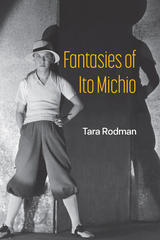 Fantasies of Ito Michio
Tara Rodman
University of Michigan Press, 2024 Born in Japan and trained in Germany, dancer and choreographer Ito Michio (1893–1961) achieved prominence in London before moving to the U.S. in 1916 and building a career as an internationally acclaimed artist. During World War II, Ito was interned for two years, and then repatriated to Japan, where he contributed to imperial war efforts by creating propaganda performances and performing revues for the occupying Allied Forces in Tokyo. Throughout, Ito continually invented stories of voyages made, artists befriended, performances seen, and political activities carried out—stories later dismissed as false.
Fantasies of Ito Michio argues that these invented stories, unrealized projects, and questionable political affiliations are as fundamental to Ito’s career as his ‘real’ activities, helping us understand how he sustained himself across experiences of racialization, imperialism, war, and internment. Tara Rodman reveals a narrative of Ito’s life that foregrounds the fabricated and overlooked to highlight his involvement with Japanese artists, such as Yamada Kosaku and Ishii Baku, and global modernist movements. Rodman offers “fantasy” as a rubric for understanding how individuals such as Ito sustain themselves in periods of violent disruption and as a scholarly methodology for engaging the past.
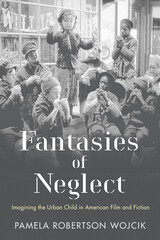 Fantasies of Neglect: Imagining the Urban Child in American Film and Fiction
Pamela Robertson Wojcik
Rutgers University Press, 2016 In our current era of helicopter parenting and stranger danger, an unaccompanied child wandering through the city might commonly be viewed as a victim of abuse and neglect. However, from the early twentieth century to the present day, countless books and films have portrayed the solitary exploration of urban spaces as a source of empowerment and delight for children. Fantasies of Neglect explains how this trope of the self-sufficient, mobile urban child originated and considers why it persists, even as it goes against the grain of social reality. Drawing from a wide range of films, children’s books, adult novels, and sociological texts, Pamela Robertson Wojcik investigates how cities have simultaneously been demonized as dangerous spaces unfit for children and romanticized as wondrous playgrounds that foster a kid’s independence and imagination. Charting the development of free-range urban child characters from Little Orphan Annie to Harriet the Spy to Hugo Cabret, and from Shirley Temple to the Dead End Kids, she considers the ongoing dialogue between these fictional representations and shifting discourses on the freedom and neglect of children. While tracking the general concerns Americans have expressed regarding the abstract figure of the child, the book also examines the varied attitudes toward specific types of urban children—girls and boys, blacks and whites, rich kids and poor ones, loners and neighborhood gangs. Through this diverse selection of sources, Fantasies of Neglect presents a nuanced chronicle of how notions of American urbanism and American childhood have grown up together.
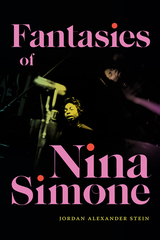 Fantasies of Nina Simone
Jordan Alexander Stein
Duke University Press, 2024 Since her death in 2003, Nina Simone has been the subject of an astonishing number of rereleased, remastered, and remixed albums and compilations as well as biographies, films, viral memes, samples, and soundtracks. In Fantasies of Nina Simone, Jordan Alexander Stein uses an archive of Simone’s performances, images, and writings to examine the space between our collective and individual fantasies about Simone the performer, civil rights activist, and icon, and her own fantasies about herself. Stein outlines how Simone gave voice to personal fantasies through releasing dozens of covers of her white male contemporaries. With her covers of George Harrison, the Bee Gees, Bob Dylan, and others, Simone explored and claimed the power and perspective that come with race and gender privilege. Looking at examples from Simone’s four-decade genre-bending career—from songbook standards, jazz, and pop to folk, junkanoo, and reggae—and at her work’s many uptakes and afterlives, Stein mobilizes the psychoanalytic concept of fantasy to build a black feminist history with and for this multifaceted performing artist.
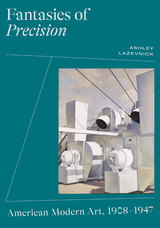 Fantasies of Precision: American Modern Art, 1908-1947
Ashley Lazevnick
University of Minnesota Press, 2023 Redefining the artistic movement that helped shape American modernism
In the early decades of the twentieth century, a loose contingent of artists working in and around New York City gave rise to the aesthetic movement known as precisionism, primarily remembered for its exacting depictions of skyscrapers, factories, machine parts, and other symbols of a burgeoning modernity. Although often regarded as a singular group, these artists were remarkably varied in their subject matter and stylistic traits. Fantasies of Precision excavates the surprising ties that connected them, exploring notions of precision across philosophy, technology, medicine, and many other fields. Bookended by discussions of the landmark First Biennial Exhibition of Painting at the Whitney Museum in 1932, this study weaves together a series of interconnected chapters illuminating the careers of Charles Sheeler, Georgia O’Keeffe, and Charles Demuth. Built on a theoretical framework of the writing of modernist poets Marianne Moore and William Carlos Williams, Fantasies of Precision outlines an “ethos of precision” that runs through the diverse practices of these artists, articulating how the broad range of enigmatic imagery they produced was underpinned by shared strategies of restraint, humility, and slowness. Questioning straightforward modes of art historical classification, Ashley Lazevnick redefines the concept that designated the precisionist movement. Through its cross-disciplinary approach and unique blend of historiography and fantasy, Fantasies of Precision offers a comprehensive reevaluation of one of the defining movements of artistic modernism.
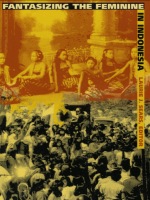 Fantasizing the Feminine in Indonesia
Laurie J. Sears, ed.
Duke University Press, 1996 The stories of Indonesian women have often been told by Indonesian men and Dutch men and women. This volume asks how these representations—reproduced, transformed, and circulated in history, ethnography, and literature—have circumscribed feminine behavior in colonial and postcolonial Indonesia. Presenting dialogues between prominent scholars of and from Indonesia and Indonesian women working in professional, activist, religious, and literary domains, the book dissolves essentialist notions of “women” and “Indonesia” that have arisen out of the tensions of empire. The contributors examine the ways in which Indonesian women and men are enmeshed in networks of power and then pursue the stories of those who, sometimes at great political risk, challenge these powers. In this juxtaposition of voices and stories, we see how indigenous patriarchal fantasies of feminine behavior merged with Dutch colonial notions of proper wives and mothers to produce the Indonesian government’s present approach to controlling the images and actions of women. Facing the theoretical challenge of building a truly cross-cultural feminist analysis, Fantasizing the Feminine takes us into an ongoing conversation that reveals the contradictions of postcolonial positionings and the fragility of postmodern identities. This book will be welcomed by readers with interests in contemporary Indonesian politics and society as well as historians, anthropologists, and other scholars concerned with literature, gender, and cultural studies. Contributors. Benedict R. O’G. Anderson, Sita Aripurnami, Jane Monnig Atkinson, Nancy K. Florida, Daniel S. Lev, Dédé Oetomo, Laurie J. Sears, Ann Laura Stoler, Saraswati Sunindyo, Julia I. Suryakusuma, Jean Gelman Taylor, Sylvia Tiwon, Anna Lowenhaupt Tsing, Diane L. Wolf
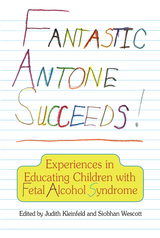 Fantastic Antone Succeeds: Experiences in Educating Children with Fetal Alcohol Syndrome
Judith Kleinfeld
University of Alaska Press, 1993 For every 1,000 live births in Alaska, between 2.1 and 6.6 babies are affected by FAS--a rate 6 to 18 times higher than the national average. Fantastic Antone Succeeds!describes in concrete, specific ways how to educate children with fetal alcohol syndrome/fetal alcohol effects (FAS/FAE). It communicates an optimistic message that is both true and appealing: with the right education, delivered by a nurturing individual in the home or in the school, many alcohol-affected children thrive. The book consists of separate chapters written in a popular and accessible style by psychologists, teachers, and birth and adoptive parents of alcohol-affected children. Many chapters are personal stories with emotional power. A birth mother, for example, tells of her anguish when she realizes that she has recovered from her own alcoholism but her daughter cannot. This mother describes how she dealt with her grief, how she told her daughter the truth, her daughter's relief at finally understanding what was wrong, and how they both developed ways of overcoming her daughter's learning problems. Other chapters describe how experienced teachers have learned to organize classrooms where alcohol-affected children can thrive and how therapists have learned to work with parents. One chapter summarizes medical knowledge of FAS/FAE and offers information useful for understanding a child's learning and behavioral problems and devising educational approaches. The book includes lists of important resources, organizations to contact, and descriptions of effective classroom practices for teachers. Without minimizing the seriousness of FAS/FAE and the first priority prevention, Fantastic Antone Succeeds provides practical tools and strategies that can help alcohol-affected individuals and their families lead happier, more productive lives.
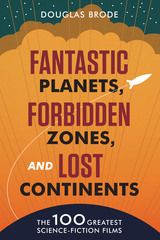 Fantastic Planets, Forbidden Zones, and Lost Continents: The 100 Greatest Science-Fiction Films
By Douglas Brode
University of Texas Press, 2015 Whether you judge by box office receipts, industry awards, or critical accolades, science fiction films are the most popular movies now being produced and distributed around the world. Nor is this phenomenon new. Sci-fi filmmakers and audiences have been exploring fantastic planets, forbidden zones, and lost continents ever since George Méliès’ 1902 film A Trip to the Moon. In this highly entertaining and knowledgeable book, film historian and pop culture expert Douglas Brode picks the one hundred greatest sci-fi films of all time. Brode’s list ranges from today’s blockbusters to forgotten gems, with surprises for even the most informed fans and scholars. He presents the movies in chronological order, which effectively makes this book a concise history of the sci-fi film genre. A striking (and in many cases rare) photograph accompanies each entry, for which Brode provides a numerical rating, key credits and cast members, brief plot summary, background on the film’s creation, elements of the moviemaking process, analysis of the major theme(s), and trivia. He also includes fun outtakes, including his top ten lists of Fifties sci-fi movies, cult sci-fi, least necessary movie remakes, and “so bad they’re great” classics—as well as the ten worst sci-fi movies (“those highly ambitious films that promised much and delivered nil”). So climb aboard spaceship Brode and journey to strange new worlds from Metropolis (1927) to Guardians of the Galaxy (2014).
Fantastic Stories
Abram Tertz
Northwestern University Press, 1986 Abram Tertz is the pseudonym of Andrei Sinyavsky, the exile Soviet dissident writer whose works have been compared to fabulists like Kafka and Borges. Tertz's settings are exotic but familiar and as compelling as those of lunatics and mystics. This edition contains the nightmarish "Pkhentz," a story missing from the first English edition.
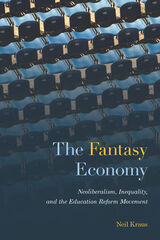 The Fantasy Economy: Neoliberalism, Inequality, and the Education Reform Movement
Kraus, Neil
Temple University Press, 2023 Wage stagnation, growing inequality, and even poverty itself have resulted from decades of neoliberal decision making, not the education system, writes Neil Kraus in his urgent call to action, The Fantasy Economy. Kraus claims the idea that both the education system and labor force are chronically deficient was aggressively and incorrectly promoted starting in the Reagan era, when corporate interests and education reformers emphasized education as the exclusive mechanism providing the citizenry with economic opportunity. However, as this critical book reveals, that is a misleading articulation of the economy and education system rooted in the economic self-interests of corporations and the wealthy.
The Fantasy Economy challenges the basic assumptions of the education reform movement of the last few decades. Kraus insists that education cannot control the labor market and unreliable corporate narratives fuel this misinformation. Moreover, misguided public policies, such as accountability and school choice, along with an emphasis on workforce development and STEM over broad-based liberal arts education, have only produced greater inequality.
Ultimately, The Fantasy Economy argues that education should be understood as a social necessity, not an engine of the neoliberal agenda. Kraus’ book advocates for a change in conventional thinking about economic opportunity and the purpose of education in a democracy.
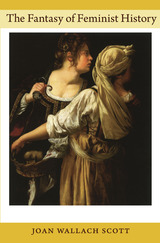 The Fantasy of Feminist History
Joan Wallach Scott
Duke University Press, 2012 In The Fantasy of Feminist History, Joan Wallach Scott argues that feminist perspectives on history are enriched by psychoanalytic concepts, particularly fantasy. Tracing the evolution of her thinking about gender over the course of her career, the pioneering historian explains how her search for ways to more forcefully insist on gender as mutable rather than fixed or stable led her to psychoanalytic theory, which posits sexual difference as an insoluble dilemma. Scott suggests that it is the futile struggle to hold meaning in place that makes gender such an interesting historical object, an object that includes not only regimes of truth about sex and sexuality but also fantasies and transgressions that refuse to be regulated or categorized. Fantasy undermines any notion of psychic immutability or fixed identity, infuses rational motives with desire, and contributes to the actions and events that come to be narrated as history. Questioning the standard parameters of historiography and feminist politics, Scott advocates fantasy as a useful, even necessary, concept for feminist historical analysis.
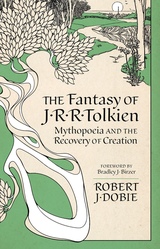 The Fantasy of J.R.R. Tolkien: Mythopeia and the Recovery of Creation
Robert J. Dobie, Robert J.
Catholic University of America Press, 2024 At the heart of Tolkienian fantasy is “recovery,” a “cleaning of the windows” of our perception that we may learn to see the world again in all its strange and bewildering beauty. And, for Tolkien, to recover the world anew is to recover a sense of the world as a meaningful act of creation by a living and loving Creator. How does Tolkien accomplish this? Through “sub-creation” or mythopoeia, the “fashioning of myth.” For it is in creating an imaginary world ourselves through poetry, fairy-story and myth that we come to “see” our “primary world” as itself an act of creation. In short, mythopoetic creation, far from being “lies breathed through silver,” uncovers for us the truth of our world as a story of creation.
This book is the first sustained attempt to show not only the centrality of recovery to Tolkien’s fantasy but the way in which his fantasy affects that primal recovery in every reader. In doing so, this book not only reveals the marvelous philosophical and theological riches that underlie Tolkien’s fantasy but shows how his mythopoetic fiction allows the recovery and enactment of these riches in our own lives. In these pages we learn how Tolkien’s fantasy addresses fundamental problems such as the relation of language to reality, the nature of evil, the distinction between time and eternity and its relation to death and immortality, the paradox of necessity and free will in human action and the grounds for providential hope in a “happy ending.” Indeed, The Fantasy of J.R.R. Tolkien shows how for Tolkien fantasy has within itself a healing power through which intellectual, moral and existential paradoxes are resolved and our intellectual and perceptual faculties are made whole again so that they may participate with renewed vigor in the life-giving work of creation of every sort.
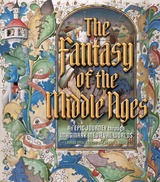 The Fantasy of the Middle Ages: An Epic Journey through Imaginary Medieval Worlds
Larisa Grollemond
J. Paul Getty Trust, The, 2022 This abundantly illustrated book is an illuminating exploration of the impact of medieval imagery on three hundred years of visual culture. From the soaring castles of Sleeping Beauty to the bloody battles of Game of Thrones, from Middle-earth in The Lord of the Rings to mythical beasts in Dungeons & Dragons, and from Medieval Times to the Renaissance Faire, the Middle Ages have inspired artists, playwrights, filmmakers, gamers, and writers for centuries. Indeed, no other historical era has captured the imaginations of so many creators. This volume aims to uncover the many reasons why the Middle Ages have proven so applicable to a variety of modern moments from the eighteenth through the twenty-first century. These “medieval” worlds are often the perfect ground for exploring contemporary cultural concerns and anxieties, saying much more about the time and place in which they were created than they do about the actual conditions of the medieval period. With over 140 color illustrations, from sources ranging from thirteenth-century illuminated manuscripts to contemporary films and video games, and a preface by Game of Thrones costume designer Michele Clapton, The Fantasy of the Middle Ages will surprise and delight both enthusiasts and scholars.
This title is published to accompany an exhibition on view at the J. Paul Getty Museum at the Getty Center from June 21 to September 11, 2022.
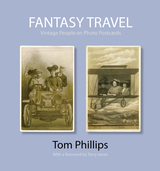 Fantasy Travel: Vintage People on Photo Postcards
Tom Phillips
Bodleian Library Publishing, 2012 To celebrate the acquisition of the archive of distinguished artist Tom Phillips, the Bodleian Library asked the artist to assemble and design a series of books drawing on his themed collection of over 50,000 photographic postcards. These encompass the first half of the twentieth century, a period in which, thanks to the ever cheaper medium of photography, ordinary people could afford to own portraits of themselves. Each of the books in the series contains two hundred images chosen from a visually rich vein of social history. Their covers also feature thematically linked paintings, specially created for each title, from Phillips’s signature work, A Humument. Fantasy Travel compiles postcards of people sitting playfully in studio mock-ups of airplanes, cars, speedboats, and hot air balloons. Such modes of travel were beyond the means of most people at the time, and photographic studios allowed them to indulge their flights of fancy—and take away the resulting postcard. Each of these unique and visually stunning books give a rich glimpse of forgotten times and will be greatly valued by art and history lovers alike.
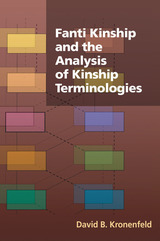 Fanti Kinship and the Analysis of Kinship Terminologies
David B. Kronenfeld
University of Illinois Press, 2008 This book examines Fanti kinship terminology from a variety of analytic and formal perspectives. Based on work with a broad number of informants, David B. Kronenfeld details and analyzes internal variation in usage within the Fanti community, shows the relationship between terminology and social groups and communicative usage, and relates these findings to major theoretical work on kinship and on the intersections of language, thought, and culture. The terminological analysis in this study employs a great variety of formal approaches, assesses the strengths and weaknesses of each approach, and covers a wide range of types of usage. This work also performs a systematic, formal analysis of behavior patterns among kin, joining this approach with the analysis of a kinship terminological system. Rather than treating kinship terminology as a special, isolated piece of culture, this study also ties its analysis to more general semantic and cultural theoretical issues. Including computational and comparative studies of kinship terminologies, this volume represents the fullest analysis of any kinship terminological system in the ethnographic record.
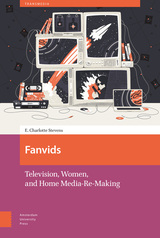 Fanvids: Television, Women, and Home Media Re-Use
E. Charlotte Stevens
Amsterdam University Press, 2020 Fanvids, or vids, are short videos created in media fandom. Made from television and film sources, they are neither television episodes nor films; they resemble music videos but are non-commercial fanworks that construct creative and critical analyses of existing media. The creators of fanvids-called vidders-are predominantly women, whose vids prompt questions about media historiography and pleasures taken from screen media. Vids remake narratives for an attentive fan audience, who watch with a deep knowledge of the source text(s), or an interest in the vid form itself. Fanvids: Television, Women, and Home Media Re-Use draws on four decades of vids, produced on videotape and digitally, to argue that the vid form's creation and reception reveals a mode of engaged spectatorship that counters academic histories of media audiences and technologies. Vids offer an answer to the prevalent questions: What happens to television after it's been aired? How and by whom is it used and shared? Is it still television?
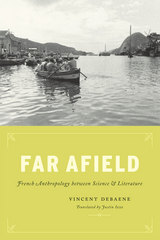 Far Afield: French Anthropology between Science and Literature
Vincent Debaene
University of Chicago Press, 2014 Anthropology has long had a vexed relationship with literature, and nowhere has this been more acutely felt than in France, where most ethnographers, upon returning from the field, write not one book, but two: a scientific monograph and a literary account. In Far Afield—brought to English-language readers here for the first time—Vincent Debaene puzzles out this phenomenon, tracing the contours of anthropology and literature’s mutual fascination and the ground upon which they meet in the works of thinkers from Marcel Mauss and Georges Bataille to Claude Lévi-Strauss and Roland Barthes.
The relationship between anthropology and literature in France is one of careful curiosity. Literary writers are wary about anthropologists’ scientific austerity but intrigued by the objects they collect and the issues they raise, while anthropologists claim to be scientists but at the same time are deeply concerned with writing and representational practices. Debaene elucidates the richness that this curiosity fosters and the diverse range of writings it has produced, from Proustian memoirs to proto-surrealist diaries. In the end he offers a fascinating intellectual history, one that is itself located precisely where science and literature meet.
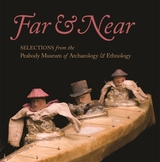 Far & Near: Selections from the Peabody Museum of Archaeology & Ethnology
Pamela Gerardi
Harvard University Press Since its founding in 1886, the Peabody Museum of Archaeology and Ethnology at Harvard University has been collecting, caring for, exhibiting, and researching objects produced by human cultures around the world. This handsomely illustrated, highly portable volume presents a selection of more than 90 objects in honor of the museum’s 150th anniversary in 2016–2017. Dating from Paleolithic times to the present and originating from the Arctic Circle to South Pacific, these selections represent but a fraction of the 1.4 million pieces in the museum’s collections. They range in character from the sacred to the profane, the utilitarian to the highly decorative, the deeply symbolic to the outrageously whimsical.
Chosen by the museum’s curators and staff, the works presented in Far & Near provide a tantalizing glimpse into the wonders of the collections of the Peabody Museum and reflect the skilled artistry of human hands and the endless creativity of the human mind.
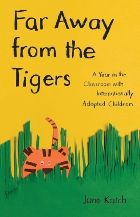 Far Away from the Tigers: A Year in the Classroom with Internationally Adopted Children
Jane Katch
University of Chicago Press, 2011 Over the past three decades, more than a quarter of a million children have become citizens of the United States through international adoption. Kindergarten teacher Jane Katch recently found herself with three such children in her class: Katya, born in Russia, Jasper, from Cambodia, and Caleb, from Romania. Each child had spent early years in an orphanage, and each had unique educational and emotional needs. How Katch came to recognize and respond to those needs makes up the journey of discovery in this moving and insightful book.
Interspersing vignettes from the classroom and conversations with the children’s parents, Far Away from the Tigers first explores Katch’s misunderstandings and mistakes as she struggles to help the children adjust to school. As Katch learns more about each child’s preadoption past, she gradually realizes that they were deprived of some basic learning experiences and she needs to find ways to fill those gaps. Before Caleb can learn to read or write, he must improve his verbal skills by learning nursery rhymes, stories, and songs. Katya, who came from an overcrowded orphanage, now needs to be the center of attention; before learning how to form real friendships, she first must gain control over more basic functions such as eating and sleeping. And the youngest, Jasper, needs steady encouragement to play with classmates instead of sitting alone practicing his handwriting.
Slowly, through trial and error and by drawing on the deep understanding and intense commitment of the children’s parents, Katch discovers the importance—and joy—of allowing each child time to develop in his or her own way. Beautifully told, wise, and candid, Far Away from the Tigers is a gift for parents, teachers, and anyone who cares for children growing up in a new home.
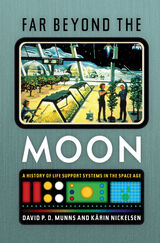 Far Beyond the Moon: A History of Life Support Systems in the Space Age
Kärin Nickelsen and David P.D. Munns
University of Pittsburgh Press, 2021 From the beginning of the space age, scientists and engineers have worked on systems to help humans survive for the astounding 28,500 days (78 years) needed to reach another planet. They’ve imagined and tried to create a little piece of Earth in a bubble travelling through space, inside of which people could live for decades, centuries, or even millennia. Far Beyond the Moon tells the dramatic story of engineering efforts by astronauts and scientists to create artificial habitats for humans in orbiting space stations, as well as on journeys to Mars and beyond. Along the way, David P. D. Munns and Kärin Nickelsen explore the often unglamorous but very real problem posed by long-term life support: How can we recycle biological wastes to create air, water, and even food in meticulously controlled artificial environments? Together, they draw attention to the unsung participants of the space program—the sanitary engineers, nutritionists, plant physiologists, bacteriologists, and algologists who created and tested artificial environments for space based on chemical technologies of life support—as well as the bioregenerative algae systems developed to reuse waste, water, and nutrients, so that we might cope with a space journey of not just a few days, but months, or more likely, years.
Far Country: Poems
Kyce Bello
University of Nevada Press, 2025 In her new collection, Far Country, Kyce Bello documents an unmapped territory in which loss becomes a medium for deepening connection and love. In poems firmly rooted in the Southwestern bioregion, landscape and language are layered into vivid sequences where the personal, collective, and ecological merge and illuminate one another. Ultimately, the collection forms a new map of the unknown, traveling to a realm in which worlds both seen and unseen are fused into a rich tapestry of lyric exploration and wonder. In the poem, “The Bend,” a woman asks, “How do we survive this?” Far Country is not an answer, but a witnessing and embrace that becomes its own act of resilience and transformation.
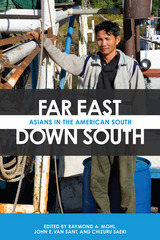 Far East, Down South: Asians in the American South
Edited by Raymond A. Mohl, John E. Van Sant, and Chizuru Saeki
University of Alabama Press, 2016 Offers a collection of ten insightful essays that illuminate the little-known history and increasing presence of Asian immigrants in the American southeast
In sharp contrast to the “melting pot” reputation of the United States, the American South—with its history of slavery, Jim Crow, and the civil rights movement—has been perceived in stark and simplistic demographic terms. In Far East, Down South, editors Raymond A. Mohl, John E. Van Sant, and Chizuru Saeki provide a collection of essential essays that restores and explores an overlooked part of the South’s story—that of Asian immigration to the region.
These essays form a comprehensive overview of key episodes and issues in the history of Asian immigrants to the South. During Reconstruction, southern entrepreneurs experimented with the replacement of slave labor with Chinese workers. As in the West, Chinese laborers played a role in the development of railroads. Japanese farmers also played a more widespread role than is usually believed. Filipino sailors recruited by the US Navy in the early decades of the twentieth century often settled with their families in the vicinity of naval ports such as Corpus Christi, Biloxi, and Pensacola. Internment camps brought Japanese Americans to Arkansas. Marriages between American servicemen and Japanese, Korean, Filipina, Vietnamese, and nationals in other theaters of war created many thousands of blended families in the South. In recent decades, the South is the destination of internal immigration as Asian Americans spread out from immigrant enclaves in West Coast and Northeast urban areas.
Taken together, the book’s essays document numerous fascinating themes: the historic presence of Asians in the South dating back to the mid-nineteenth century; the sources of numerous waves of contemporary Asian immigration to the South; and the steady spread of Asians out from the coastal port cities. Far East, Down South adds a vital new dimension to popular understanding of southern history.
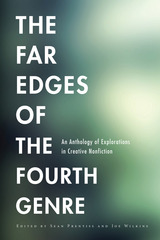 The Far Edges of the Fourth Genre: An Anthology of Explorations in Creative Nonfiction
Sean Prentiss
Michigan State University Press, 2014 Though creative nonfiction has been around since Montaigne, St. Augustine, and Seneca, we’ve only just begun to ask how this genre works, why it functions the way it does, and where its borders reside. But for each question we ask, another five or ten questions roil to the surface. And each of these questions, it seems, requires a more convoluted series of answers. What’s more, the questions students of creative nonfiction are drawn to during class discussions, the ones they argue the longest and loudest, are the same ideas debated by their professors in the hallways and at the corner bar. In this collection, sixteen essential contemporary creative nonfiction writers reflect on whatever far, dark edge of the genre they find themselves most drawn to. The result is this fascinating anthology that wonders at the historical and contemporary borderlands between fiction and nonfiction; the illusion of time on the page; the mythology of memory; poetry, process, and the use of received forms; the impact of technology on our writerly lives; immersive research and the power of witness; a chronology and collage; and what we write and why we write.
Contributors: Nancer Ballard, H. Lee Barnes, Kim Barnes, Mary Clearman Blew, Joy Castro, Robin Hemley, Judith Kitchen, Brenda Miller, Ander Monson, Dinty W. Moore, Sean Prentiss, Lia Purpura, Erik Reece, Jonathan Rovner, Bob Shacochis, and Joe Wilkins.
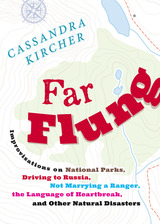 Far Flung: Improvisations on National Parks, Driving to Russia, Not Marrying a Ranger, the Language of Heartbreak, and Other Natural Disasters
Cassandra Kircher
West Virginia University Press, 2019 Cassandra Kircher was in her twenties when she was hired by the National Park Service, landing a life that allowed her to reinvent herself. For four years she collected entrance fees and worked in the dispatch office before being assigned as the first woman to patrol an isolated backcountry district of Colorado’s Rocky Mountain National Park. There, Kircher encountered wonder and beauty, accidents and death. Although she always suspected the mountains might captivate her, she didn’t realize that her adopted landscape would give her strength to confront where she was from—both the Midwest that Willa Cather fans will recognize, and a childhood filled with problems and secrets. Divided and defined by geographic and psychological space, Far Flung begins in the Rockies but broadens its focus as Kircher negotiates places as distant as Alaska’s Kenai Peninsula, Russia’s Siberian valleys, and Wisconsin’s lake country, always with Colorado as a heartfelt pivot. These thirteen essays depict a woman coming to terms with her adoration for the wilds of the West and will resonate with all of us longing to better understand ourselves and our relationships to the places and people we love most.
Far from Atlantis: Poems
Raymond Luczak
Gallaudet University Press, 2023 In Far from Atlantis, Raymond Luczak makes use of traditional poetic forms to tell the stories of two vastly different worlds: the Upper Peninsula of Michigan, which often looks like an island on the map, and the fabled island of Atlantis. The poems in this collection are rooted in the natural world, with the power of water as a means for escaping the cruelty and tedium of an ableist society. While recounting his troubled childhood as the only deaf person in a large hearing family, Luczak aligns himself with mythological, monstrous, and superhuman beings who, like him, exist on the margins. The narratives invoked and the worlds created in these poems are both autoethnographic and speculative, and include figures lost to history like Lucy Frances Fitzhigh Hooe and Frances Peterson, along with 1970s pop culture icons like the Six Million Dollar Man and Wonder Woman.
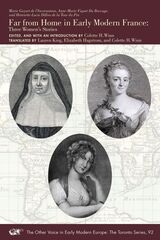 Far from Home in Early Modern France: Three Women’s Stories
Marie Guyart de l’Incarnation, Anne-Marie Fiquet du Boccage, and Henriette-Lucie Dillon de la Tour du Pin
Iter Press, 2022 An engaging account of women’s travels in the early modern period.
This book showcases three Frenchwomen who ventured far from home at a time when such traveling was rare. In 1639, Marie de l’Incarnation embarked for New France where she founded the first Ursuline monastery in present-day Canada. In 1750, Madame du Boccage set out at the age of forty on her first “grand tour.” She visited England, the Netherlands, and Italy where she experienced firsthand the intellectual liberty offered there to educated women. As the Reign of Terror gripped France, the Marquise de la Tour du Pin fled to America with her husband and their two young children, where they ran a farm from 1794 to 1796. The writings these women left behind detailing their respective journeys abroad represent significant contributions to early modern travel literature. This book makes available to anglophone readers three texts that are rich in both historical and literary terms.
 Far from Home: Memories of World War II and Afterward
Mary Herring Wright
Gallaudet University Press, 2005 “She’s got no more business there than a pig has with a Bible.” That’s what her father said when Mary Herring announced that she would be moving to Washington, DC, in late 1942. Recently graduated from the North Carolina School for Black Deaf and Blind Students, Mary had been invited to the nation’s capital by a cousin to see a specialist about her hearing loss. Though nothing could be done about her deafness, Mary quickly proved her father wrong by passing the civil service examination with high marks. Far from Home: Memories of World War II and Afterward, the second installment of her autobiography, describes her life from her move to Washington to the present. Mary soon became a valued employee for the Navy, maintaining rosters for the many servicemen in war theaters worldwide. Her remarkable gift for detail depicts Washington in meticulous layers, a sleepy Southern town force-grown into a dynamic geopolitical hub. Life as a young woman amid the capital’s Black middle class could be warm and fun, filled with visits from family and friends, and trips home to Iron Mine for tearful, joyous reunions. But the reality of the times was never far off. On many an idyllic afternoon, she and her friends found somber peace in Arlington Cemetery, next to the grave of the sole Unknown Soldier at that time. During an evening spent at the U.S.O., one hearing woman asked how people like her could dance, and Mary answered, “With our feet.” She became a pen pal to several young servicemen, but did not want to know why some of them suddenly stopped writing. Despite the close friends and good job that she had in Washington, the emotional toll caused Mary to return to her family home in Iron Mine, NC. There, she rejoined her family and resumed her country life. She married and raised four daughters, and recounts the joys and sorrows she experienced through the years, particularly the loss of her parents. Her blend of the gradual transformation of Southern rural life with momentous events such as Hurricane Hazel creates an extraordinary narrative history. The constant in Far from Home remains the steady confidence that Mary Herring Wright has in herself, making her new memoir a perfect companion to her first.
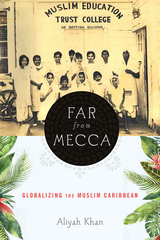 Far from Mecca: Globalizing the Muslim Caribbean
Aliyah Khan
Rutgers University Press, 2020 Honorable Mention, 2022 MLA Prize for a First Book
Far from Mecca: Globalizing the Muslim Caribbean is the first academic work on Muslims in the English-speaking Caribbean. Khan focuses on the fiction, poetry, and music of Islam in Guyana, Trinidad, and Jamaica. Combining archival research, ethnography, and literary analysis, Khan argues for a historical continuity of Afro- and Indo-Muslim presence and cultural production in the Caribbean. Case studies explored range from Arabic-language autobiographical and religious texts written by enslaved Sufi West Africans in nineteenth-century Jamaica, to early twentieth-century fictions of post-indenture South Asian Muslim indigeneity and El Dorado, to the attempted government coup in 1990 by the Jamaat al-Muslimeen in Trinidad, as well as the island’s calypso music, to contemporary judicial cases concerning Caribbean Muslims and global terrorism. Khan argues that the Caribbean Muslim subject, the “fullaman,” a performative identity that relies on gendering and racializing Islam, troubles discourses of creolization that are fundamental to postcolonial nationalisms in the Caribbean.
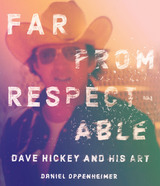 Far From Respectable: Dave Hickey and His Art
Daniel Oppenheimer
University of Texas Press, 2021 Finalist, 2021 Writers’ League of Texas Book Award
Regarded as both a legend and a villain, the critic Dave Hickey has inspired generations of artists, art critics, musicians, and writers. His 1993 book The Invisible Dragon became a cult hit for its potent and provocative critique of the art establishment and its call to reconsider the role of beauty in art. His next book, 1997’s Air Guitar, introduced a new kind of cultural criticism—simultaneously insightful, complicated, vulnerable, and down-to-earth—that propelled Hickey to fame as an iconoclastic thinker, loved and loathed in equal measure, whose influence extended beyond the art world. Far from Respectable is a focused, evocative exploration of Hickey’s work, his impact on the field of art criticism, and the man himself, from his Huck Finn childhood to his drug-fueled periods as both a New York gallerist and Nashville songwriter to, finally, his anointment as a tenured professor and MacArthur Fellow. Drawing on in-person interviews with Hickey, his friends and family, and art world comrades and critics, Daniel Oppenheimer examines the controversial writer’s distinctive takes on a broad range of subjects, including Norman Rockwell, Robert Mapplethorpe, academia, Las Vegas, basketball, country music, and considers how Hickey and his vision of an “ethical, cosmopolitan paganism” built around a generous definition of art is more urgently needed than ever before.
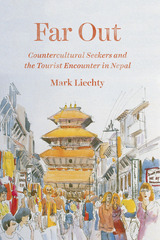 Far Out: Countercultural Seekers and the Tourist Encounter in Nepal
Mark Liechty
University of Chicago Press, 2017 Westerners have long imagined the Himalayas as the world’s last untouched place and a repository of redemptive power and wisdom. Beatniks, hippie seekers, spiritual tourists, mountain climbers—diverse groups of people have traveled there over the years, searching for their own personal Shangri-La. In Far Out, Mark Liechty traces the Western fantasies that captured the imagination of tourists in the decades after World War II, asking how the idea of Nepal shaped the everyday cross-cultural interactions that it made possible.
Emerging from centuries of political isolation but eager to engage the world, Nepalis struggled to make sense of the hordes of exotic, enthusiastic foreigners. They quickly embraced the phenomenon, however, and harnessed it to their own ends by building tourists’ fantasies into their national image and crafting Nepal as a premier tourist destination. Liechty describes three distinct phases: the postwar era, when the country provided a Raj-like throwback experience for rich Americans; Nepal’s emergence as an exotic outpost of hippie counterculture in the 1960s; and its rebranding into a hip adventure destination, which began in the 1970s and continues today. He shows how Western projections of Nepal as an isolated place inspired creative enterprises and, paradoxically, allowed locals to participate in the global economy. Based on twenty-five years of research, Far Out blends ethnographic analysis, a lifelong passion for Nepal, and a touch of humor to produce the first comprehensive history of what tourists looked for—and found—on the road to Kathmandu.
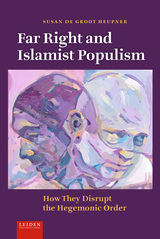 Far Right and Islamist Populism: How They Disrupt the Hegemonic Order
Susan de Groot Heupner
Leiden University Press, 2024 Far Right and Islamist Populism: How They Disrupt the Hegemonic Order undertakes the challenging task of bringing dialectical logic together with the empirical study of discursive and ideological antagonisms. Examining the European far right, as represented by Geert Wilders and his Party for Freedom in the Netherlands, and Hizb ut-Tahrir as the Islamic interlocutor, the book demonstrates the inner logic by which two opposing political ideologies create a single populist front. In their shared practice of opposing and disrupting the hegemonic order, they draw on each other to encapsulate the contradictory desires and discontents of people in a mutually constituted Muslim Other. These cleavages and dissonances are reconciled in a bipolar identification of the 'people' versus the 'ummah' to establish a new hegemonic formation. The book demonstrates the reality and seriousness of this symbiotic relationship for pluralist democracies and harmonious coexistence. It explores how different, alternative formulations of populism drawing on the works of Ernesto Laclau, Chantal Mouffe, Slavoj Zizek, among others, can function as a counter-movement to the influence of far right and Islamist populist politics.
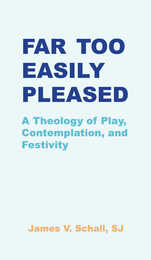 Far Too Easily Pleased: A Theology of Play, Contemplation, and Festivity
James V., SJ Schall
Catholic University of America Press, 2020 Far Too Easily Pleased was originally published in 1976, although it is just as relevant today. Catholic Education Press is thrilled to be able to bring this book back into print. To summarize the volume we can do better than to excerpt part of Fr. Schall’s introduction to the 1976 edition:
This book is intended to be a helpful stimulus to incite the reader to survey the truly exciting literature in this field and to assist in organizing personal reflection about the basic themes of game, play, wonder, rite, contemplation and festivity, themes that the theology of play naturally suggests. For it can be truly said that those who have not yet been initiated into this style of religious and cultural thought have been missing highly liberating and ennobling levels of our heritage. For those who already know what rewards are to be found in play and game, it is hoped that this book can again be a fresh and different approach to wonder and fascination, to the curiously marvelous life we have been given.
James V. Schall, SJ, (1928-2019) was an American Jesuit Roman Catholic priest, teacher, writer, and philosopher. He retired in 2012 after a long tenure as a professor of political philosophy at Georgetown University Among his many books are The Universe We Think In; Political Philosophy and Revelation: A Catholic Reading; The Mind That Is Catholic: Philosophical and Political Essays; Schall on Chesterton: Timely Essays on Timeless Paradoxes and At the Limits of Political Philosophy: From “Brilliant Errors” To Things of Uncommon Importance (all CUA Press).
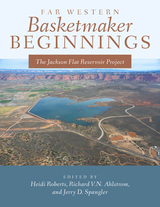 Far Western Basketmaker Beginnings: The Jackson Flat Project
Edited by Heidi Roberts, Richard V. N. Ahlstrom, and Jerry D. Spangler
University of Utah Press, 2022 The Basketmaker presence in southern Utah has traditionally been viewed as peripheral to developments originating in the Four Corners region. Far Western Basketmaker Beginnings offers an entirely new and provocative perspective—that the origins of farming on the northern Colorado Plateau are instead found far to the west along Kanab Creek.
This volume, based on the results of excavations at Jackson Flat Reservoir south of Kanab, examines a litany of firsts: the earliest Archaic pithouses ever found in this region, evidence that maize farmers arrived here a thousand years earlier than previously reported, and the emergence of a complex Basketmaker farming and foraging culture. Specialists in Far Western Puebloan culture, architecture, settlement patterns, subsistence, chronometry, and prehistoric technologies make a compelling case that farming was introduced to the region by San Pedro immigrants, and that the blending of farmers with local foraging groups gave rise to a Basketmaker lifeway by 200 BC. This book marks a giant leap forward in archaeologists’ understanding of the earliest maize farmers north and west of the Colorado River.
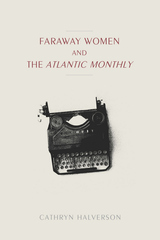 Faraway Women and the "Atlantic Monthly"
Cathryn Halverson
University of Massachusetts Press, 2019 Winner of the 2020 Thomas J. Lyon Award from the Western Literature Association
In the first decades of the twentieth century, famed Atlantic Monthly editor Ellery Sedgwick chose to publish a group of nontraditional writers he later referred to as “Faraway Women,” working-class authors living in the western United States far from his base in Boston. Cathryn Halverson surveys these enormously popular Atlantic contributors, among them a young woman raised in Oregon lumber camps, homesteaders in Wyoming, Idaho, and Alberta, and a world traveler who called Los Angeles and Honolulu home.
Faraway Women and the “Atlantic Monthly” examines gender and power as it charts an archival journey connecting the least remembered writers and readers of the time with one of its most renowned literary figures, Gertrude Stein. It shows how distant friends, patrons, publishers, and readers inspired, fostered, and consumed the innovative life narratives of these unlikely authors, and it also tracks their own strategies for seizing creative outlets and forging new protocols of public expression. Troubling binary categories of east and west, national and regional, and cosmopolitan and local, the book recasts the coordinates of early twentieth-century American literature.
 Fare Well, Illyria
David Binder
Central European University Press, 2014 As a reporter for the prestigious New York Times the author interviewed many of the leading political figures of the Balkans (Illyria). He also sought out the area's intellectuals, many of them critical of their leaders, and everyday people who provide a sense of daily life. He devotes a chapter to each ethnic group from Vlachs to Serbs, talks about their differences and similarities, and does so without giving offense. He also provides a short historical account of the various places he visits, which deepens our understanding of the local cultures. The reader meets people from all walks of life: politicians, poets, literary and art critics, journalists, handymen, car mechanics, fishermen and farmers. From Milovan Djilas and Nicolae Ceausescu to Markos Vafiadis and Sali Berisha to the Serbian “majstor” Misha and an un-named Bosnian bar singer, Binder's book features a remarkable gallery of people whose presence contributes authenticity and human warmth to the narrative.
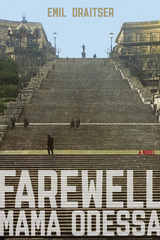 Farewell, Mama Odessa: A Novel
Emil Draitser
Northwestern University Press, 2020 Set in the summer of 1979 at the height of the movement to free Soviet Jewry, Farewell, Mama Odessa is an autobiographical novel whose intertwined storylines follow a variety of people—dissidents, victims of ethnic discrimination, and black marketeers among them—as they bid farewell to their beloved hometown of Odessa, Ukraine, and make their way to the West. At the book’s center is Boris, a young writer thwarted by state censorship and antisemitism. With an Angora kitten for his companion and together with other émigrés, he puts the old country in his rear-view mirror and sets out on a journey that will take him to Bratislava, Vienna, Rome, and New York on his way to Los Angeles. Will Boris be able to rekindle his creative passion and inspiration in the West? Will other Jewish émigrés fit into the new society, so much different than the one they left behind? With humor and compassion, Farewell, Mama
Odessa describes the émigrés’ attempts at adjustment to the free world.
Farewell Tangier
Salma El Moumni
Seagull Books, 2026 A bold, intimate debut novel that follows a young Moroccan woman’s flight from shame to self-reclamation.
For Alia, being a teenager in Tangier means constantly facing a gauntlet of unwanted encounters by men in the streets who look her over, grab her, or make comments about her body. At night, in the privacy of her bedroom, Alia begins to take photos of her body in order to understand what those men see when they look at her, becoming her own voyeur. When Alia’s photos somehow end up on the internet, she decides to flee the country, as the photos violate Moroccan law. She seeks refuge in Lyon, France, but is unable to escape the past.
Farewell Tangier is a searing exploration of the male gaze and its potential to shatter a young woman’s life, exploring themes of desire, dissociation, and exile. It is both a feminist critique of the policing of female bodies and an affecting narrative of one young woman’s struggle with her identity.
 Farewell to Freedom: A Western Genealogy of Liberty
Riccardo Baldissone
University of Westminster Press, 2018 Understandings of freedom are often discussed in moral, theological, legal and political terms, but they are not often set in a historical perspective, and they are even more rarely considered within their specific language context. From Homeric poems to contemporary works, the author traces the words that express the various notions of freedom in Classical Greek, Latin, and medieval and modern European idioms. Examining writers as varied as Plato, Aristotle, Luther, La Boétie, Hobbes, Rousseau, Kant, Stirner, Nietzsche, and Foucault among others, this theoretical mapping shows old and new boundaries of the horizon of freedom. The book suggests the possibility of transcending these boundaries on the basis of a different theorization of human interactions, which constructs individual and collective subjects as processes rather than entities. This construction shifts and disseminates the very locus of freedom, whose vocabulary would be better recast as a relational middle path between autonomous and heteronomous alternatives.
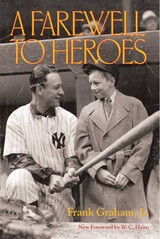 A Farewell to Heroes
Frank Graham Jr. Foreword by W.C. Heinz
Southern Illinois University Press, 2003 Originally published in 1981 and long out of print, this dual autobiography covers five unforgettable decades of the New York sporting life from 1915 to 1965. Told initially from the point of view of Frank Graham, premier sportswriter for TheNew York Sun, A Farewell to Heroes also includes the chronicles of Frank, Jr., who picks up the narrative as he becomes a sports journalist in his own right. Frank Graham, Sr., was a self-taught writer known for his uncanny ability to capture the high drama of a game-winning play or the color of a fight mob’s conversation in spare, straightforward prose. As a reporter, he covered the rough-and-tumble Giants of John McGraw’s day and continued through boxing’s greatest era, spanning the reigns of Jack Dempsey and Joe Louis. As the younger Frank tells more of the story, we watch Lou Gehrig take Babe Ruth’s place as the Yankees’ star and then trace his glorious career to its tragic conclusion. We see firsthand the legendary Branch Rickey and Jackie Robinson and boxing’s brief but golden age on television in the 1950s. Aided by sixteen photographs and preserving the most masterful of his father’s writing while adding to it the best of his own, Frank Graham, Jr., has given the sports fan A Farewell to Heroes, perhaps the ultimate sports reminiscence of a time when the romance of sport gave life a golden hue, when heroes still roamed the earth. “In what he calls this ‘kind of dual autobiography,’ he is his father’s son, having learned to look and listen as his father did and still go his own way,” says W. C. Heinz, longtime sportswriter for The New York Sun, in his new foreword to this paperback edition.
Farewell to Matyora
Valentin Rasputin
Northwestern University Press, 1995 A fine example of Village Prose from the post-Stalin era, Farewell to Matyora decries the loss of the Russian peasant culture to the impersonal, soulless march of progress.
It is the final summer of the peasant village of Matyora. A dam will be completed in the fall, destroying the village. Although their departure is inevitable, the characters over when, and even whether, they should leave. A haunting story with a heartfelt theme, Farewell to Matyora is a passionate plea for humanity and an eloquent cry for a return to an organic life.
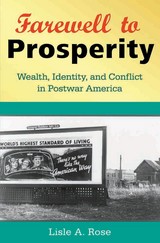 Farewell to Prosperity: Wealth, Identity, and Conflict in Postwar America
Lisle A. Rose
University of Missouri Press, 2014 Farewell to Prosperity is a provocative, in-depth study of the Liberal and Conservative forces that fought each other to shape American political culture and character during the nation’s most prosperous years. The tome’s central theme is the bitter struggle to fashion post–World War II society between a historic Protestant Ethic that equated free-market economics and money-making with Godliness and a new, secular Liberal temperament that emerged from the twin ordeals of depression and world war to stress social justice and security. Liberal policies and programs after 1945 proved key to the creation of mass affluence while encouraging disadvantaged racial, ethnic, and social groups to seek equal access to power. But liberalism proved a zero-sum game to millions of others who felt their sense of place and self progressively unhinged. Where it did not overturn traditional social relationships and assumptions, liberalism threatened and, in the late sixties and early seventies, fostered new forces of expression at radical odds with the mindset and customs that had previously defined the nation without much question. When the forces of liberalism overreached, the Protestant Ethic and its millions of estranged religious and economic proponents staged a massive comeback under the aegis of Ronald Reagan and a revived Republican Party. The financial hubris, miscalculations, and follies that followed ultimately created a conservative overreach from which the nation is still recovering. Post–World War II America was thus marked by what writer Salman Rushdie labeled in another context “thin-skinned years of rage-defined identity politics.” This “politics” and its meaning form the core of the narrative. Farewell to Prosperity is no partisan screed enlisting recent history to support one side or another. Although absurdity abounds, it knows no home, affecting Conservative and Liberal actors and thinkers alike.
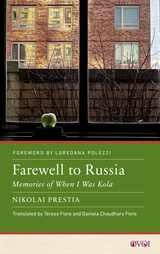 Farewell to Russia: Memories of When I was Kola
Nikolai Prestia
Rutgers University Press, 2026 Growing up in 1990s Russia in a family marked by poverty, substance abuse, and neglect, Kola and his sister are eventually admitted into the orphanage system. Here, Kola comes face to face with a different but equally daunting challenge – navigating an unfamiliar and sometimes hostile world haunted by the absence of his mother. The ensuing journey, which eventually culminates in the adoption by an Italian family, alternates moments of both trauma and deliverance, while asking fundamental questions about our ability to reconcile ourselves with unfathomable loss.
Harrowing yet lyrical, Nikolai Prestia’s prize-winning 2021 novel is a testament to the duality of memory in its ability to both hurt and heal, and to the transformative power of those figures, adults and peers alike, who contribute to a child’s development. Translated into English as part of a collaboration between the author and a mother-daughter translator duo, the novel serves up a wrenching glimpse into the back stories that often precede the adoption of an older child.
Farewell to the Priestly Writing? The Current State of the Debate
Friedhelm Hartenstein
SBL Press, 2020 Now available in English
In discussions of the origin of the Pentateuch, the Priestly source traditionally constitutes an undisputed reference point for different source-critical models, and it is the only literary layer with concise terminology and a theological conception that can be extracted from a non-Priestly context. This English translation of Abschied von der Priesterschrift? Zum Stand der Pentateuchdebatte revisits the scholarly debate surrounding the Documentary Hypothesis and the so-called Priestly material’s position either as an independent written source or as a redaction within the books of Genesis through Deuteronomy. Contributors include Christoph Berner, Erhard Blum, Jan Christian Gertz, Christoph Levin, Eckart Otto, Christophe Nihan, and Thomas Römer.
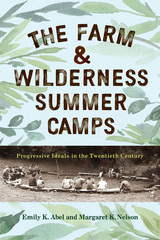 The Farm & Wilderness Summer Camps: Progressive Ideals in the Twentieth Century
Emily K. Abel
Rutgers University Press, 2024 Although summer camps profoundly impact children, they have received little attention from scholars. The well-known Farm & Wilderness (F&W) camps, founded in 1939 by Ken and Susan Webb, resembled most other private camps of the same period in many ways, but F&W also had some distinctive features. Campers and staff took pride in the special ruggedness of the surrounding environment, and delighted in the exceptional rigor of the camping trips and the work projects. Importantly, the Farm & Wilderness camps were some of the first private camps to become racially integrated.The Farm & Wilderness Summer Camps: Progressive Ideals in the Twentieth Century traces these camps, both unique and emblematic of American youth culture of the twentieth century, from their establishment in the late 1930s to the end of the twentieth century. Emily K. Abel and Margaret K. Nelson explore how ideals considered progressive in the 1940s and 1950s had to be reconfigured by the camps to respond to shifts in culture and society as well as to new understandings of race and ethnicity, social class, gender, and sexual identity. To illustrate this change, the authors draw on over forty interviews with former campers, archival materials, and their own memories. This book tells a story of progressive ideals, crises of leadership, childhood challenges, and social adaptation in the quintessential American summer camp.
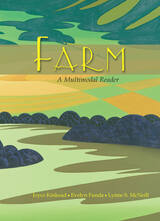 Farm: A Multimodal Reader
Joyce Kinkead
Utah State University Press, 2020 In Farm, Joyce Kinkead, Evelyn Funda, and Lynne S. McNeill explore the culture of agriculture through a diverse and multicultural collection of fiction, poetry, essays, art, recipes, and folklore. This reader views farming through a variety of lenses, leading students to consider what farms, farming, and farmers mean, and have meant, to culture in the United States.
The text guides the reader through the Jeffersonian idealism of the yeoman farmer (“cultivators of the earth are the chosen people of God”) to literature of the nineteenth and twentieth centuries (Thoreau’s “The Bean-Field,” Cather’s prairie trilogy, Steinbeck’s The Grapes of Wrath, and Carpenter’s Farm City). Contributors provide historical context for the literary texts, such as discussion of sharecropping vs. plantation systems, the rise of agribusiness and chemical farming, and Teddy Roosevelt’s Country Life Commission. Written, visual, and oral texts ask readers to consider the farm in art (Grant Wood), ecology (Rachel Carson’s Silent Spring), children’s and young adult literature (classic children’s books, YA novels, nonfiction, and poetry), advertising (from early boosterism to Chipotle videos), print culture (farmers’ market and victory garden posters from both world wars), folklore (food culture, vintners, and veterinarian practices), popular culture (Farm Aid concerts), and much more. Each reading is supported by activities, exercises, projects, and visual rhetorical elements that further connect students to agriculture and the essential work of farmers.
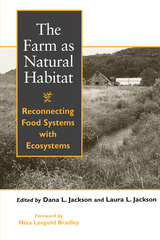 The Farm as Natural Habitat: Reconnecting Food Systems With Ecosystems
Edited by Dana L. Jackson and Laura L. Jackson; Foreword by Nina Leopold Bradley
Island Press, 2002 The Farm as Natural Habitat challenges the idea that productive agriculture must come at the expense of nature. Drawing on real-world examples and contributions from farmers, conservationists, and restoration ecologists, this book presents a vision for farmland that produces food and supports biodiversity—where thriving ecosystems and working landscapes coexist.
Instead of treating agricultural lands as ecological sacrifice zones, the authors explore how sustainable practices can restore native vegetation, protect wildlife, and revitalize soils—without compromising food security. From innovative crop rotation systems to field border restoration and wildlife-friendly grazing, the book shows how farmers can work with nature to build resilience on their land.
Contributors from across disciplines—including sustainable agriculture, conservation biology, and environmental restoration—offer case studies, science-based insights, and practical strategies for transforming degraded farmland into multifunctional landscapes. Whether you're a farmer, landowner, conservation planner, or policy advocate, you'll find ideas that are both visionary and grounded in success.
At its heart, The Farm as Natural Habitat makes the case that farms can be more than food factories—they can be places of renewal, health, and ecological balance. This is essential reading for anyone committed to restoring biodiversity, sustaining rural communities, and creating a more just and resilient food system.
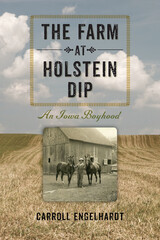 The Farm at Holstein Dip: An Iowa Boyhood
Carroll Engelhardt
University of Iowa Press, 2012 Carroll Engelhardt’s parents grew up in homes without electricity on farms without tractors and began farming in the same way. As a farm boy in northeastern Iowa, he thought that history happened only to important people in earlier times and more exotic places. After decades of teaching, he at last perceived that history happens to us all, and he began writing this book. Set within the thoughtfully presented contexts of the technological revolution in American agriculture, the Second World War, the Cold War, and the emerging culture of affluence, The Farm at Holstein Dip is both a loving coming-of-age memoir and an educational glimpse into rural and small-town life of the 1940s and 1950s. Engelhardt writes about growing up in a spacious farmhouse where life was centered in the kitchen and frugality dictated that every purchase be weighed carefully. His chores grew up with him: he fed chickens and gathered eggs at age six, rode a horse on the hayfork at nine or ten, milked cows by hand at eleven, and hired out to other farmers to load bales in the field and work in the haymow at fifteen. The simple pleasures and predictable routines of a Saturday night at the movies in nearby Elkader, Pioneer Days on the 4th of July, Confirmation Sunday, class picnics, and baseball and basketball games play out against a background of rural decline, alternating economic uncertainty and prosperity, and Cold War anxiety—next to polio, he most feared Communist subversion and atomic blasts. The values and contradictions imparted by this evolving mix of international, national, and local cultures shaped his coming of age. Engelhardt brings us into the world of his fourth-generation farm family, who lived by the family- and faith-based work ethic and concern for respectability they had inherited from their German and Norwegian ancestors. His writing has a particularly Iowa flavor, a style that needs no definition to those who live in the state. Readers will discover the appeal of his wry, humorous, and kind observations and appreciate his well-informed perspective on these transformative American decades.
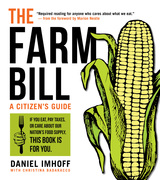 The Farm Bill: A Citizen's Guide
Daniel Imhoff with Christina Badaracco
Island Press, 2018 The farm bill is one of the most important pieces of legislation the American president signs. Negotiated every five to seven years, it has tremendous implications for food production, nutrition assistance, habitat conservation, international trade, and much more. Yet at nearly 1,000 pages, it is difficult to understand for policymakers, let alone citizens. In this primer, Dan Imhoff and Christina Badaracco translate all the “legalese" and political jargon into an accessible, graphics-rich 200 pages.
Readers will learn the basic elements of the bill, its origins and history, and perhaps most importantly, the battles that will determine the direction of food policy in the coming years. The authors trace how the legislation has evolved, from its first incarnation during the Great Depression, to today, when America has become the world’s leading agricultural powerhouse. They explain the three main components of the bill—farm subsidies, food stamps or SNAP, and conservation programs—as well as how crucial public policies are changing.
With a new farm bill just signed into law, we all need to understand the implications of food policy. What’s the impact of crop insurance? How does SNAP actually work? What would it take to create a healthier, more sustainable food system? These are questions that affect not only farmers, but everyone who eats. If you care about the answers, The Farm Bill is your guide.
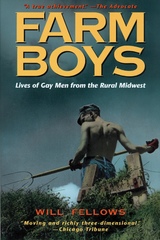 Farm Boys: Lives of Gay Men from the Rural Midwest
Collected and Edited by William D. Fellows
University of Wisconsin Press, 1998 Homosexuality is often seen as a purely urban experience, far removed from rural and small-town life. Farm Boys undermines that cliche by telling the stories of more than three dozen gay men, ranging in age from 24 to 84, who grew up in farm families in the midwestern United States. Whether painful, funny, or matter-of-fact, these plain-spoken accounts will move and educate any reader, gay or not, from farm or city.
“When I was fifteen, the milkman who came to get our milk was beautiful. This is when I was really getting horny to do something with another guy. I waited every day for him to come. I couldn’t even talk to him, couldn’t think of anything to say. I just stood there, watching him, wondering if he knew why.”—Henry Bauer, Minnesota
“When I go back home, I feel a real connection with the land—a tremendous feeling, spiritual in a way. It makes me want to go out into a field and take my shoes off and put my feet right on the dirt, establish a real physical connection with that place. I get homesick a lot, but I don’t know if I could ever go back there and live. It’s not the kind of place that would welcome me if I lived openly, the way that I would like to live. I would be shunned.”—Martin Scherz, Nebraska
“If there is a checklist to see if your kid is queer, I must have hit every one of them—all sorts of big warning signs. I was always interested in a lot of the traditional queen things—clothes, cooking, academics, music, theater. A farm boy listening to show tunes? My parents must have seen it coming.”—Joe Shulka, Wisconsin
“My favorite show when I was growing up was ‘The Waltons’. The show’s values comforted me, and I identified with John-Boy, the sensitive son who wanted to be a writer. He belonged there on the mountain with his family, yet he sensed that he was different and that he was often misunderstood. Sometimes I still feel like a misfit, even with gay people.”—Connie Sanders, Illinois
“Agriculture is my life. I like working with farm people, although they don’t really understand me. When I retire I want the word to get out [that I’m gay] to the people I’ve worked with—the dairy producers, the veterinarians, the feed salesmen, the guys at the co-ops. They’re going to be shocked, but their eyes are going to be opened.”—James Heckman, Indiana
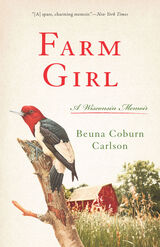 Farm Girl: A Wisconsin Memoir
Beuna Coburn Carlson
University of Wisconsin Press, 2020 When Bunny Coburn was growing up, neighbors came together in times of hardship. No matter the trouble, they faced it with determination, camaraderie, and resourcefulness. In the midst of the Great Depression, despite record-breaking heat and crop failure, growing up on the family farm was nevertheless filled with bucolic pleasures.
Farm Girl is Beuna "Bunny" Coburn Carlson's loving tribute to the gently rolling hills of western Wisconsin. With an inviting and fluid voice, she shares intimate moments of happinesses from her childhood: collecting butternuts for homemade maple candy, watching her father read by the flickering light of a kerosene lamp, and the joy of finding a juicy orange at the bottom of a Christmas stocking. Underlying each vignette is the courage of a strong family surviving adversity and finding comfort in one another. Hers is a memoir that readers can dip in and out of with pleasure.
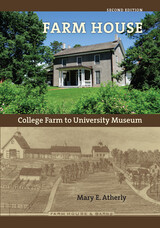 Farm House: College Farm to University Museum
Atherly, Mary E.
University of Iowa Press, 1995 Now available for the first time in paperback, Farm House tells the story of the first structure built on the Iowa State University campus. Mary Atherly provides a comprehensive history of the Farm House from its founding days to its role as the center of activity for the new college to its second life as a welcoming museum visited by thousands each year. This second edition includes a discussion of the archaeological dig of 1991, which carefully excavated the area under the Farm House, and thoroughly documents the extensive renovation and reconstruction of the exterior of the house during the 1990s. New photographs add to the first edition’s rich array of images and a foreword by Gregory Geoffroy, ISU’s president since 2001, adds to its historical content. The history of Iowa’s only land-grant university and its impressive cultural and educational impact on the state and the nation as it evolved from model farm to college to modern multipurpose university is inseparable from the history of the Farm House.
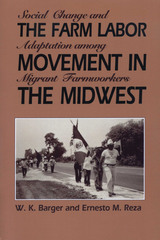 The Farm Labor Movement in the Midwest: Social Change and Adaptation among Migrant Farmworkers
By W. K. Barger and Ernesto M. Reza
University of Texas Press, 1994 The Farm Labor Organizing Committee (FLOC) was founded by Baldemar Velásquez in 1967 to challenge the poverty and powerlessness that confronted migrant farmworkers in the Midwest. This study documents FLOC's development through its first quarter century and analyzes its effectiveness as a social reform movement. Barger and Reza describe FLOC's founding as a sister organization of the United Farm Workers (UFW). They devote particular attention to FLOC's eight-year struggle (1978-1986) with the Campbell Soup company that led to three-way contracts for improved working conditions between FLOC, Campbell Soup, and Campbell's tomato and cucumber growers in Ohio and Michigan. This contract significantly changed the structure of agribusiness and instituted key reforms in American farm labor. The authors also address the processes of social change involved in FLOC actions. Their findings are based on extensive research among farmworkers, growers, and representatives of agribusiness, as well as personal involvement with FLOC leaders and supporters.
The Farm on Badger Creek: Memories of a Midwest Girlhood
Peggy Prilaman Marxen
Wisconsin Historical Society Press, 2021 Peggy Prilaman Marxen grew up near the town of Meteor in northwestern Wisconsin’s Sawyer County, isolated by geography yet surrounded by close-knit extended family. Multiple generations of her family witnessed changes to rural Wisconsin that altered the fabric of their lives and the lives of all in their community, including the introduction of new farming techniques, school consolidation, and revolutions in transportation and technology. They supplemented their subsistence herd of dairy cows by hunting, fishing, and selling timber and maple syrup. For many years, her home, like those of her neighbors, lacked indoor plumbing, electricity, and a telephone. As a young child, Peggy attended a one-room schoolhouse and walked, biked, or sledded the three miles to school and back, no matter the weather.
 Farm Policies and Politics in the Truman Years
Allen J. Matusow
Harvard University Press In this thorough and lively study, Allen Matusow, tracing the history of government policy on food and agriculture during the Truman administration, relates the process by which the United States government overcame disharmony among its own politicians and farmers to save Europe from famine in the years immediately following World War II.
The Department of Agriculture, which had asserted that “food will win the war and write the peace,” was often reluctant to believe its own slogan. Elucidating the policies involved in postwar planning for both foreign trade and domestic farm production, Matusow shows how the memorable fear of huge surpluses created by the Depression in the 1930s had affected the attitudes of government officials toward agricultural planning and production from 1945 to 1952.
Interpreting the origins and defeat of the Brannan Plan, the author finds remnants of that policy evident in the current adoption of production payments. Farm Policies and Politics in the Truman Years offers new insight into the creative agricultural policy which emerged, from hesitant beginnings, in Truman's second term.
 Farm Prices: Myth and Reality
Willard W. Cochrane
University of Minnesota Press, 1958 Farm Prices was first published in 1958. Minnesota Archive Editions uses digital technology to make long-unavailable books once again accessible, and are published unaltered from the original University of Minnesota Press editions. Few domestic questions are so controversial as the farm problem, yet the average city man finds it difficult to understand the basic issues involved. In this book Professor Cochrane describes for the layman the nature and causes of the commercial farm problem and the rural poverty problem and provides the basis for making informed judgments about these problems and their possible solutions. He analyzes the economic and political forces which are at work in the farm economy, explains the organization of modern agriculture, showing the unique structure of farming, and draws a vivid picture of the revolutionary developments which have taken place in agriculture. He discusses behavior patterns of farmers and consumers as they relate to the farm economy, and the role of government in the farm industry and in the lives of farmers. Farm prices are constantly fluctuating, and out of this price variability emerge such serious and continuing farm problems as variable incomes, low incomes over extended periods, and uncertainty in production planning. In this study Professor Cochrane seeks to get at the root of the trouble by, first, exploring and exposing what he considers a basic fallacy in our present day thinking and approach to the farm problem. This is the widely held myth of an automatically adjusting agriculture, an agriculture that is always out of balance because of an "emergency." This myth, he points out, beclouds the issues involved in the whole farm problem. The farm price myth splits two ways in the public mind, Mr. Cochrane explains, but these divergent attitudes represent differences only in mechanics, not in principle, and they are equally effective in obscuring the real picture. One segment of the public believes that agriculture, if left alone for a while, would gravitate toward and stabilize at some desirable level and pattern of prices, production, and incomes. The other segment believes that the same result would occur if agriculture were given a temporary, helping hand by the government. Mr. Cochrane shows the fallacies inherent in both of these convictions by presenting an integrated, overall picture of farm price behavior as it really exists. On a basis of this realistic view, he presents the two alternatives or hard policy choices that he believes the American farmer faces today. Willard W. Cochrane is Professor Emeritus of Agricultural and Applied Economics at the University of Minnesota. He is the author of a number of books, including The City Man's Guide to the Farm Problem and Farm Prices: Myth and Reality. He previously served as an economist with the Food and Agriculture Organization of the United Nations and with the U.S. Department of Agriculture. He is the co-author of Economics of American Agriculture and Economics of Consumption.
Farm Recipes and Food Secrets from the Norske Nook
Helen Myhre and Mona Vold
University of Wisconsin Press, 2001 When a small-town cafe in Osseo, Wisconsin, was praised for "some of the world’s best pies" in the best-selling guidebook Roadfood, Helen Myhre and the Norske Nook became famous! The same home-cooking tips Helen shared on "Late Night with David Letterman" she now shares with you. From breads to gravies, meats to jellies, and of course, that celebrated sour cream raisin pie, Myhre shows you how to bring a rich, thick slice of Midwest cooking into your kitchen.
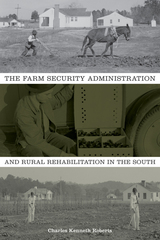 The Farm Security Administration and Rural Rehabilitation in the South
Charles Kenneth Roberts
University of Tennessee Press, 2015 This book fills an important void in the historical literature on New Deal reform and significantly updates Sidney Baldwin’s 1968 book on the FSA. Through the lens of the programs of the FSA, Charles Kenneth Roberts does an excellent job of relating how New Deal programs attempted to rehabilitate poor, rural southerners.”
—Aaron D. Purcell, author of Arthur Morgan: A Progressive Vision for American Reform
As the roaring twenties turned into the depressed thirties, southern farmers, far removed from the urban prosperity Americans had enjoyed during the 1920s heyday, found already difficult farming conditions greatly intensified by the onset of the Great Depression. Agricultural incompetence plagued the rural South through the misuse of land, depletion of natural resources, and a system of single-crop farming that failed to adequately provide for growing families on small farms, especially in the cotton-producing Southeast. Poverty and desperation came to define the farming communities of the rural South, both in reality and in Americans’ collective conscious.
In The Farm Security Administration and Rural Rehabilitation in the South, Charles Kenneth Roberts traces the administrative and political history of the Farm Security Administration (FSA) and reconciles the administration’s goals with Franklin D. Roosevelt’s overall vision for the New Deal. Roberts takes a grassroots approach to dissecting the FSA’s history. While other studies have focused on FSA photography or community building, or even policy making in terms of top-down government directives, Roberts focuses on the people and state governments who faced an immediate need to aid southern farmers within their own borders and to boost their states’ crumbling agricultural economic bases. Roberts focuses on rural rehabilitation as a key aspect of the FSA and defines the agency’s legacy not in terms of its failures but rather in terms of an idealistic program whose modest successes were ultimately too few to effect real change for southern farmers.
Though Roosevelt failed to adequately recognize the plight of the southern farmer and political infighting hindered many of the administration’s goals, the creation of the FSA stands as one of the first efforts to provide sustained relief to struggling southern farmers. In light of other federal programs of the era, the FSA may seem like a mere footnote to the New Deal outside of its small but revered photography program. But, as Roberts shows, the FSA’s legacy has endured to the present day.
Charles Kenneth Roberts is a lecturer in history at Georgia Perimeter College. His articles have appeared in the Alabama Review, Southern Historian, and Agricultural History.
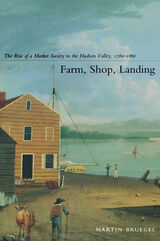 Farm, Shop, Landing: The Rise of a Market Society in the Hudson Valley, 1780–1860
Martin Bruegel
Duke University Press, 2002 At the turn of the nineteenth century, when the word “capital” first found its way into the vocabulary of mid-Hudson Valley residents, the term irrevocably marked the profound change that had transformed the region from an inward-looking, rural community into a participant in an emerging market economy. In Farm, Shop, Landing Martin Bruegel turns his attention to the daily lives of merchants, artisans, and farmers who lived and worked along the Hudson River in the decades following the American Revolution to explain how the seeds of capitalism were spread on rural U.S. soil.
Combining theoretical rigor with extensive archival research, Bruegel’s account diverges from other historiographies of nineteenth-century economic development. It challenges the assumption that the coexistence of long-distance trade, private property, and entrepreneurial activity lead to one inescapable outcome: a market economy either wholeheartedly embraced or entirely rejected by its members. When Bruegel tells the story of farmer William Coventry struggling in the face of bad harvests, widow Mary Livingston battling her tenants, blacksmith Samuel Fowks perfecting the cast-iron plough, and Hannah Bushnell sending her butter to market, Bruegel shows that the social conventions of a particular community, and the real struggles and hopes of individuals, actively mold the evolving economic order. Ultimately, then, Farm, Shop, Landing suggests that the process of modernization must be understood as the result of the simultaneous and often contentious interplay of social and economic spheres.
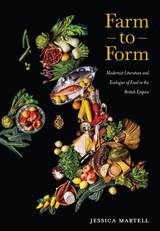 Farm to Form: Modernist Literature and Ecologies of Food in the British Empire
Jessica Martell
University of Nevada Press, 2020 In this groundbreaking book, Jessica Martell investigates the relationship between industrial food and the emergence of literary modernisms in Britain and Ireland. By the early twentieth century, the industrialization of the British Empire’s food system had rendered many traditional farming operations, and attendant agrarian ways of life, obsolete. Weaving insights from modernist studies, food studies, and ecocriticism, Farm to Form contends that industrial food made nature “modernist,” a term used as literary scholars understand it—stylistically disorienting, unfamiliar, and artificial but also exhilarating, excessive, and above all, new. Martell draws in part upon archives in the United Kingdom but also presents imperial foodways as an extended rehearsal for the current era of industrial food supremacy. She analyzes how pastoral mode, anachronism, fragmentation, and polyvocal narration reflect the power of the literary arts to reckon with—and to resist—the new “modernist ecologies” of the twentieth century.
Deeply informed by Martell’s extensive knowledge of modern British, Irish, American, and World Literatures, this progressive work positions modernism as central to the study of narratives of resistance against social and environmental degradation. Analyzed works include those of Thomas Hardy, E. M. Forster, Virginia Woolf, Joseph Conrad, George Russell, and James Joyce.
In light of climate change, fossil fuel supremacy, nutritional dearth, and other pressing food issues, modernist texts bring to life an era of crisis and anxiety similar to our own. In doing so, Martell summons the past as a way to employ the modernist term of “defamiliarizing” the present so that entrenched perceptions can be challenged. Our current food regime is both new and constantly evolving with the first industrial food trades. Studying earlier cultural responses to them invites us to return to persistent problems with new insights and renewed passion.
 Farmcarts to Fords: A History of the Military Ambulance, 1790-1925
John S. Haller
Southern Illinois University Press, 1992
This book is the first history of the techniques, systems, and technologies used to evacuate wounded from the battlefield. Historically, the word ambulance described those facilities that provided temporary assistance to the wounded, thus distinguishing them from stationary hospitals where military personnel received more permanent care. Americans and British, however, applied the term to the two-to four-wheeled transport conveyances that carried wounded from the battlefield to the war hospitals.
With the aid of fifty-four illustrations, John S. Haller traces the histories of both meanings of the word from the Napoleonic era through the Great War and its aftermath. He concentrates on the development of British and American evacuation procedures and technology with a focus on hand conveyances and wheeled vehicles. His intent is not to cover all aspects of medical evacuation but to accurately recount the common medical evacuation problems, incongruities, and controversies that existed for warring nations.
Farmers, Hunters, and Colonists: Interaction Between the Southwest and the Southern Plains
Edited by Katherine A. Spielmann
University of Arizona Press, 1991 Eight contributors discuss early trade relations between Plains and Pueblo farmers, the evolution of interdependence between Plains hunter-gatherers and Pueblo farmers between 1450 and 1700, and the later comanchero trade between Hispanic New Mexicans and the Plains Comanche.
Contributors:
Timothy G. Baugh
Judith A. Habicht-Mauche
Frances Levine
Christopher Lintz
David H. Snow
John D. Speth
Katherine A. Spielmann
David R. Wilcox
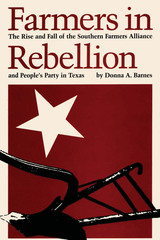 Farmers in Rebellion: The Rise and Fall of the Southern Farmers Alliance and People's Party in Texas
By Donna A. Barnes
University of Texas Press, 1984 The years after the Civil War brought struggle to the Southern farmer as the economic mainstay of the South—cotton—steadily dropped in price. Prompted by hard times, farmers in Lampasas County, Texas, gathered in 1877 to discuss what could be done. From these modest origins emerged the National Farmers Alliance and Industrial Union, later known as the Southern Farmers Alliance, a powerful protest movement that played an important role in the formation in 1892 of a new political force, the People's party. In the "solid South," particularly in Texas, large numbers of voters abandoned the Democratic party for the new party. Yet despite this support, the decline of the People's party after 1894 was swift. Farmers in Rebellion recounts the compelling story of these two crucial and closely related movements. Donna A. Barnes examines their developmental histories, asking such important questions as: Under what conditions do protest movements remain weak? Under what conditions do they prosper, amassing large numbers of supporters? And under what conditions do successful protest movements lose their momentum and die? The author explores these complex questions with deft use of archival data that allows her to reflect on the adequacy of the past sociological answers to these questions. Farmers in Rebellion is a book rich in detail and scope in its look at a critical juncture in the growth of national populist movements. Of interest to sociologists, historians, and political scientists, it stands as an important contribution to our understanding of a pivotal time in Texas, and national, history.
Farmers, Kings, and Traders: The People of Southern Africa, 200-1860
Martin Hall
University of Chicago Press, 1990 In this overview of the origins and development of black societies in southern Africa, Martin Hall reconstructs the region's past by throughly examining both the archaeological and the historical records. Beginning with the gradual southward movement of the earliest farmers nearly two thousand years ago, Hall tracks the emergence of precolonial states such as Mapungubwe and Great Zimbabwe. Farmers, Kings, and Traders concludes with the devastating effects of colonialism.
Through a close reading of the accounts of early travelers, colonialists, archaeologists, and historians, Hall places in context the often contradictory histories that have been written of this region. The result is an illuminating look at how ideas about the past have themselves changed over time.
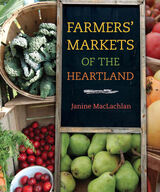 Farmers' Markets of the Heartland
Janine MacLachlan
University of Illinois Press, 2012 A visual feast of the Midwest's homegrown bounty In this splendidly illustrated book, food writer and self-described farm groupie Janine MacLachlan embarks on a tour of seasonal markets and farmstands throughout the Midwest, sampling local flavors from Michigan, Ohio, Indiana, Illinois, Missouri, Iowa, Minnesota, and Wisconsin. She conducts delicious research as she meets farmers, tastes their food, and explores how their businesses thrive in the face of an industrial food supply. She tells the stories of a pair of farmers growing specialty crops on a few acres of northern Michigan for just a few months out of the year, an Ohio cattle farm that has raised heritage beef since 1820, and a Minnesota farmer who tirelessly champions the Jimmy Nardello sweet Italian frying pepper. Along the way, she savors vibrant red carrots, slurpy peaches, vast quantities of specialty cheeses, and some of the tastiest pie to cross anyone's lips. Informed by debates about eating local, seasonal crops, organic farming, sanitation, and biodiversity, Farmers' Markets of the Heartland tantalizes with special recipes from farm-friendly chefs and dozens of luscious color photographs that will inspire you to harvest the homegrown flavors in your own neighborhood.
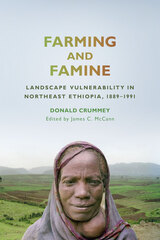 Farming and Famine: Landscape Vulnerability in Northeast Ethiopia, 1889–1991
Donald E. Crummey; Edited by James C. McCann
University of Wisconsin Press, 2018 In modern times, Ethiopia has suffered three grievous famines, two of which—in 1973–74 and in 1984–85—caught the world's attention. It is often assumed that population increase drove Ethiopia's farmers to overexploit their environment and thus undermine the future of their own livelihoods, part of a larger global process of deforestation. In Farming and Famine, Donald E. Crummey explores and refutes these claims based on his research in Wallo province, an epicenter of both famines.
Crummey draws on photographs comparing identical landscapes in 1937 and 1997 as well as interviews with local farmers, among other sources. He reveals that forestation actually increased due to farmers' tree-planting initiatives. More broadly, he shows that, in the face of growing environmental stress, Ethiopian farmers have innovated and adapted. Yet the threat of famine remains because of constricted access to resources and erratic rainfall. To avoid future famines, Crummey suggests, Ethiopia's farmers must transform agricultural productivity, but they cannot achieve that on their own.
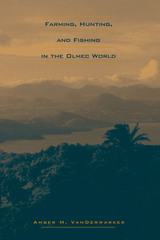 Farming, Hunting, and Fishing in the Olmec World
By Amber M. VanDerwarker
University of Texas Press, 2006 The Olmec who anciently inhabited Mexico's southern Gulf Coast organized their once-egalitarian society into chiefdoms during the Formative period (1400 BC to AD 300). This increase in political complexity coincided with the development of village agriculture, which has led scholars to theorize that agricultural surpluses gave aspiring Olmec leaders control over vital resources and thus a power base on which to build authority and exact tribute. In this book, Amber VanDerwarker conducts the first multidisciplinary analysis of subsistence patterns at two Olmec settlements to offer a fuller understanding of how the development of political complexity was tied to both agricultural practices and environmental factors. She uses plant and animal remains, as well as isotopic data, to trace the intensification of maize agriculture during the Late Formative period. She also examines how volcanic eruptions in the region affected subsistence practices and settlement patterns. Through these multiple sets of data, VanDerwarker presents convincing evidence that Olmec and epi-Olmec lifeways of farming, hunting, and fishing were driven by both political and environmental pressures and that the rise of institutionalized leadership must be understood within the ecological context in which it occurred.
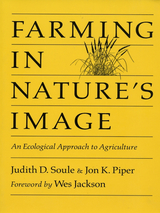 Farming in Nature's Image: An Ecological Approach To Agriculture
Judith D. Soule and Jon K. Piper; Foreword by Wes Jackson
Island Press, 1992 ˜Farming in Nature's Image provides, for the first time, a detailed look into the pioneering work of The Land Institute, the leading educational and research organization for sustainable agriculture. The authors draw on case studies, hands-on experience, and research results to explain the applications of a new system of agriculture based on one unifying concept: that farms should mimic the ecosystems in which they exist. They present both theoretical and practical information, including: - a review of the environmental degradation resulting from current farming practices
- a critical evaluation of the attempts to solve these problems
- a detailed description of the ecosystem perspective and the proposed new agricultural system
- a case study illustrating how this new system could be applied to temperate grain production using perennial seed crops and the prairie as a model
- an examination of the potential savings in energy and water use, as well as potential contributions to ecological experiments and yield analysis work from The Land Institute.
Written in clear, non-technical language, this book will be of great interest to soil and agricultural scientists, academics, policymakers, environmentalists, and other concerned with finding long-range solutions to agricultural problems.
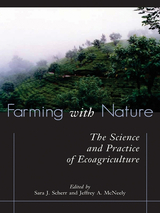 Farming with Nature: The Science and Practice of Ecoagriculture
Edited by Sara J. Scherr and Jeffrey A. McNeely
Island Press, 2007 A growing body of evidence shows that agricultural landscapes can be managed not only to produce crops but also to support biodiversity and promote ecosystem health. Innovative farmers and scientists, as well as indigenous land managers, are developing diverse types of “ecoagriculture” landscapes to generate cobenefits for production, biodiversity, and local people.
Farming with Nature offers a synthesis of the state of knowledge of key topics in ecoagriculture. The book is a unique collaboration among renowned agricultural and ecological scientists, leading field conservationists, and farm and community leaders to synthesize knowledge and experience across sectors. The book examines: - the knowledge base for ecoagriculture as well as barriers, gaps, and opportunities for developing improved ecoagriculture systems
- what we have learned about managing landscapes to achieve multiple objectives at a landscape scale
- existing incentives for farmers, other land managers, and investors to develop and invest in ecoagriculture systems
- pathways to develop, implement, manage, and scale up successful ecoagriculture
Insights are drawn from around the world, in tropical, Mediterranean, and temperate environments, from farming systems that range from highly commercialized to semi-subsistence. Farming with Nature is an important new work that can serve as a foundation document for planners, farm organizations, researchers, project developers, and policy makers to develop strategies for promoting and sustaining ecoagriculture landscapes. Replete with valuable best practice guidelines, it is a critical resource for both practitioners and researchers in
the field.
Farocki/Godard: Film as Theory
Volker Pantenburg
Amsterdam University Press, 2015 There is a tension between the requirements of theoretical abstraction and the capacities of the film medium, where everything that we see on screen is concrete: A train arriving at a station, a tree, bodies, faces. Since the complex theories of montage in Soviet cinema, however, there have continuously been attempts to express theoretical issues by combining shots, thus creating a visual form of thinking.
This book brings together two major filmmakers-French New Wave master Jean-Luc Godard and German avant-gardist Harun Farocki to explore the fundamental tension between theoretical abstraction and the capacities of film itself, a medium where everything seen onscreen is necessarily concrete. Volker Pantenburg shows how these two filmmakers explored the potential of combined shots and montage to create "film as theory."
 The Farrakhan Phenomenon: Race, Reaction, and the Paranoid Style in American Politics
Robert Singh
Georgetown University Press, 1997 In this penetrating critical analysis of Louis Farrakhan's ascent to national influence, Robert Singh argues that the minister's rise to prominence is a function of race and reaction in contemporary America. Singh probes the origins and significance of Farrakhan in American politics. Drawing on published and unpublished records, personal interviews, and Farrakhan's writings and speeches, Singh places Farrakhan expressly within the "paranoid style" of such reactionaries as Jesse Helms and Joseph McCarthy. Examining Farrakhan's biographical details, religious beliefs, political strategies, and relative influence, Singh argues that Farrakhan is an extreme conservative who exploits both black-white divisions and conflicts within the black community for personal advancement. Singh proposes that Farrakhan's complex appeal to African-Americans is based on his ability to orchestrate the diffuse forces of African-American protest against the status quo. Paradoxically, says Singh, Farrakhan has achieved his position in part by positioning himself against most African-American political leaders, a tactic made possible by the extent to which black American politics now displays the same basic features as American politics in general. By stoking the fires of fear and hatred yet effecting no real changes, Farrakhan poses a greater threat to black Americans than to whites. The Farrakhan Phenomenon is written in a clear, accessible style that will appeal to general readers concerned about race relations as well as to scholars of American history and politics. It reveals a shrewd opportunist who has capitalized on America's continuing failure to deal with its serious and abiding race problems.
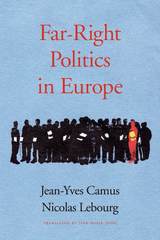 Far-Right Politics in Europe
Jean-Yves Camus and Nicolas Lebourg
Harvard University Press, 2017 In Europe today, staunchly nationalist parties such as France’s National Front and the Austrian Freedom Party are identified as far-right movements, though supporters seldom embrace that label. More often, “far right” is pejorative, used by liberals to tar these groups with the taint of Fascism, Nazism, and other discredited ideologies. Jean-Yves Camus and Nicolas Lebourg’s critical look at the far right throughout Europe—from the United Kingdom to France, Germany, Poland, Italy, and elsewhere—reveals a prehistory and politics more complex than the stereotypes suggest and warns of the challenges these movements pose to the EU’s liberal-democratic order.
The European far right represents a confluence of many ideologies: nationalism, socialism, anti-Semitism, authoritarianism. In the first half of the twentieth century, the radical far right achieved its apotheosis in the regimes of Fascist Italy and Nazi Germany. But these movements have evolved significantly since 1945, as Far-Right Politics in Europe makes clear. The 1980s marked a turning point in political fortunes, as national-populist parties began winning seats in European parliaments. Since the terrorist attacks of 9/11 in the United States, a new wave has unfurled, one that is explicitly anti-immigrant and Islamophobic in outlook.
Though Europe’s far-right parties differ in important respects, they are motivated by a common sense of mission: to save their homelands from what they view as the corrosive effects of multiculturalism and globalization by creating a closed-off, ethnically homogeneous society. Members of these movements are increasingly determined to gain power through legitimate electoral means. In democracies across Europe, they are succeeding.
The Farther Adventures of Robinson Crusoe: The Stoke Newington Edition
Maximillian E. Novak
Bucknell University Press, 2022 Defoe’s The Farther Adventures of Robinson Crusoe was almost always published together with The Life and Strange Surprizing Adventures of Robinson Crusoe. Only after 1950 was the first volume printed alone—a shorter work for some classes. But in addition to fulfilling the promise of the first volume, The Farther Adventures is an exciting adventure novel by itself. Crusoe returns to his island to learn about his colony, and then travels to Madagascar, India, and China before returning to England after some exciting encounters. Complete with an introduction, line notes, and full bibliographical notes, this is an edition like no other.
Published by Bucknell University Press. Distributed worldwide by Rutgers University Press.
Fasciculus Moralitatis: Omelie Morales de Infantia Saluatoris
Caesarius of Heisterbach
Karolinum Press, 2023 The first critical edition of Caesarius’ Omelie morales de infantia Saluatoris—Homilies on Jesus’ Childhood.
Primarily known as the author of the Dialogus miraculorum—a collection of exemplary stories that secured his reputation as the master of Cistercian storytelling—Caesarius of Heisterbach was also the author of several sermons and homilies. Although they are not as well known today, his Homilies on Jesus’ Childhood are exceptional in many ways. Readers will immediately notice Caesarius’s versatility as he employs an impressive array of persuasive techniques: quoting scholarly works, interpreting Hebrew names and letters, delving into etymology and numerology, and including numerous examples to instruct both the learned and the common person.
 Fascinating Foods from the Deep South: Favorite Recipes from the University Club of Tuscaloosa, Alabama
Alline P. Van Duzor
University of Alabama Press, 2010 250 Recipes from the University of Alabama’s famed University Club in Tuscaloosa The historic mansion at the corner of University Boulevard and Queen City Avenue in Tuscaloosa, Alabama has been home to the University of Alabama University Club since 1944. In its early years, the Club took shape around the vision and culinary expertise of the formidable Atlantan Alline P. Van Duzor, still remembered in Tuscaloosa for her impeccable and exacting standards. This book reveals her most beloved recipes. Commissioned in the early 1960s by a New York publisher, this collection of her gastronomic creations sold through more than eight printings, further spreading her reputation. The more than 250 favorite Southern recipes in this now-classic cookbook are written in Van Duzor’s straight-forward style, using common fresh and store-bought ingredients. This new edition has been augmented by a guide to portions and food brand names, an index to the recipes, and an appendix of past presidents of the University Club Board. Cookbook collectors, local history buffs, the university community, and happy cooks everywhere will welcome this reissue of a popular cookbook that has won decades of fans.
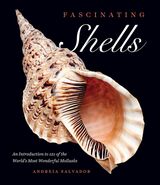 Fascinating Shells: An Introduction to 121 of the World’s Most Wonderful Mollusks
Andreia Salvador
University of Chicago Press, 2022 A New Scientist Best Book of the Year
Beautiful photographs of stunning shells from London's Natural History Museum, home to one of the most significant and comprehensive collections in the world.
Collected and treasured for their beauty, used in religious rituals, or even traded as currency, shells have fascinated humans for millennia. Ancient and enchanting, dazzling in form and variety, these beautiful objects come from mollusks, one of the most diverse groups in the animal kingdom, including snails, oysters, cuttlefish, and chitons. Soft-bodied, these creatures rely on shells for protection from enemies and their environments, from snowy mountains to arid deserts, in deep-sea hydrothermal vents and the jungles of the tropics, on rocky shores, and in coral reefs.
In this book, mollusk expert Andreia Salvador profiles some of the world’s most beautiful and quirky shells, each selected from the more than eight million specimens held in the collection at London’s Natural History Museum. We lock eyes with the hundred-eyed cowry, named after "the all-seeing one," the giant Argus Panoptes of Greek mythology. We see how shells' appearances translate into defense strategies, as with the zigzag nerite, which varies its patterning to deceive and confuse predators. And we meet shell inhabitants, such as the amber snail, which eats earthworms by sucking them up like spaghetti. Reproduced in full color and striking detail, these shells have much to reveal about the history of collecting, the science of taxonomy, and the human desire to understand the natural world.
 Fascination and Enmity: Russia and Germany as Entangled Histories, 1914–1945
Michael David-Fox
University of Pittsburgh Press, 2012 ussia and Germany have had a long history of significant cultural, political, and economic exchange. Despite these beneficial interactions, stereotypes of the alien Other persisted. Germans perceived Russia as a vast frontier with unlimited potential, yet infused with an “Asianness” that explained its backwardness and despotic leadership. Russians admired German advances in science, government, and philosophy, but saw their people as lifeless and obsessed with order.
Fascination and Enmity presents an original transnational history of the two nations during the critical era of the world wars. By examining the mutual perceptions and misperceptions within each country, the contributors reveal the psyche of the Russian-German dynamic and its use as a powerful political and cultural tool.
Through accounts of fellow travelers, POWs, war correspondents, soldiers on the front, propagandists, revolutionaries, the Comintern, and wartime and postwar occupations, the contributors analyze the kinetics of the Russian-German exchange and the perceptions drawn from these encounters. The result is a highly engaging chronicle of the complex entanglements of two world powers through the great wars of the twentieth century.
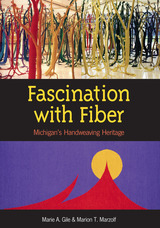 Fascination with Fiber: Michigan's Handweaving Heritage
Marie A. Gile and Marion T. Marzolf
University of Michigan Press, 2006 "A premiere work offering a rich chronicle of weaving in Michigan. Colorful stories tell of Michigan's textile people, places, and events, and show the important role that this state played in preserving and progressing the culture of cloth locally and nationally. I came away with a new sense of pride and joy at being a part of this rich human history and inspired to continue exploring within this great tradition!"
---Chris Triola, Fiber Artist "Fascination with Fiber is a well-documented history, with consequence! The authors reveal surprising continuity in relationships, with results that are far-reaching. Readers will be moved beyond border as they come to realize the extensive influences generated in Michigan."
---Gerhardt Knodel, Director, Cranbrook Academy of Art Fascination with Fiber is the first complete look at Michigan's rich tradition of handweaving, from pioneer log cabin days to the contemporary era of digital computer-aided looms. Michigan has been at the center of handweaving and fiber arts and crafts since early settlers brought their skills with them from countries where handicrafts and weaving were traditionally strong. The textiles they produced in their new country, from linens to coverlets to rugs, took on a distinctly American expression. In the twentieth century, the formation of guilds, craft communities, and formal art programs created a revival of interest in handweaving as an opportunity for artistic expression so that by latter part of the century the state played a vital role in the national fiber movement. Weavers and historians themselves, authors Marie A. Gile and Marion T. Marzolf focus on the people and forces that have kept the craft of handweaving alive in Michigan and indeed throughout the country for over two centuries: a passionate group of individuals and weaving communities enlivened through shared necessity, opportunity, and creativity. Gile and Marzolf base their book on oral histories, interviews, and documentary and artifact research. With its tales of colorful characters such as Mary Atwater, the gun-toting weaver from Montana who helped organize the handweaving industry; to the formation of the Michigan League of Handweavers in 1959; and the "Fascination with Fiber" exhibit that opened in 2004; Fascination with Fiber brings the story of handweaving in Michigan to life like no other book. Marie A. Gile is Textile Specialist and Research Associate at Michigan State University Museum in Lansing. She has been a weaver and fiber artist for twenty-five years. Marion T. Marzolf is Professor Emerita in the Department of Journalism and Communication at the University of Michigan. Since retiring in 1995, she has taught basic weaving, has served as president of the Michigan League of Handweavers, and has exhibited in galleries statewide.
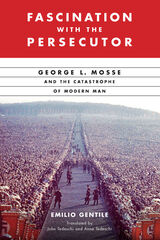 Fascination with the Persecutor: George L. Mosse and the Catastrophe of Modern Man
Emilio Gentile and and Stanley G. Payne, translated by John and Anne Tedeschi
University of Wisconsin Press, 2021 In 1933, George L. Mosse fled Berlin and settled in the United States, where he went on to become a renowned historian at the University of Wisconsin–Madison. Through rigorous and innovative scholarship, Mosse uncovered the forces that spurred antisemitism, racism, nationalism, and populism. His transformative work was propelled by a desire to know his own persecutors and has been vital to generations of scholars seeking to understand the cultural and intellectual origins and mechanisms of Nazism.
This translation makes Emilio Gentile’s groundbreaking study of Mosse’s life and work available to English language readers. A leading authority on fascism, totalitarianism, and Mosse’s legacy, Gentile draws on a wealth of published and unpublished material, including letters, interviews, lecture plans, and marginalia from Mosse’s personal library. Gentile details how the senior scholar eschewed polemics and employed rigorous academic standards to better understand fascism and the “catastrophe of the modern man”—how masculinity transformed into a destructive ideology. As long as wars are waged over political beliefs in popular culture, Mosse’s theories of totalitarianism will remain as relevant as ever.
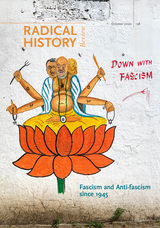 Fascism and Antifascism since 1945
Mark Bray, Jessica Namakkal, Giulia Riccò, and Eric Roubinek, special issue editors
Duke University Press, 2020 Contributors to this special issue of Radical History Review study histories of fascism and antifascism after 1945 to show how fascist ideology continues to circulate and be opposed transnationally despite its supposed death at the end of World War II. The essays cover the use of fascism in the 1970s construction of the Latinx Left, the connection of antifascism and anti-imperialism in 1960s Italian Communist internationalism, post-dictatorship Argentina and the transhistorical alliance between Las Madres and travestí activism, cultures of antifascism in contemporary Japan, and global fascism as portrayed through the British radical right's attempted alliance with Qathafi's Libya. The issue also includes a discussion about teaching fascism through fiction in the age of Trump, a reflection on the practices of archiving and displaying antifascist objects to various publics, and reviews of recent works on antifascism, punk music, and the Rock Against Racism movement.
Contributors. Benjamin Bland, Mark Bray, Rosa Hamilton, Jessica Namakkal, Giulia Riccò, Cole Rizki, Eric Roubinek, Antonino Scalia, Stuart Schrader, Vivian Shaw, Michael Staudenmaier
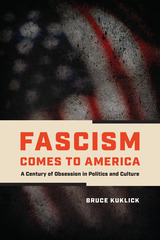 Fascism Comes to America: A Century of Obsession in Politics and Culture
Bruce Kuklick
University of Chicago Press, 2022 A deeply relevant look at what fascism means to Americans.
From the time Mussolini took power in Italy in 1922, Americans have been obsessed with and brooded over the meaning of fascism and how it might migrate to the United States. Fascism Comes to America examines how we have viewed fascism overseas and its implications for our own country. Bruce Kuklick explores the rhetoric of politicians, who have used the language of fascism to smear opponents, and he looks at the discussions of pundits, the analyses of academics, and the displays of fascism in popular culture, including fiction, radio, TV, theater, and film. Kuklick argues that fascism has little informational meaning in the United States, but instead, it is used to denigrate or insult. For example, every political position has been besmirched as fascist. As a result, the term does not describe a phenomenon so much as it denounces what one does not like. Finally, in displaying fascism for most Americans, entertainment—and most importantly film—has been crucial in conveying to citizens what fascism is about. Fascism Comes to America has been enhanced by many illustrations that exhibit how fascism was absorbed into the US public consciousness.
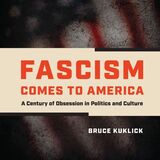 Fascism Comes to America: A Century of Obsession in Politics and Culture
Bruce Kuklick
University of Chicago Press, 2022 This is an auto-narrated audiobook version of this book.
A deeply relevant look at what fascism means to Americans.
From the time Mussolini took power in Italy in 1922, Americans have been obsessed with and brooded over the meaning of fascism and how it might migrate to the United States. Fascism Comes to America examines how we have viewed fascism overseas and its implications for our own country. Bruce Kuklick explores the rhetoric of politicians, who have used the language of fascism to smear opponents, and he looks at the discussions of pundits, the analyses of academics, and the displays of fascism in popular culture, including fiction, radio, TV, theater, and film. Kuklick argues that fascism has little informational meaning in the United States, but instead, it is used to denigrate or insult. For example, every political position has been besmirched as fascist. As a result, the term does not describe a phenomenon so much as it denounces what one does not like. Finally, in displaying fascism for most Americans, entertainment—and most importantly film—has been crucial in conveying to citizens what fascism is about. Fascism Comes to America has been enhanced by many illustrations that exhibit how fascism was absorbed into the US public consciousness.
Fascism: Comparison and Definition
Stanley G. Payne
University of Wisconsin Press, 1983 “An impressive review of reputed fascist movements, at once setting them apart from other authoritarian nationalist organizations and bringing them together within a qualified generic category. Running throughout the volume, and valuable to readers at every level, is a careful critique of the major debates that divide scholars on this most unintelligible ‘ism’ of them all. Payne precisely defines issues, cites the best literature in the major European languages, and offers with moderation and intelligence his own conclusions on the question.”—Gilbert Allardyce, American Historical Review
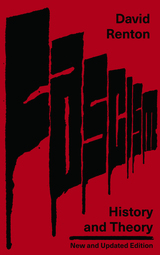 Fascism: History and Theory
David Renton
Pluto Press, 2020 Across Europe and the world, far right parties have been enjoying greater electoral success than at any time since 1945. Right-wing street movements draw huge supporters and terrorist attacks on Jews and Muslims proliferate. It sometimes seems we are returning to the age of fascism.
To explain this disturbing trend, David Renton surveys the history of fascism in Europe from its pre-war origins to the present day, examining Marxist responses to fascism in the age of Hitler and Mussolini, the writings of Trotsky and Gramsci and contemporary theorists. Renton theorizes that fascism was driven by the chaotic and unstable balance between reactionary ambitions and the mass character of its support. This approach will arm a new generation of anti-fascists to resist those who seek to re-enact fascism.
Rewritten and revised for the twentieth anniversary of its first publication, Renton's classic book synthesizes the Marxist theory of fascism and updates it for our own times.
 Fascism in India: Race, Caste, and Hindutva
Luna Sabastian
Harvard University Press, 2025 A revisionist account arguing that Indian nationalism served as a laboratory for fascist ideas that continue to animate the Hindutva political movement of today.
Fascism swept the world in the 1920s and 1930s, but not only because of the seductive rhetoric of Mussolini, Hitler, and their collaborators. In India as well, a distinctive brand of fascist thought emerged—influenced by Euro-American ideologies but also departing from them in critical ways. The first systematic examination of this political philosophy, Fascism in India revises our sense of what fascism can be, while demonstrating that it is very much with us in the form of Hindutva, the ethnonationalist movement at the center of Indian politics today.
Luna Sabastian offers a novel interpretation of Hindutva: both its canonical formulation by Vinayak Damodar Savarkar and its reinvention by Deendayal Upadhyaya after Indian independence. Sabastian shows how Hindutva generated ideas of Hindu race and religion that had the potential to erase Muslims not through genocide or ethnic cleansing but by means of violent absorption. Focusing on aggressive miscegenation, Indian fascists proposed a singular kind of racial project, eschewing notions of purity even while maintaining a starkly eliminationist objective. Fascism in India also grapples with Hindutva ideas of caste and its relation to race—particularly in comparison with Nazi uses of these concepts—and of sovereignty, which Indian fascists envisioned beyond the “blood and soil” narrative of the nation-state. Finally, Sabastian reflects on Hindutva’s reorientation toward Hindu piety after the creation of Pakistan effectively resolved India’s “Muslim problem.”
Bringing clarity to an ideology little understood in the West, Fascism in India is an eye-opening perspective on Hindutva and a profound meditation on the proliferation and evolution of right-wing thought.
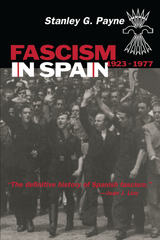 Fascism in Spain, 1923–1977
Stanley G. Payne
University of Wisconsin Press, 2000 Fascism in Spain, 1923–1977, by celebrated historian Stanley G. Payne, is the most comprehensive history of Spanish fascism to appear in any language. This authoritative study offers treatment of all the major doctrines, personalities, and defining features of the Spanish fascist movement, from its beginnings until the death of General Francisco Franco in 1977.
Payne describes and analyzes the development of the Falangist party both prior to and during the Spanish Civil War, presenting a detailed analysis of its transformation into the state party of the Franco regime—Falange Española Tradicionalista—as well as its ultimate conversion into the pseudofascist Movimiento Nacional. Payne devotes particular attention to the crucial years 1939–1942, when the Falangists endeavored to expand their influence and convert the Franco regime into a fully Fascist system. Fascism in Spain helps us to understand the personality of Franco, the way in which he handled conflict within the regime, and the reasons for the long survival of his rule. Payne concludes with the first full inquiry into the process of “defascistization,” which began with the fall of Mussolini in 1943 and extended through the Franco regime’s later efforts to transform the party into a more viable political entity.
Fascism, Liberalism and Europeanism in the Political Thought of Bertrand de Jouvenel and Alfred Fabre-Luce
Daniel Knegt
Amsterdam University Press, 2017 Despite the recent rise in studies that approach fascism as a transnational phenomenon, the links between fascism and internationalist intellectual currents have only received scant attention. This book explores the political thought of Bertrand de Jouvenel and Alfred Fabre-Luce, two French intellectuals, journalists and political writers who, from 1930 to the mid-1950s, moved between liberalism, fascism and Europeanism. Daniel Knegt argues that their longing for a united Europe was the driving force behind this ideological transformation-and that we can see in their thought the earliest stages of what would become neoliberalism.
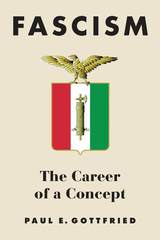 Fascism: The Career of a Concept
Paul E. Gottfried
Northern Illinois University Press, 2017 What does it mean to label someone a fascist? Today, it is equated with denouncing him or her as a Nazi. But as intellectual historian Paul E. Gottfried writes in this provocative yet even-handed study, the term’s meaning has evolved over the years. Gottfried examines the semantic twists and turns the term has endured since the 1930s and traces the word’s polemical function within the context of present ideological struggles. Like “conservatism,” “liberalism,” and other words whose meanings have changed with time, “fascism” has been used arbitrarily over the years and now stands for a host of iniquities that progressives, multiculturalists, and libertarians oppose, even if they offer no single, coherent account of the historic evil they condemn.
Certain factors have contributed to the term’s imprecise usage, Gottfried writes, including the equation of all fascisms with Nazism and Hitler, as well as the rise of a post-Marxist left that expresses predominantly cultural opposition to bourgeois society and its Christian and/or national components. Those who stand in the way of social change are dismissed as “fascist,” he contends, an epithet that is no longer associated with state corporatism and other features of fascism that were once essential but are now widely ignored. Gottfried outlines the specific historical meaning of the term and argues that it should not be used indiscriminately to describe those who hold unpopular opinions. His important study will appeal to political scientists, intellectual historians, and general readers interested in politics and history.
 Fascism: The History of a Word
Federico Marcon
University of Chicago Press, 2025 A wide-ranging history of the term “fascism,” what it has meant, and what it means today.
The rise and popular support for authoritarianism around the world and within traditional democracies have spurred debates over the meaning of the term “fascist” and when and whether it is appropriate to use it. The landmark study Fascism: The History of a Word takes this debate further by tackling its most fundamental questions: How did the terms “fascism” and “fascist” come to be in the first place? How and in what circumstances have they been used? How can they be understood today? And what are the advantages (or disadvantages) of using “fascism” to make sense of interwar authoritarianism as well as contemporary politics?
Exploring the writings and deeds of political leaders, activists, artists, authors, and philosophers, Federico Marcon traces the history of the term’s use (and usefulness) in relation to Mussolini’s political regime, antifascist resistance, and the quest of postwar historians to develop a definition of a “fascist minimum.” This investigation of the semiotics of “fascism” also aims to inquire about people’s voluntary renunciation of the modern emancipatory ideals of freedom, equality, and solidarity.
The Fascist Revolution: Toward a General Theory of Fascism
George L. Mosse, with a critical introduction by Roger Griffin
University of Wisconsin Press, 2021 The Fascist Revolution is the culmination of George L. Mosse's groundbreaking work on fascism. Originally published posthumously in 1999, the volume covers a broad spectrum of topics related to cultural interpretations of fascism from its origins through the twentieth century. In a series of magisterial turns, Mosse examines fascism's role in the French Revolution, its relationship with nationalism and racism, its use by intellectuals to foment insurrection, and more as a means to define and understand it as a popular phenomenon on its own terms. This new edition features a critical introduction by Roger Griffin, professor emeritus of modern history at Oxford Brookes University, contextualizing Mosse's research as fascism makes a global resurgence.
 Fashion and Ethics: Critical Studies in Fashion and Beauty, Volume II
Edited by Efrat Tseëlon
Intellect Books, 2014 Fashion and Ethics focuses on issues of power, social positioning, and practices among creators, producers, practitioners, wearers, and consumers of fashion. With a special emphasis on the moral fabric of clothing, contributors to the book offer a critique of some of the fundamental assumptions of ethical fashion and expose how products are often framed as fair trade in order to relieve consumers' guilt.
With essays that problematize issues such as ethical fashion’s self-appointed morality, the first-world notion that the environment should take priority over human development, the conflict between business profit and ethics, the unintended agendas involved in consuming green cosmetics or ethical culinary trends, and the discursive strategies of denial of the extreme cruelty in the procurement of animal skin and fur for use in fashion, Fashion and Ethics applies its uncompromising scrutiny to all areas of fashion. Throughout, the volume forces readers to confront the question: Does ethical fashion go deep enough into challenging unethical behavior or is it just a charade of good intentions?
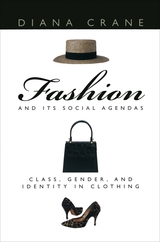 Fashion and Its Social Agendas: Class, Gender, and Identity in Clothing
Diana Crane
University of Chicago Press, 2000 It has long been said that clothes make the man (or woman), but is it still true today? If so, how has the information clothes convey changed over the years? Using a wide range of historical and contemporary materials, Diana Crane demonstrates how the social significance of clothing has been transformed.
Crane compares nineteenth-century societies—France and the United States—where social class was the most salient aspect of social identity signified in clothing with late twentieth-century America, where lifestyle, gender, sexual orientation, age, and ethnicity are more meaningful to individuals in constructing their wardrobes. Today, clothes worn at work signify social class, but leisure clothes convey meanings ranging from trite to political. In today's multicode societies, clothes inhibit as well as facilitate communication between highly fragmented social groups.
Crane extends her comparison by showing how nineteenth-century French designers created fashions that suited lifestyles of Paris elites but that were also widely adopted outside France. By contrast, today's designers operate in a global marketplace, shaped by television, film, and popular music. No longer confined to elites, trendsetters are drawn from many social groups, and most trends have short trajectories. To assess the impact of fashion on women, Crane uses voices of college-aged and middle-aged women who took part in focus groups. These discussions yield fascinating information about women's perceptions of female identity and sexuality in the fashion industry.
An absorbing work, Fashion and Its Social Agendas stands out as a critical study of gender, fashion, and consumer culture.
"Why do people dress the way they do? How does clothing contribute to a person's identity as a man or woman, as a white-collar professional or blue-collar worker, as a preppie, yuppie, or nerd? How is it that dress no longer denotes social class so much as lifestyle? . . . Intelligent and informative, [this] book proposes thoughtful answers to some of these questions."-Library Journal
 Fashion and War in Popular Culture
Edited by Denise N. Rall
Intellect Books, 2014 Aside from the occasional nod to epaulets or use of camouflage, war and fashion seem to be strange partners. Not so, argue the contributors to this book, who connect military industrial practices as well as military dress to textile and clothing in new ways. For instance, the book includes a series of commentaries on the impact of military dress in the airline industry, in illustrated wartime comics, and even considers today’s muscled soldier’s body as a new type of uniform. Elsewhere, the impacts of conquest introduce a new set of postcolonial aesthetics; this is because military and colonial regimes disrupted local textile production and garment making. In another chapter, it is argued that textiles and fashion are important because they reflect a core practice, one that bridges textile artists and designers in an expressive, creative, and deeply physical way to matters of cultural significance. And the book concludes by calling the very mode of "military chic" into ethical question.
The premier text to illustrate the impact of war on textiles, bodies, costume, art, and design, Fashion and War in Popular Culture will be warmly welcomed by scholars of fashion design and theory, historians of fashion, and those interested in theories of warfare and military science.
 Fashion Cities Africa
Edited by Hannah Azieb Pool
Intellect Books, 2016 In a searing 2012 Guardian op-ed, Hannah Azieb Pool took Western fashion designers to task for their so-called African-inspired clothing. “Dear Fashion,” she wrote, “Africa is a continent, not a country. Can you imagine anyone describing a fashion trend as ‘European-inspired?' Of course not. It’s meaningless.” Now, with Fashion Cities Africa, Pool aims to correct the misconceptions about African fashion, providing key context for contemporary African fashion scenes and capturing the depth and breadth of truly African fashion.
Tied to the Fashion Cities Africa exhibition at the Brighton Museum, the book gives much needed attention to four key African fashion scenes: Nairobi, Lagos, Casablanca, and Johannesburg—one from each region of the continent. Filled with interviews of leading African fashion designers, stylists, and commentators, alongside hundreds of exclusive street-style images, Fashion Cities Africa is a landmark book that should be celebrated in fashion houses the world over.
Fashion, Culture, and Identity
Fred Davis
University of Chicago Press, 1992 What do our clothes say about who we are or who we think we are? How does the way we dress communicate messages about our identity? Is the desire to be "in fashion" universal, or is it unique to Western culture? How do fashions change? These are just a few of the intriguing questions Fred Davis sets out to answer in this provocative look at what we do with our clothes—and what they can do to us.
Much of what we assume to be individual preference, Davis shows, really reflects deeper social and cultural forces. Ours is an ambivalent social world, characterized by tensions over gender roles, social status, and the expression of sexuality. Predicting what people will wear becomes a risky gamble when the link between private self and public persona can be so unstable.
 Fashion, Desire and Anxiety: Image and Morality in the Twentieth Century
Arnold, Rebecca
Rutgers University Press, 2001 Fashion, and the glossy magazines it inhabits, allow Western culture to dream. It permits a person to fantasize and to experiment with new identities. It flaunts glamour and success. Appearance becomes something to be perfected and admired. These dreams and freedoms, Rebecca Arnold proposes, are contradictory. Fashion and its surrounding imagery elicit fear and anxiety in their consumers as well as pleasure. Fashion has come to incorporate the underside of modern life, with violence and decay becoming a dominant theme in clothing design and photography. Arnold draws on diverse written sources to explore the complex nature of modern fashion. She discusses a range of key themes: how fashion uses and abuses the power of wealth; the alienating promotion of "good" taste; the power plays of sex and display; and how identities can be blurred to disguise and confuse. In order to unravel the contradictory emotions of desire and anxiety they provoke, she never loses sight of the historical and cultural contexts in which fashion designers and photographers perform. Generously illustrated, Fashion, Desire and Anxiety focuses on the last thirty years, from photographic works of the 1970s to the beginning of the twenty-first century.
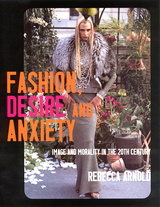 Fashion, Desire and Anxiety: Image and Morality in the Twentieth Century
Arnold, Rebecca
Rutgers University Press, 2001 Fashion, and the glossy magazines it inhabits, allow Western culture to dream. It permits a person to fantasize and to experiment with new identities. It flaunts glamour and success. Appearance becomes something to be perfected and admired. These dreams and freedoms, Rebecca Arnold proposes, are contradictory. Fashion and its surrounding imagery elicit fear and anxiety in their consumers as well as pleasure. Fashion has come to incorporate the underside of modern life, with violence and decay becoming a dominant theme in clothing design and photography. Arnold draws on diverse written sources to explore the complex nature of modern fashion. She discusses a range of key themes: how fashion uses and abuses the power of wealth; the alienating promotion of "good" taste; the power plays of sex and display; and how identities can be blurred to disguise and confuse. In order to unravel the contradictory emotions of desire and anxiety they provoke, she never loses sight of the historical and cultural contexts in which fashion designers and photographers perform. Generously illustrated, Fashion, Desire and Anxiety focuses on the last thirty years, from photographic works of the 1970s to the beginning of the twenty-first century.
Fashion Education: The Systemic Revolution
Edited by Ben Barry and Deborah A. Christel
Intellect Books, 2023 How fashion education can help create a more inclusive society.
Despite the hard-earned successes of body positive, antiracist, and disability rights activists calling for diverse representation, the fashion industry has been slow to evolve. In Fashion Education: The Systemic Revolution, fashion educators share their experiences navigating, resisting, and transforming the narrow beauty and body ideals that have defined pedagogy within the discipline. The volume examines their challenges and successes, as well as practical strategies for countering narrow fashion education curricula. Educators share ways to radically redesign courses and decenter white supremacy, fatphobia, ableism, transphobia, and misogyny. Together, the chapters illuminate the critical role of fashion education in systematically eliminating body oppression and building a more inclusive profession.
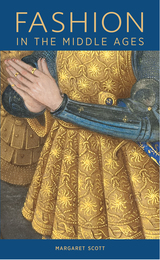 Fashion in the Middle Ages
Margaret Scott
J. Paul Getty Trust, The, 2018 Explore medieval fashions through illuminated manuscripts—from the luxurious garments worn by royalty to the modest clothes of the peasantry.
From the costly velvets and furs worn by kings to the undyed wools and rough linens of the peasantry, the clothing worn by the various classes in the Middle Ages played an integral role in medieval society. In addition to providing clues to status, profession, and/or geographic origin, textiles were a crucial element in the economies of many countries and cities.
Much of what is known about medieval fashion is gleaned from the pages of manuscripts, which serve as a rich source of imagery. This volume provides a detailed look at both the actual fabrics and composition of medieval clothing as well as the period’s attitude toward fashion through an exploration of illuminated manuscripts in the collection of the J. Paul Getty Museum. The last portion of the book is dedicated to the depiction of clothing in biblical times and the ancient world as seen through a medieval lens. Throughout, excerpts from literary sources of the period help shed light on the perceived role and function of fashion in daily life.
 Fashion Knowledge: Theories, Methods, Practices and Politics
Edited by Elke Gaugele and Monica Titton
Intellect Books, 2024 On theory and method in the changing field of fashion studies.
At a point when fashion studies are expanding and the fashion industry is at a crucial point of change, Fashion Knowledge makes a valuable contribution to the field. The book explores current issues in fashion research, with a focus on the relationship between theory and practice. This edited collection assembles academic essays and intellectual activism next to visual essays and artistic interventions, proposing a different concept for fashion research that eschews the traditional logic of academic fashion studies. It features acclaimed designers, artists, curators, and theorists whose work investigates the multi-faceted debates on the rise of practice-based research in fashion. Contributors look at new forms of fashion knowledge that are forming along with shifting practices, shedding light on the entanglement of fashion and politics in both contemporary and historical moments.
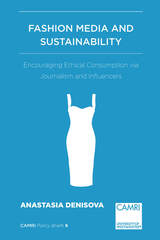 Fashion Media and Sustainability: Encouraging Ethical Consumption via Journalism and Influencers
Anastasia Denisova
University of Westminster Press, 2021 Fashion is among the biggest polluters, yet the media still promote throwaway fast fashion. The growing fashion public relations industry encourages and enables this media coverage. This policy brief identifies patterns in the way journalists and influencers cover fashion which contribute to unsustainable buying behaviours. Recent research recommends practical steps to improve media coverage to make consumption sustainable, by changing consumers’ understanding and reducing the pressure on them to buy ‘fast’ satisfaction. Policy recommendations here suggested are based on original analysis of 1,000+ media artefacts in the UK – from magazines to newspapers, gossip weeklies to Instagram influencers. Researcher Anastasia Denisova proposes regulation of vocabulary and of affiliated links in journalism and social media, greater discussion of the psychology of buying and a ‘paid advertisement label’. Also recommended is a more proactive approach to be taken by magazines and other media with the aim of promoting restyling advice and more sustainable coverage for readers of differing financial means.
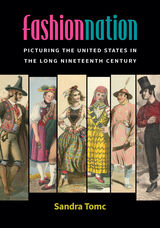 Fashion Nation: Picturing the United States in the Long Nineteenth Century
Sandra Tomc
University of Michigan Press, 2021 Fashion Nation argues that popular images of the United States as a place of glitter and lights, of gaudy costumes and dizzying visual surfaces—usually understood as features of technomodernity—were in fact brewed in the rich, strange world of early nineteenth-century British and European folk nationalism when nations were compelled to offer visual manifestations of their allegedly true ancestral form. Showing that folk and ethnic nationalism played a central role in writing and culture, the book draws on a rare and colorful visual archive of national costumes, cartoons, theatrical spectacles, and immersive entertainments to show how the United States sprung to life as a visual space for transatlantic audiences. Fashion Nation not only includes chapters on major U.S. travel writers like Nathaniel Parker Willis and James Fenimore Cooper, but it also presents explorations of the vogue for folk and ethnic costume, the role of Indigenous dress in Wild West spectacles, and the nationalistic décor on display at late nineteenth-century world’s fairs and amusement parks. Engagingly written and beautifully illustrated, Fashion Nation opens the door to a forgotten legacy of visual symbols that still inhabit ethnic and white nationalism in the United States today, showing how fantasies of glittery surfaces were designed to draw the eye away from a sordid history.
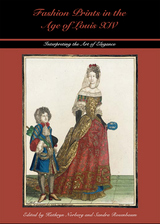 Fashion Prints in the Age of Louis XIV: Interpreting the Art of Elegance
Kathryn Norberg
Texas Tech University Press, 2014 Re-examining seventeenth-century French style
Between 1678 and 1710, Parisian presses printed hundreds of images of elegantly attired men and women dressed in the latest mode, and posed to display every detail of their clothing and accessories. Long used to illustrate dress of the period, these fashion prints have been taken at face value and used uncritically. Drawing on perspectives from art history, costume history, French literature, museum conservation and theatrical costuming, the essays in this volume explore what the prints represent and what they reveal about fashion and culture in the seventeenth century.
With more than one hundred illustrations, Fashion Prints in the Age of Louis XIV constitutes not only an innovative analysis of fashion engravings, but also one of the most comprehensive collections of seventeenth-century fashion images available in print.
 Fashion Projects: 15 Years of Fashion in Dialogue
Edited by Francesca Granata
Intellect Books, 2025 An anthology of the New York–based journal Fashion Projects.
Fashion Projects was founded in New York in 2005 as a zine. It gradually morphed into a larger journal straddling the academic and general interest worlds, with international distribution and an ardent readership. It served as a platform to highlight the importance of fashion within current critical discourses through long-form interviews with a range of curators, critics, artists, and designers. This book collects the best articles from the journal, most issues of which are now unavailable.
From exploring the rise of digital fashion media with Penny Martin (the founding editor-in-chief of SHOWstudio) to the continued importance of connoisseurship with Harold Koda (former curator-in-chief of the Met’s Costume Institute), the anthology records the increasing centrality of fashion to contemporary critical discourse. The book is an index of a particular time within the fashion studies landscape and the attendant fields of fashion writing, fashion curation, and critical fashion practice during which the field witnessed a meteoric rise.
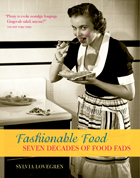 Fashionable Food: Seven Decades of Food Fads
Sylvia Lovegren
University of Chicago Press, 2005 Though the Roaring Twenties call to mind images of flappers dancing the Charleston and gangsters dispensing moonshine in back rooms, Sylvia Lovegren here playfully reminds us what these characters ate for dinner: Banana and Popcorn Salad. Like fashions and fads, food—even bad food—has a history, and Lovegren's Fashionable Food is quite literally a cookbook of the American past.
Well researched and delightfully illustrated, this collection of faddish recipes from the 1920s to the 1990s is a decade-by-decade tour of a hungry American century. From the Three P's Salad—that's peas, pickles, and peanuts—of the post-World War I era to the Fruit Cocktail and Spam Buffet Party loaf—all the rage in the ultra-modern 1950s, when cooking from a can epitomized culinary sophistication—Fashionable Food details the origins of these curious delicacies. In two chapters devoted to "exotic foods of the East," for example, Lovegren explores the long American love affair with Chinese food and the social status conferred upon anyone chic enough to eat pu-pu platters from Polynesia. Throughout, Lovegren supplements recipes—some mouth-watering, some appalling—from classic cookbooks and family magazines, with humorous anecdotes that chronicle how society and kitchen technology influenced the way we lived and how we ate.
Equal parts American and culinary history, Fashionable Food examines our collective past from the kitchen counter. Even if it's been a while since you last had Tang Pie and your fondue set is collecting dust in the back of the cupboard, Fashionable Food will inspire, entertain, and inform.
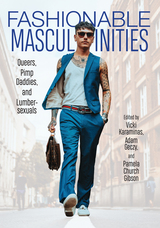 Fashionable Masculinities: Queers, Pimp Daddies, and Lumbersexuals
Vicki Karaminas
Rutgers University Press, 2022 Fashionable Masculinities explores the expression of masculinities through constructions of fashion, identity, style and appearance as the third decade of the new millennium begins: a contradictory and precarious moment when masculinities are defined by protests and pandemics whilst being problematized across class, ethnicity, race, gender and sexuality. Whilst a majority of men might still define themselves as ‘traditional,’ post-millennials are now talking about how they envision a future without gender boundaries and borders. Rather than being defined as a gender, masculinity has now become a style that can be worn and performed as traditional and normative codes of masculinity are modulated and manipulated. This volume includes original essays on musical pop sensation Harry Styles, rapper and producer “Puff Daddy” Sean Combs, lumbersexuals, spornosexuals, sexy daddies, and aging cool black daddies. Bringing together contributions from leading scholars, this book interrogates and challenges the meaning of masculinities and the ways that they are experienced and lived.
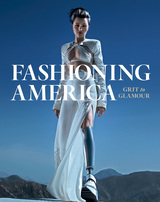 Fashioning America: Grit to Glamour
Michelle Tolini Finamore
University of Arkansas Press, 2022 The companion volume to Crystal Bridges Museum of American Art’s first fashion exhibition, Fashioning America: Grit to Glamour celebrates the history of American attire, from the cowboy boot to the zoot suit. From dresses worn by First Ladies to art-inspired garments to iconic moments in fashion that defined a generation, Fashioning America showcases uniquely American expressions of innovation, spotlighting stories of designers and wearers that center on opportunity and self-invention, and amplifying the voices of those who are often left out of dominant fashion narratives.
With nearly one hundred illustrations of garments and accessories that span two centuries of design, Fashioning America celebrates the achievements of a wide array of makers—especially immigrants, Native Americans, and Black Americans. Incorporating essays by fashion historians, curators, and journalists, this volume takes a fresh look at the country’s fashion history while exploring its close relationship with Hollywood and media in general, illuminating the role that American designers have played in shaping global visual culture and demonstrating why American fashion has long resonated around the world.
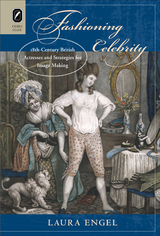 Fashioning Celebrity: Eighteenth-Century British Actresses and Strategies for Image Making
Laura Engel
Ohio State University Press, 2011 This volume takes a new approach to the study of late eighteenth-century British actresses by examining the significance of leading actresses’ autobiographical memoirs, portraits, and theatrical roles together as significant strategies for shaping their careers. In an era when acting was considered a suspicious profession for women, eighteenth-century actresses were “celebrities” in a society obsessed with fashion, gossip, and intrigue. Fashioning Celebrity: Eighteenth-Century British Actresses and Strategies for Image Making, by Laura Engel, considers the lives and careers of four actresses: Sarah Siddons, Mary Robinson, Mary Wells, and Fanny Kemble. Using conventions of the era’s portraiture, fashion, literature, and the theater in order to create their personas on and off stage, these actresses provided a series of techniques for fashioning celebrity that still survive today. By emphasizing the importance of reading narratives through visual and theatrical frameworks and visual and theatrical representations through narrative models, Engel demonstrates the ways in which actresses’ identities were imagined through a variety of discourses that worked dialectically to construct their complex self-representations. Fashioning Celebrity suggests that eighteenth-century practices of self-promotion mirror contemporary ideas about marketing, framing, and selling the elusive self, providing a way to begin to chart a history of our contemporary obsession with fame and our preoccupation with the rise and fall of famous women.
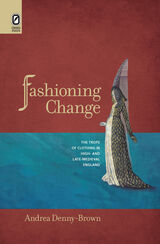 Fashioning Change: The Trope of Clothing in High- and Late-Medieval England
Andrea Denny-Brown
Ohio State University Press, 2012 Medieval European culture was obsessed with clothing. In Fashioning Change: The Trope of Clothing in High-and Late-Medieval England, Andrea Denny-Brown explores the central impact of clothing in medieval ideas about impermanence and the ethical stakes of human transience. Studies of dress frequently contend with a prevailing cultural belief that bodily adornment speaks to interests that are frivolous, superficial, and cursory. Taking up the vexed topic of clothing’s inherent changeability, Denny-Brown uncovers an important new genealogy of clothing as a representational device, one imbued with a surprising philosophical pedigree and a long history of analytical weightiness. Considering writers as diverse as Boethius, Alain de Lille, William Durand, Chaucer, and Lydgate, among others, Denny-Brown tracks the development of a literary and cultural trope that begins in the sixth century and finds its highest expression in the vernacular poetry of fifteenth-century England. Among the topics covered are Boethian discourses on the care of the self, the changing garments of Lady Fortune, novelty in ecclesiastical fashions, the sartorial legacy of Chaucer’s Griselda, and the emergence of the English gallant. These literary treatments of vestimentary variation—which develop an aesthetics of change itself—enhance our understanding of clothing as a phenomenological and philosophical category in medieval Europe and illustrate the centrality of the Middle Ages to theories of aesthetics, of materiality, and of cultural change.
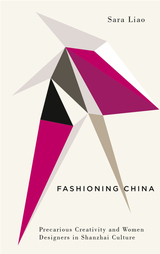 Fashioning China: Precarious Creativity and Women Designers in Shanzhai Culture
Sara Liao
Pluto Press, 2020 'Shanzhai' from Cantonese slang, refers to the production of fake goods in China, which enjoy an anti-authoritarian-like dissemination across the global market. Starting with mobile phones, now fashion brands are subverted in this way, with many women at the helm of design and production. Fashioning China looks at the women designers simultaneously subverting and reinforcing the nationalist-developmentalist, masculinist and technocratic dream of brands that are 'Made in China'.
Broadening the digital labor debate beyond typical masculine and techno-utopic readings, Sara Liao studies the precarious practices of women trying to create sustainable and creative lives, vividly illustrating a fashion culture that exists online as a significant part of the digital economy.
Drawing on material from interviews, participant observation, archives, policy documents, films and advertisements, Liao takes a multi-disciplinary approach to the topic, charting out the politics of intellectual property rights, globalization, technocracy, patriarchy and nationalism in a non-Western context.
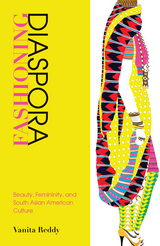 Fashioning Diaspora: Beauty, Femininity, and South Asian American Culture
Vanita Reddy
Temple University Press, 2015 In her insightful study, Fashioning Diaspora, Vanita Reddy carefully maps how transnational itineraries of Indian beauty and fashion shape South Asian American cultural identities and racialized belonging from the 1990s to the late-2000s. She observes how diasporic subjects engage with and respond to various encounters with Indian beauty and fashion.
One of the first books to consider beauty and fashion as a point of entry into an examination of South Asian diasporic public cultures, Fashioning Diaspora examines a range of literature, visual art, and live performance. Through careful analyses of novels by Bharati Mukherjee and Jhumpa Lahiri, young adult literature, performance art by Shailja Patel, as well as objects of popular culture including an Indian American fashion doll, and beauty and adornment practices, Reddy challenges fashion and beauty as a set of dematerialized, overly commodified cultural practices. She argues instead that beauty and fashion structure South Asian Americans’ uneven access to social mobility, capital, and citizenship, and demonstrates their varying capacities to produce social attachments across national, class, racial, gender, and generational divides.
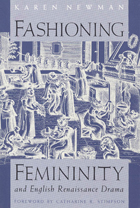 Fashioning Femininity and English Renaissance Drama
Karen Newman
University of Chicago Press, 1991 By examining representations of women on stage and in the many printed materials aimed at them, Karen Newman shows how female subjectivity—both the construction of the gendered subject and the ideology of women's subjection to men—was fashioned in Elizabethan and Jacobean England. Her emphasis is not on "women" so much as on the category of "femininity" as deployed in the late sixteenth and early seventeenth centuries.
Through the critical lens of poststructuralism, Newman reads anatomies, conduct and domesticity handbooks, sermons, homilies, ballads, and court cases to delineate the ideologies of femininity they represented and produced. Arguing that drama, as spectacle, provides a peculiarly useful locus for analyzing the management of femininity, Newman considers the culture of early modern London to reveal how female subjectivity was fashioned and staged in the plays of Shakespeare, Jonson, and others.
 Fashioning Inland Communities: Trade and Popular Culture in Central East Africa
Yaari Felber-Seligman
University of Wisconsin Press, 2025 When viewed from the economic centers of the Indian or Atlantic Oceans, the Ruvuma region of East Africa, crossing an area that is now southern Tanzania and northern Mozambique, would look like a periphery. But the same factors that marginalize the region historically brought distinct opportunities. In Fashioning Inland Communities, Yaari Felber-Seligman traces the long history—from the first millennium CE into the twentieth century—of Ruvuma trade practices within a changing world. Felber-Seligman argues that Ruvuma trade should be understood fundamentally as a set of voluntary choices undertaken and revised to further communities’ aspirations.
Ruvuma used fashion to build varied communities, from local to pan-regional, reflecting the dynamic relationships among inland groups. Examples of Ruvuma popular fashions reveal processes of meaning making and community building that call for us to expand our attention to the ways in which East African peoples interacted alongside, as well as beyond, trade networks that sourced prestige and commercial goods. Popular culture here emerges as a heterarchical force that shaped lasting multidirectional connections across and between Ruvuma and their neighbors. As both a subject and a strategy for analysis, the history of popular fashion shifts how we view histories of small, decentralized societies as they encounter larger economies. Felber-Seligman demonstrates that this has implications for our understanding not only of trade but of material culture, community, gender, and family.
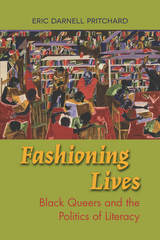 Fashioning Lives: Black Queers and the Politics of Literacy
Eric Darnell Pritchard
Southern Illinois University Press, 2017 Honorable Mention, 2018 Winifred Bryan Horner Outstanding Book Award
Winner, Lavender Rhetorics Award for Excellence in Queer Scholarship from CCCC, 2018
Winner, Advancement of Knowledge Award from CCCC, 2018
Winner, Outstanding Book Award from the Conference on Community Writing, 2017
Fashioning Lives: Black Queers and the Politics of Literacy analyzes the life stories of sixty Black lesbian, gay, bisexual, transgender, and queer (LGBTQ) people along with archival documents, literature, and film. Author Eric Darnell Pritchard provides a theoretical framework for studying the literacy work of Black LGBTQ people, who do not fit into the traditional categories imposed on their language practices and identities. Examining the myriad ways literacy is used to inflict harm, Pritchard discusses how these harmful events prompt Black LGBTQ people to ensure their own survival by repurposing literacy through literacy performances fueled by accountability to self and communal love towards social and political change, a process the author calls “restorative literacies.” Pritchard highlights restorative literacies in literacy institutions (e.g., libraries, schools), historical records repositories, religious and spiritual spaces, parties, community events, activist organizations, and digital spheres. This trailblazing study draws connections between race and queerness in literacy, composition, and rhetoric and provides the basis for a sustainable dialogue on their intersections in the discipline.
THE FASHIONING OF ANGELS: PARTNERSHIP AS SPIRITUAL PRACTICE
STEPHEN & ROBIN LARSEN
Swedenborg Foundation Publishers, 2000
Stephen and Robin Larsen, authors of A Fire in the Mind, the authorized biography of their friend Joseph Campbell, explore man-woman relationships, questing for the answer to the timeless question, "What do couples really want?"
The Larsens look to ancient wisdom -- the realm of mythology -- to solve the relationship riddle. Storytelling artists, they underline the powerful messages in the myths, folktales, and fairytales described in the book, stories that help heal wounds of gender wars. Experiential exercises the Larsens have developed deepen couples' spiritual bonds.
Readers "eavesdrop" on issues in the Larsens' own marriage; their dialogs about their own relating process bring passion and intimacy to the book.
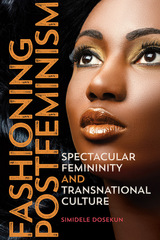 Fashioning Postfeminism: Spectacular Femininity and Transnational Culture
Simidele Dosekun
University of Illinois Press, 2020 Women in Lagos, Nigeria, practice a spectacularly feminine form of black beauty. From cascading hair extensions to immaculate makeup to high heels, their style permeates both day-to-day life and media representations of women not only in a swatch of Africa but across an increasingly globalized world. Simidele Dosekun's interviews and critical analysis consider the female subjectivities these women are performing and desiring. She finds that the women embody the postfeminist idea that their unapologetically immaculate beauty signals—but also constitutes—feminine power. As empowered global consumers and media citizens, the women deny any need to critique their culture or to take part in feminism's collective political struggle. Throughout, Dosekun unearths evocative details around the practical challenges to attaining their style, examines the gap between how others view these women and how they view themselves, and engages with ideas about postfeminist self-fashioning and subjectivity across cultures and class. Intellectually provocative and rich with theory, Fashioning Postfeminism reveals why women choose to live, embody, and even suffer for a fascinating performative culture.
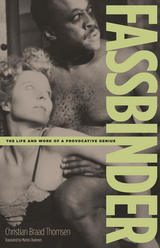 Fassbinder: The Life And Work Of A Provocative Genius
Christian Braad Thomsen
University of Minnesota Press, 2004 The revealing biography of this highly productive and radical film director Rainer Werner Fassbinder was the most innovative practitioner of New German Cinema. He worked at breakneck speed and in fourteen years made forty-four films, including Ali: Fear Eats the Soul (1973) and The Marriage of Maria Braun (1978). Fassbinder ruthlessly attacked both German bourgeois society and the larger limitations of humanity, and his films detail the desperate yearning for love and freedom and the many ways in which society defeats that desire. In Fassbinder, Christian Thomsen, a close friend of the director, illuminates Fassbinder’s body of work while revealing his insider views of a man who, despite a furious temper, manic working habits, and rampant drug addiction, supported an extended family—including his mother, a string of male lovers, lovelorn women, and even a pair of frustrated wives—with his intoxicating and prolific imagination. This book, like Fassbinder’s often-used image of the mirror, brilliantly reflects the sexual, political, and overwhelmingly human contradictions inherent in the life of this intensely creative man and the remarkable films he directed.
Fast Break to Line Break: Poets on the Art of Basketball
Todd Davis
Michigan State University Press, 2012 If baseball is the sport of nostalgic prose, basketball’s movement, myths, and culture are truly at home in verse. In this extraordinary collection of essays, poets meditate on what basketball means to them: how it has changed their perspective on the craft of poetry; how it informs their sense of language, the body, and human connectedness; how their love of the sport made a difference in the creation of their poems and in the lives they live beyond the margins. Walt Whitman saw the origins of poetry as communal, oral myth making. The same could be said of basketball, which is the beating heart of so many neighborhoods and communities in this country and around the world. On the court and on the page, this “poetry in motion” can be a force of change and inspiration, leaving devoted fans wonderstruck.
Fast Combat Support Ship HNLMS Zuiderkruis
Jantinus Mulder
Amsterdam University Press, 2023 HNLMS Zuiderkruis (1975-2012) was the second Fast Combat Support Ship of the Royal Netherlands Navy. It was primarily intended for Replenishment At Sea, fueling task groups and NATO units. As a modern design Zuiderkruis enabled a “one stop replenishment” and also carried AVCAT, fresh water and spare parts. A helicopter deck facilitated vertical replenishment.
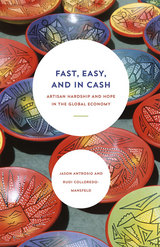 Fast, Easy, and In Cash: Artisan Hardship and Hope in the Global Economy
Jason Antrosio and Rudi Colloredo-Mansfeld
University of Chicago Press, 2015 “Artisan” has become a buzzword in the developed world, used for items like cheese, wine, and baskets, as corporations succeed at branding their cheap, mass-produced products with the popular appeal of small-batch, handmade goods. The unforgiving realities of the artisan economy, however, never left the global south, and anthropologists have worried over the fate of resilient craftspeople as global capitalism remade their cultural and economic lives. Yet artisans are proving to be surprisingly vital players in contemporary capitalism, as they interlock innovation and tradition to create effective new forms of entrepreneurship. Based on seven years of extensive research in Colombia and Ecuador, veteran ethnographers Jason Antrosio and Rudi Colloredo-Mansfeld’s Fast, Easy, and In Cash explores how small-scale production and global capitalism are not directly opposed, but rather are essential partners in economic development.
Antrosio and Colloredo-Mansfeld demonstrate how artisan trades evolve in modern Latin American communities. In uncertain economies, small manufacturers have adapted to excel at home-based production, design, technological efficiency, and investments. Vivid case studies illuminate this process: peasant farmers in Túquerres, Otavalo weavers, Tigua painters, and the t-shirt industry of Atuntaqui. Fast, Easy, and In Cash exposes how these ambitious artisans, far from being holdovers from the past, are crucial for capitalist innovation in their communities and provide indispensable lessons in how we should understand and cultivate local economies in this era of globalization.
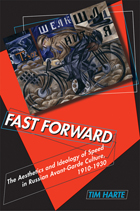 Fast Forward: The Aesthetics and Ideology of Speed in Russian Avant-Garde Culture, 1910–1930
Tim Harte
University of Wisconsin Press, 2009 Life in the modernist era not only moved, it sped. As automobiles, airplanes, and high-speed industrial machinery proliferated at the turn of the twentieth century, a fascination with speed influenced artists—from Moscow to Manhattan—working in a variety of media. Russian avant-garde literary, visual, and cinematic artists were among those striving to elevate the ordinary physical concept of speed into a source of inspiration and generate new possibilities for everyday existence.
Although modernism arrived somewhat late in Russia, the increased tempo of life at the start of the twentieth century provided Russia’s avant-garde artists with an infusion of creative dynamism and crucial momentum for revolutionary experimentation. In Fast Forward Tim Harte presents a detailed examination of the images and concepts of speed that permeated Russian modernist poetry, visual arts, and cinema. His study illustrates how a wide variety of experimental artistic tendencies of the day—such as “rayism” in poetry and painting, the effort to create a “transrational” language (zaum’) in verse, and movements seemingly as divergent as neo-primitivism and constructivism—all relied on notions of speed or dynamism to create at least part of their effects.
Fast Forward reveals how the Russian avant-garde’s race to establish a new artistic and social reality over a twenty-year span reflected an ambitious metaphysical vision that corresponded closely to the nation’s rapidly changing social parameters. The embrace of speed after the 1917 Revolution, however, paradoxically hastened the movement’s demise. By the late 1920s, under a variety of historical pressures, avant-garde artistic forms morphed into those more compatible with the political agenda of the Russian state. Experimentation became politically suspect and abstractionism gave way to orthodox realism, ultimately ushering in the socialist realism and aesthetic conformism of the Stalin years.
 Fast Lives: Women Who Use Crack Cocaine
Claire E. Sterk
Temple University Press, 1999 Providing insight into drug use from the point of view of female users, this book tells of the complex lives, challenges, and choices of women who use crack cocaine. While popular images of these women present them simply as unreliable individuals, unfit mothers, and women who will do almost anything for crack, Claire Sterk's years of ethnographic research reveal the nature and meaning of crack cocaine use in the larger context of their lives -- including the impact of such issues as gender, class, and race.
Focusing on active crack users, Fast Lives compiles information from participant observation, informal conversations, individual interviews, and group discussions. Sterk details the ways in which use affects the lives of these crack users. She captures how these women arrived at their use; how they survive under current circumstances, such as the constant threat of HIV/AIDS and violence; how they combine the multiple social roles of mother and drug user; and how -- as they share their aspirations and expectations for the future -- their stories underscore the effects of poverty, sexism, and racism on their lives.
Many of these women recognize their own responsibility for ensuring positive change. Sterk's book, which includes an argument for a harm reduction approach, reminds us that their strength and courage will too often be futile without social policies that are realistic and appropriate for women.
Fast Lives will engage readers interested in social problems as well as students of cultural anthropology, sociology, criminology, public health, ethnography, substance abuse, and women's health.
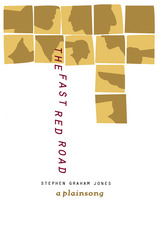 The Fast Red Road: A Plainsong
Stephen Graham Jones
University of Alabama Press, 2000 The Fast Red Road—A Plainsong is a novel which plunders, in a gleeful, two-fisted fashion, the myth and pop-culture surrounding the American Indian. It is a story fueled on pot fumes and blues, borrowing and distorting the rigid conventions of the traditional western. Indians, cowboys, and outlaws are as interchangeable as their outfits; men strike poses from Gunsmoke, and horses are traded for Trans-Ams. Pidgin, the half-blood protagonist, inhabits a world of illusion—of aliens, ghosts, telekinesis, and water-pistol violence—where television offers redemption, and "the Indian always gets it up the ass." Having escaped the porn factories of Utah, Pidgin heads for Clovis, NM to bury his father, Cline. But the body is stolen at the funeral, and Pidgin must recover it. With the aid of car thief Charlie Ward, he criscrosses a wasted New Mexico, straying through bars, junkyards, and rodeos, evading the cops, and tearing through barriers "Dukestyle." "Charlie Ward slid his thin leather belt from his jeans and held it out the window, whipping the cutlass faster, faster, his dyed black hair unbraiding in the fifty mile per hour wind, and they never stopped for gas." Along the way, Pidgin escapes a giant coyote, survives a showdown with Custer, and encounters the remnants of the Goliard Tribe—a group of radicals to which Cline belonged.
Pidgin's search allows him to reconcile the death of his father with five hundred years of colonial myth-making, and will eventually place him in a position to rewrite history. Jones tells his tale in lean, poetic prose. He paints a bleak, fever-burnt west—a land of strip-joints, strip-malls, and all you can eat beef-fed-beef stalls, where the inhabitants speak a raw, disposable lingo. His vision is dark yet frighteningly recognizable. In the tradition of Gerald Vizenor's Griever, The Fast Red Road—A Plainsong blazes a trail through the puppets and mirrors of myth, meeting the unexpected at every turn, and proving that the past—the texture of the road—can and must be changed.
 The Fast Track: Inside the Surging Business of Women's Sports
Jane McManus
Temple University Press, 2025 “No one cares about women’s sports” is a familiar refrain from vocal skeptics, but as The Fast Track shows, a series of watershed moments reflect the increasing popularity of and support for women’s sports from both investors and fans.
Veteran sports journalist and academic Jane McManus examines both this upward trend and the forces that have held women’s sports back since the early 1970s when Title IX became law (and Billie Jean King soundly defeated Bobby Riggs). As the fervor for Caitlin Clark during the 2024 NCAA Women’s Basketball championship illustrates, there is big money to be made from broadcasting, merchandising, and investing in women’s sports.
The Fast Track chronicles how pioneering sponsorships, broadcast opportunities, and surges in ratings contradict the myths about disinterest. Interviews counter the resistance toward women’s leagues, reveal how women are covered in the media, and consider the possibilities for further investment. McManus also addresses racial inclusivity, transgender athletes, women’s health issues, and equal pay.
An essential road map to capitalize on untapped potential, The Fast Track provides a snapshot of where women’s sports as an industry and investment stand at this moment in time.
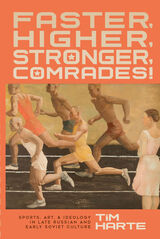 Faster, Higher, Stronger, Comrades!: Sports, Art, and Ideology in Late Russian and Early Soviet Culture
Tim Harte
University of Wisconsin Press, 2020 The revival of the Olympic games in 1896 and the subsequent rise of modern athletics prompted a new, energetic movement away from more sedentary habits. In Russia, this ethos soon became a key facet of the Bolsheviks' shared vision for the future. In the aftermath of the revolution, glorification of exercise persevered, pointing the way toward a stronger, healthier populace and a vibrant Socialist society.
With interdisciplinary analysis of literature, painting, and film, Faster, Higher, Stronger, Comrades! traces how physical fitness had an even broader impact on culture and ideology in the Soviet Union than previously realized. From prerevolutionary writers and painters glorifying popular circus wrestlers to Soviet photographers capturing unprecedented athleticism as a means of satisfying their aesthetic ideals, the nation's artists embraced sports in profound, inventive ways. Though athletics were used for doctrinaire purposes, Tim Harte demonstrates that at their core, they remained playful, joyous physical activities capable of stirring imaginations and transforming everyday realities.
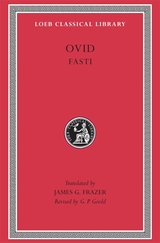 Fasti
Ovid
Harvard University Press The Roman book of days.
Ovid (Publius Ovidius Naso, 43 BC–AD 17), born at Sulmo, studied rhetoric and law at Rome. Later he did considerable public service there, and otherwise devoted himself to poetry and to society. Famous at first, he offended the emperor Augustus by his Ars amatoria, and was banished because of this work and some other reason unknown to us, and dwelt in the cold and primitive town of Tomis on the Black Sea. He continued writing poetry, a kindly man, leading a temperate life. He died in exile.
Ovid’s main surviving works are the Metamorphoses, a source of inspiration to artists and poets including Chaucer and Shakespeare; the Fasti, a poetic treatment of the Roman year of which Ovid finished only half; the Amores, love poems; the Ars amatoria, not moral but clever and in parts beautiful; Heroides, fictitious love letters by legendary women to absent husbands; and the dismal works written in exile: the Tristia, appeals to persons including his wife and also the emperor; and similar Epistulae ex Ponto. Poetry came naturally to Ovid, who at his best is lively, graphic and lucid.
The Loeb Classical Library edition of Ovid is in six volumes.
 Fasti Ecclesiae Anglicanae 1300-1541: II: Hereford Diocese
Edited by Joyce M. Horn and revised by David Lepine
University of London Press, 2009 After the First World War, Britain faced a number of challenges as it sought to adapt to domestic conditions of mass democracy while maintaining its position in the empire in the face of national independence movements. As politicians at home and abroad sought to legitimize their position, new efforts were made to conceptualize nationality and citizenship, with attempts to engage the public using mass media and greater emphasis on governing in the public interest. Brave New World reappraises the domestic and imperial history of Britain in the inter-war period, investigating how 'nation building' was given renewed impetus by the upheavals of the First World War. The essays in this collection address how new technologies and approaches to governance were used to forge new national identities both at home and in the empire, covering a wide range of issues from the representation of empire on film to the convergence of politics and 'star culture'. The book is an invaluable resource for scholars of British social, political and imperial history, as well as being of interest to the general reader.
Fasti Ecclesiae Anglicanae 1541-1857: Hereford Diocese XIII
William H. Campbell
University of London Press, 2014 Six new dioceses were created out of the larger dioceses, having as their cathedrals former abbey churches. These fourteen were known as the New Foundation, as compared with the thirteen medieval secular cathedrals of the Old Foundation. Further substantial reorganisation took place in the eighteen-thirties, and additional dioceses were created to meet the needs of the period.
FASTING FOR RAMADAN: Notes from a Spiritual Practice
Kazim Ali
Tupelo Press, 2011 Fasting for Ramadan is structured as a chronicle of daily meditations, during two cycles of the 30-day rite of daytime abstinence required by Ramadan for purgation and prayer. Estranged in certain ways from his family’s cultural traditions when he was younger, Ali has in recent years re-embraced the Ramadan ritual, and brings to this rediscovery an extraordinary delicacy of reflection, a powerfully inquiring mind, and the linguistic precision and ardor of a superb poet.
 Fat Activism: A Radical Social Movement
Charlotte Cooper
Intellect Books, 2016 What is Fat Activism and why is it important?
Charlotte Cooper, a fat activist with around 30 years experience, answers this question by lifting the lid on a previously unexplored social movement and offering a fresh perspective on one of the major problems of our times.
In her expansive grassroots study she:
Reveals details of fat activist methods and approaches and explodes myths
Charts extensive accounts of international fat activist historical roots going back over four decades
Explores controversies and tensions in the movement
Shows that fat activism is an undeniably feminist and queer phenomenon
Explains why fat activism presents exciting possibilities for anyone interested in social justice
Fat Activism: A Radical Social Movement is a rare insider’s view of fat people speaking about their lives and politics on their own terms. It is part of a new wave of accessible, accountable and rigorous work emerging through Research Justice and the Para-Academy.
This is the book you have been waiting for.
Fat Activism (Second Edition): A Radical Social Movement
Charlotte Cooper
Intellect Books, 2021 What is fat activism and why is it important? To answer this question, Charlotte Cooper presents an expansive grassroots study that traces the forty-year history of international fat activism and grounds its actions in their proper historical and geographical contexts. She details fat activist methods, analyzes existing literature in the field, challenges long-held assumptions that uphold systemic fatphobia, and makes clear how crucial feminism and queer theory are to the lifeblood of the movement. She also considers fat activism’s proxy concerns, including body image, body positivity, the obesity epidemic, and fat stigma.
Combining rigorous scholarship with personal, accessible writing, Fat Activism: A Radical Social Movement is not only an invaluable contribution to the burgeoning field of fat studies, but also a vehicle for much-needed social change.
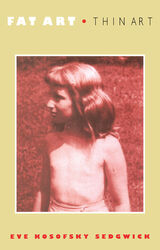 Fat Art, Thin Art
Eve Kosofsky Sedgwick
Duke University Press, 1994 Eve Kosofsky Sedgwick is best known as a cultural and literary critic, as one of the primary forces behind the development of queer and gay/lesbian studies, and as author of several influential books: Tendencies, Epistemology of the Closet, and Between Men: English Literature and Male Homosocial Desire. The publication of Fat Art, Thin Art, Sedgwick’s first volume of poetry, opens up another dimension of her continuing project of crossing and re-crossing the electrified boundaries between theory, lyric, and narrative.
Embodying a decades-long adventure, the poems collected here offer the most accessible and definitive formulations to appear anywhere in Sedgwick’s writing on some characteristic subjects and some new ones: passionate attachments within and across genders; queer childhoods of many kinds; the performativity of a long, unconventional marriage; depressiveness, hilarity, and bliss; grave illness; despised and magnetic bodies and bodily parts. In two long fictional poems, a rich narrative momentum engages readers in the mysterious places—including Victorian novels—where characters, sexualities, and fates are unmade and made. Sedgwick’s poetry opens an unfamiliar, intimate, daring space that steadily refigures not only what a critic may be, but what a poem can do.
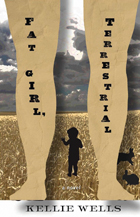 Fat Girl, Terrestrial: A Novel
Kellie Wells
University of Alabama Press, 2012 Not only the story of a colossus of a woman living in Kansas, Fat Girl, Terrestrial is also a meditation on God, treachery, and blind love. In Kingdom Come, Kansas, a town from which children once mysteriously disappeared, there lives a giant woman. Wallis Armstrong is not a pituitary mutant or a person battling a rare medical condition; she’s just an improbably large woman ill at ease in a world built for shrimps. Paradoxically, Wallis builds miniatures of crime scenes, and her specialty is staged suicides. She constructed her first diorama as a child when a boy in her fourth-grade class went suddenly missing. Wallis’s brother, Obie, believes the only explanation for his sister’s amplitude is that she is the incarnation of God on Earth, and he is her one true ardent disciple. Until he too disappears. Kellie Wells’s story of Wallis’s odyssey through this tight-fitting world is a churlish meditation on the existence and nature of God as well as an exploration of the treachery of childhood and the destructive nature of the most blindly abiding kind of love: that of a love-struck brother for a big sister, a disciple for an unwilling prophet, and a bone-weary god for a savage and disappointing flock.
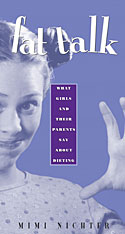 Fat Talk: What Girls and Their Parents Say about Dieting
Mimi Nichter
Harvard University Press, 2000 Teen-aged girls hate their bodies and diet obsessively, or so we hear. News stories and reports of survey research often claim that as many as three girls in five are on a diet at any given time, and they grimly suggest that many are “at risk” for eating disorders. But how much can we believe these frightening stories? What do teenagers mean when they say they are dieting?
Anthropologist Mimi Nichter spent three years interviewing middle school and high school girls—lower-middle to middle class, white, black, and Latina—about their feelings concerning appearance, their eating habits, and dieting. In Fat Talk, she tells us what the girls told her, and explores the influence of peers, family, and the media on girls’ sense of self. Letting girls speak for themselves, she gives us the human side of survey statistics.
Most of the white girls in her study disliked something about their bodies and knew all too well that they did not look like the envied, hated “perfect girl.” But they did not diet so much as talk about dieting. Nichter wryly argues—in fact some of the girls as much as tell her—that “fat talk” is a kind of social ritual among friends, a way of being, or creating solidarity. It allows the girls to show that they are concerned about their weight, but it lessens the urgency to do anything about it, other than diet from breakfast to lunch. Nichter concludes that if anything, girls are watching their weight and what they eat, as well as trying to get some exercise and eat “healthfully” in a way that sounds much less disturbing than stories about the epidemic of eating disorders among American girls.
Black girls, Nichter learned, escape the weight obsession and the “fat talk” that is so pervasive among white girls. The African-American girls she talked with were much more satisfied with their bodies than were the white girls. For them, beauty was a matter of projecting attitude (“’tude”) and moving with confidence and style.
Fat Talk takes the reader into the lives of girls as daughters, providing insights into how parents talk to their teenagers about their changing bodies. The black girls admired their mothers’ strength; the white girls described their mothers’ own “fat talk,” their fathers’ uncomfortable teasing, and the way they and their mothers sometimes dieted together to escape the family “curse”—flabby thighs, ample hips. Moving beyond negative stereotypes of mother–daughter relationships, Nichter sensitively examines the issues and struggles that mothers face in bringing up their daughters, particularly in relation to body image, and considers how they can help their daughters move beyond rigid and stereotyped images of ideal beauty.
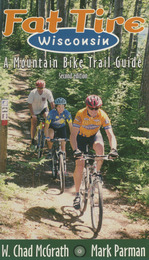 Fat Tire Wisconsin: A Mountain Bike Trail Guide
W. Chad Mcgrath
University of Wisconsin Press, 2001 Razorback Ridge. Levis Mound. The Underdown. Washburn and Nepco Lake. Whether you’re looking for a snake-like singletrack or a steep descent, whether you want to hit the trails near urban centers or escape to the scenic northern woods and waters, Fat Tire Wisconsin will take you there.
In this updated Second Edition, authors and Wisconsin natives W. Chad McGrath and Mark Parman share the knowledge gained from countless hours of riding Wisconsin’s off-road bike trails. They’ve included twenty-one challenging new trail systems, as well as changes and expansions to older systems. Fat Tire Wisconsin includes details of terrain and levels of difficulty; trail maps, directions to the trail sites, and use fees; and information on organizations, races, and websites.
Worldwide, mountain biking is enjoying ever-increasing popularity. Wisconsin, already a popular and welcoming locale for cycling activities of all kinds, is fast becoming a leader in off-road biking. Fat Tire Wisconsin takes you straight into the heart of everything that off-road Wisconsin has to offer.
Fata Morgana
Reginald Shepherd
University of Pittsburgh Press, 2007 Fata Morgana mingles personal experience, history, mythology, politics, and natural science to explore the relationships of conception and perception, the self finding its way through a physical and social world not of its own making, but changing the world by its presence.
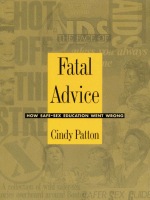 Fatal Advice: How Safe-Sex Education Went Wrong
Cindy Patton
Duke University Press, 1996 The American public responded to the first cases of AIDS with fear and panic. Both policymakers and activists were concerned not only with stopping the spread of the disease, but also with guiding the public’s response toward those already infected. Fatal Advice is an examination of how the nation attempted, with mixed results, to negotiate the fears and concerns brought on by the epidemic. A leading writer on the cultural politics of AIDS, Cindy Patton guides us through the thicket of mass-media productions, policy and public health enterprises, and activist projects as they sprang up to meet the challenge of the epidemic, shaping the nation’s notion of what safe-sex is and who ought to know what about it.
There is the official story, and then there is another, involving local groups and AIDS activists. Going back to early government and activist attempts to spread information, Patton traces a slow separation between official advice and that provided by those on the front lines in the battle against AIDS. She shows how American anxieties about teen sex played into the nation’s inadequate education and protection of its young people, and chronicles the media’s attempts to encourage compassion without broaching the touchy subject of sex or disrupting the notion that AIDS was a disease of social and sexual outcasts. Her overview of the relationship between shifting medical perceptions and safe-sex advice reveals why radical safe-sex educators eventually turned to sexually explicit, including pornographic, representations to spread their message—and why even these extreme tactics could not overcome the misguided national teaching on AIDS.
Patton closes with a stirring manifesto, an urgent call to action for all those who do not want to see the hard lessons of AIDS education and activism wasted, or, with these lessons, the loss of so many more lives.
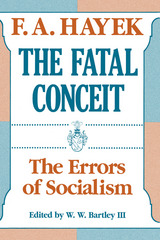 The Fatal Conceit: The Errors of Socialism
F. A. Hayek
University of Chicago Press, 1988 Hayek gives the main arguments for the free-market case and presents his manifesto on the "errors of socialism." Hayek argues that socialism has, from its origins, been mistaken on factual, and even on logical, grounds and that its repeated failures in the many different practical applications of socialist ideas that this century has witnessed were the direct outcome of these errors. He labels as the "fatal conceit" the idea that "man is able to shape the world around him according to his wishes."
"The achievement of The Fatal Conceit is that it freshly shows why socialism must be refuted rather than merely dismissed—then refutes it again."—David R. Henderson, Fortune.
"Fascinating. . . . The energy and precision with which Mr. Hayek sweeps away his opposition is impressive."—Edward H. Crane, Wall Street Journal
F. A. Hayek is considered a pioneer in monetary theory, the preeminent proponent of the libertarian philosophy, and the ideological mentor of the Reagan and Thatcher "revolutions."
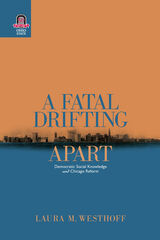 A Fatal Drifting Apart: Democratic Social Knowledge and Chicago Reform
Laura M. Westhoff
Ohio State University Press, 2007 The eyes of the country frequently turned to Chicago during the 1890s as the Windy City struggled with the promises and challenges of urban democracy. Americans of all classes feared the social dislocations and economic divisions of urbanization and industrialization, and the effects of political corruption and massive immigration on democratic politics. Yet many reformers were hopeful that new forms of social knowledge and urban reform could reinvigorate democracy. They saw the moment as one of great possibility.
A Fatal Drifting Apart: Democratic Social Knowledge and Chicago Reform explores the efforts of diverse groups within Chicago during the Progressive Era. This backdrop of industrialization, emerging classes, and ethnic and racial pluralism frequently riven with class conflict set the stage on which Chicago reformers took up the seemingly impossible challenge of enacting democracy. Laura M. Westhoff examines historic events and well-known individuals of the period and brings them together in an unusual framework that offers a new perspective on the reorientation of knowledge, civic identity, and democratic culture at the dawn of the twentieth century, which she terms democratic social knowledge. The book raises important questions that continue to resonate: In a democracy, who has the power to define social problems and offer solutions, and whose experience and knowledge are seen as legitimate?
The Fatal Embrace: Jews and the State
Benjamin Ginsberg
University of Chicago Press, 1993 In this provocative book, Benjamin Ginsberg examines the cycle of Jewish success and anti-Semitic attack throughout the history of the Diaspora, with a concentrated focus on the "special case" of America. For Ginsberg, the essential issue is not anti-Jewish feeling, but the conditions under which such sentiment is likely to be used in the political arena. The Fatal Embrace identifies the political dynamics that, historically, have set the stage for the persecution of Jews.
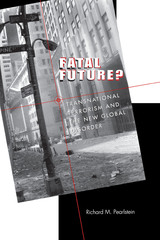 Fatal Future?: Transnational Terrorism and the New Global Disorder
By Richard M. Pearlstein
University of Texas Press, 2004 The nature and goals of terrorist organizations have changed profoundly since the Cold War standoff among the U.S., Soviet, and Chinese superpowers gave way to the current "polyplex" global system, in which the old rules of international engagement have been shattered by a new struggle for power among established states, non-state actors, and emerging nations. In this confusing state of global disorder, terrorist organizations that are privately funded and highly flexible have become capable of carrying out incredibly destructive attacks anywhere in the world in support of a wide array of political, religious, and ethnic causes. This groundbreaking book examines the evolution of terrorism in the context of the new global disorder. Richard M. Pearlstein categorizes three generations of terrorist organizations and shows how each arose in response to the global conditions of its time. Focusing extensively on today's transnational (i.e., privately funded and internationally operating) terrorist organizations, he devotes thorough attention to the two most virulent types: ethnoterrorism and radical Islamic terrorism. He also discusses the terrorist race for weapons of mass destruction and the types of attacks, including cyberterrorism, that are likely to occur in coming years. Pearlstein concludes with a thought-provoking assessment of the many efforts to combat transnational terrorism in the post-September 11 period.
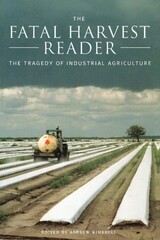 The Fatal Harvest Reader: The Tragedy of Industrial Agriculture
Edited by Andrew Kimbrell
Island Press, 2002 Fatal Harvest takes an unprecedented look at our current ecologically destructive agricultural system and offers a compelling vision for an organic and environmentally safer way of producing the food we eat. It gathers together more than forty essays by leading ecological thinkers including Wendell Berry, Wes Jackson, David Ehrenfeld, Helena Norberg-Hodge, Vandana Shiva, and Gary Nabhan. Providing a unique and invaluable antidote to the efforts by agribusiness to obscure and disconnect us from the truth about industrialized foods, it demostrates that industrial food production is indeed a "fatal harvest"--fatal to consumers, fatal to our landscapes, fatal to genetic diversity, and fatal to our farm communities.
As it exposes the ecological and social impacts of industrial agriculture's fatal harvest, Fatal Harvest details a new ecological and humane vision for agriculture. It shows how millions of people are engaged in the new politics of food as they work to develop a better alternative to the current chemically fed and biotechnology-driven system. Designed to aid the movement to reform industrial agriculture, Fatal Harvest informs and influences the activists, farmers, policymakers, and consumers who are seeking a safer and more sustainable food future.
 Fatal Isolation: The Devastating Paris Heat Wave of 2003
Richard C. Keller
University of Chicago Press, 2015 In a cemetery on the southern outskirts of Paris lie the bodies of nearly a hundred of what some have called the first casualties of global climate change. They were the so-called abandoned victims of the worst natural disaster in French history, the devastating heat wave that struck in August 2003, leaving 15,000 dead. They died alone in Paris and its suburbs, and were then buried at public expense, their bodies unclaimed. They died, and to a great extent lived, unnoticed by their neighbors--their bodies undiscovered in some cases until weeks after their deaths.
Fatal Isolation tells the stories of these victims and the catastrophe that took their lives. It explores the multiple narratives of disaster--the official story of the crisis and its aftermath, as presented by the media and the state; the life stories of the individual victims, which both illuminate and challenge the ways we typically perceive natural disasters; and the scientific understandings of disaster and its management. Fatal Isolation is both a social history of risk and vulnerability in the urban landscape and a story of how a city copes with emerging threats and sudden, dramatic change.
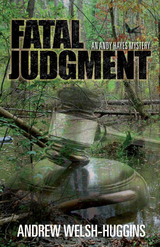 Fatal Judgment: An Andy Hayes Mystery
Andrew Welsh-Huggins
Ohio University Press, 2024 Judge Laura Porter fiercely guarded her privacy, and never more so than during her long-running—and long in the past—affair with disgraced quarterback-turned-private investigator Andy Hayes. Now she’s missing, disappeared just hours after she calls Andy out of the blue explaining she’s in trouble and needs his help. A trail of clues leads Andy to a central Ohio swamp whose future lies in the judge’s hands as she weighs a lawsuit pitting environmentalists against developers. Soon Hayes encounters the case of another missing person, a young man who vanished without a trace in a different swamp two counties away. As he looks for links between the two disappearances, Hayes is led from Columbus to Cleveland, unearthing a history of secrets and betrayals threatening not just the judge but her family as well. Along the way, Hayes is forced to confront a newly strained relationship with his older son, now a budding football star himself, and revisit his tumultuous days as a Cleveland Browns quarterback and the gridiron failures that haunt him to this day. In partnership with a cop on her own quest for justice, Hayes rushes to find the judge, and the truth, before it’s too late.
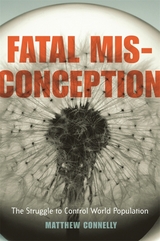 Fatal Misconception: The Struggle to Control World Population
Matthew Connelly
Harvard University Press, 2010 Fatal Misconception is the disturbing story of our quest to remake humanity by policing national borders and breeding better people. As the population of the world doubled once, and then again, well-meaning people concluded that only population control could preserve the “quality of life.” This movement eventually spanned the globe and carried out a series of astonishing experiments, from banning Asian immigration to paying poor people to be sterilized.
Supported by affluent countries, foundations, and non-governmental organizations, the population control movement experimented with ways to limit population growth. But it had to contend with the Catholic Church’s ban on contraception and nationalist leaders who warned of “race suicide.” The ensuing struggle caused untold suffering for those caught in the middle—particularly women and children. It culminated in the horrors of sterilization camps in India and the one-child policy in China.
Matthew Connelly offers the first global history of a movement that changed how people regard their children and ultimately the face of humankind. It was the most ambitious social engineering project of the twentieth century, one that continues to alarm the global community. Though promoted as a way to lift people out of poverty—perhaps even to save the earth—family planning became a means to plan other people‘s families.
With its transnational scope and exhaustive research into such archives as Planned Parenthood and the newly opened Vatican Secret Archives, Connelly’s withering critique uncovers the cost inflicted by a humanitarian movement gone terribly awry and urges renewed commitment to the reproductive rights of all people.
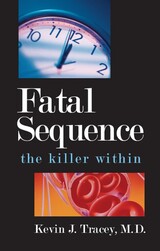 Fatal Sequence: The Killer Within
Kevin J. Tracey
Dana Press, 2006 Severe sepsis, a critical illness that most often afflicts victims of initially nonfatal illnesses or injuries, is the third-most-common killer in the United States. In Fatal Sequence, neurosurgeon, immunologist, and clinical investigator Kevin J. Tracey offers a chronicle both scientific and human, using cases he personally experienced to illustrate the clinical nightmare of organ failure that typifies the disease.
In clear, accessible language, Tracey explains how the brain, which normally restrains the immune system and protects the patient, can fail during severe sepsis—allowing the immune system to indiscriminately kill normal cells along with foreign microbes. Fatal Sequence is a compelling documentation of an all-too-common situation: doctors fighting to prevent patients’ deaths at the hands of complications from injuries and illnesses that should never be fatal in the first place.
“This book is a must for anyone interested in protecting the body from foreign organisms and, in many instances, itself.” —Jamie Talan, Newsday
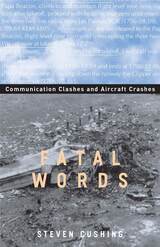 Fatal Words: Communication Clashes and Aircraft Crashes
Steven Cushing
University of Chicago Press, 1994 On March 27, 1977, 583 people died when KLM and Pan Am 747s collided on a crowded, foggy runway in Tenerife, the Canary Islands. The cause, a miscommunication between the pilot and the air traffic controller. The pilot radioed, "We are now at takeoff," meaning that the plane was lifting off, but the tower controller misunderstood and thought the plane was waiting on the runway.
In Fatal Words, Steven Cushing explains how miscommunication has led to dozens of aircraft disasters, and he proposes innovative solutions for preventing them. He examines ambiguities in language when aviation jargon and colloquial English are mixed, when a word is used that has different meanings, and when different words are used that sound alike. To remedy these problems, Cushing proposes a visual communication system and a computerized voice mechanism to help clear up confusing language.
Fatal Words is an accessible explanation of some of the most notorious aircraft tragedies of our time, and it will appeal to scholars in communications, linguistics, and cognitive science, to aviation experts, and to general readers.
 Fate and Honor, Family and Village: Demographic and Cultural Change in Rural Italy Since 1800
Rudolph M. Bell
University of Chicago Press, 1979 The Italian peasantry has often been described as tragic, backward, hopeless, downtrodden, static, and passive. In Fate and Honor, Family and Village, Rudolph Bell argues against the characterizationmore by reconstructing the complete demographic history of four country villages since 1800. He analyzes births, marriages, and deaths in terms of four concepts that capture mroe accurately and sympathetically the essence of the Italian peasant life: fortuna (fate), onore (honor, dignity), famiglia (family), and campanilismo (village).
Fortuna is the cultural wellspring of Italian peasant society, the world view from which all social life flows. The concept of fortuna does not refer to philosophical questions, predestination, or value judgments. Rather, fortuna is the sum total of all explanations of outcomes perceived to be beyond human control. Thus, in Bell's view, high mortality does not lead peasants to a resigned acceptance of their fate; instead, they rely on honor, reciprocal exchanges of favors, and marriage to forge new links in their familial and social networks. With thorough documentation in graphs and tables, the author evaluates peasant reactions to time, work, family, space, migration, and protest to portray rural Italians as active, flexible, and shrewd, participating fully in shaping their destinies.
Bell asserts that the real problem of the Mezzogiorno is not one of resistance to technology, of high birth rates, or even of illiteracy. It is one of solving technical questions in ways that foster dependency. The historical and sociological practice of treating peasant culture as backward, secondary, and circumscribed only encourages disruption and ultimately blocks the road to economic and political justice in a postmodern world.
 Fate in My Hands: The Death Penalty in the Soviet Union
Yana Skorobogatov
University of Chicago Press A striking examination of the death penalty in the Soviet Union that documents in heart-rending detail how its citizens, hopeful for a new life post-Stalin, lost faith that their transgressions could be forgiven.
From 1954 to 1991 in the Soviet Union, nearly 40,000 citizens were executed after the death penalty was reinstated as a punishment for homicide. Fate in My Hands introduces readers to the many citizens in this period—women and men of all ages and backgrounds—who found themselves on death row and tried to escape it in the only way available to them: asking for forgiveness.
Examining the letters and objects the dead left behind, Skorobogatov recovers their voices and allows them to speak anew. She offers a striking portrait of life in the Soviet Union and the citizens who dreamed of new possibilities even as they faced their tragic end. Using a corpus of never-before-accessed criminal court records, Fate in My Hands brings readers not just into the police interrogation rooms, courthouses, and cells where the condemned awaited their fates, but into the homes, workplaces, and psychiatric hospitals where families and friends alike came together to pursue an elusive, bitter justice in the wake of violent tragedy.
Fate News
Norma Cole
Omnidawn, 2018 All timing all the time! Fate News is poetry in the crosshairs of action (kairos) and clock time (chronos). With a topical setlist in four sections, “Local,” “On-Going,” “Stay Songs,” and “Harmolodics,” Fate News relentlessly pierces the surface of lyric gesture. Its osmotic exchanges and searching encounters vibrate with the clarity of fiercely delicate shouts and murmurs, undertones and overtones. The vision of “Mount Fiasco” is on fire.
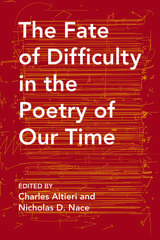 The Fate of Difficulty in the Poetry of Our Time
Edited by Charles Altieri and Nicholas D. Nace
Northwestern University Press, 2017 The Fate of Difficulty in the Poetry of Our Time offers original readings of poems composed in this century—poems that are challenging to follow, challenging to understand, challenging to discuss, and challenging to enjoy. Difficult poetry of the past relied on allusion, syntactic complexity, free association, and strange juxtapositions. The new poetry breaks with the old in its stunning variety; its questioning of inherited values, labels, and narratives; its multilingualism; its origin in and production of unnamed affects; and its coherence around critical and social theorists as much as other poets.
The essays in this volume include poets writing on the works of a younger generation (Lyn Hejinian on Paolo Javier, Bob Perelman on Rachel Zolf, Roberto Tejada on Rosa Alcalá), influential writers addressing the work of peers (Ben Lerner on Maggie Nelson, Michael W. Clune on Aaron Kunin), critics making imaginative leaps to encompass challenging work (Brian M. Reed on Sherwin Bitsui, Siobhan Philips on Juliana Spahr), and younger scholars coming to terms with poets who continue to govern new poetic experimentation (Joseph Jeon on Myung Mi Kim, Lytle Shaw on Lisa Robertson).
In pairings that are both intuitive (Marjorie Perloff on Craig Dworkin) and unexpected (Langdon Hammer on Srikanth Reddy), The Fate of Difficulty in the Poetry of Our Time illuminates the myriad pathways and strategies for exploring difficult poetry of the present.
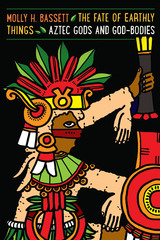 The Fate of Earthly Things: Aztec Gods and God-Bodies
By Molly H. Bassett
University of Texas Press, 2015 Following their first contact in 1519, accounts of Aztecs identifying Spaniards as gods proliferated. But what exactly did the Aztecs mean by a “god” (teotl), and how could human beings become gods or take on godlike properties? This sophisticated, interdisciplinary study analyzes three concepts that are foundational to Aztec religion—teotl (god), teixiptla (localized embodiment of a god), and tlaquimilolli (sacred bundles containing precious objects)—to shed new light on the Aztec understanding of how spiritual beings take on form and agency in the material world. In The Fate of Earthly Things, Molly Bassett draws on ethnographic fieldwork, linguistic analyses, visual culture, and ritual studies to explore what ritual practices such as human sacrifice and the manufacture of deity embodiments (including humans who became gods), material effigies, and sacred bundles meant to the Aztecs. She analyzes the Aztec belief that wearing the flayed skin of a sacrificial victim during a sacred rite could transform a priest into an embodiment of a god or goddess, as well as how figurines and sacred bundles could become localized embodiments of gods. Without arguing for unbroken continuity between the Aztecs and modern speakers of Nahuatl, Bassett also describes contemporary rituals in which indigenous Mexicans who preserve costumbres (traditions) incorporate totiotzin (gods) made from paper into their daily lives. This research allows us to understand a religious imagination that found life in death and believed that deity embodiments became animate through the ritual binding of blood, skin, and bone.
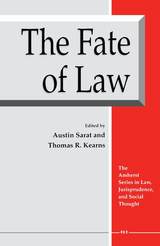 The Fate of Law
Austin Sarat and Thomas R. Kearns, Editors
University of Michigan Press, 1993 For law and legal theory the end of the twentieth century is a time of contradiction; while the newly emerging politics of Eastern Europe seek to establish a new rule of law, voices in this country proclaim the "death of law." For the former, law provides hope for stability and fairness. For the latter, the fundamental values that provide a grounding for legality seem no longer secure or satisfying. The Fate of Law is a collection of five original essays, each of which discusses the problems and prospects of law in the late twentieth century. The essays pay particular attention to the impact of broad intellectual and political movements, especially feminism and postmodernism, on law and legal theory. The Fate of Law investigates what happens under the critical scrutiny of those movements and in an era of growing skepticism about law's central claim to objectivity, neutrality, and reason. It describes the struggles that ensue and the responses that are made. Each of the essays that comprise this books is written in its own style and voice; each makes it own judgments and assessments.
The Fate of Reason: German Philosophy from Kant to Fichte
Frederick C. Beiser
Harvard University Press, 1993 The Fate of Reason is the first general history devoted to the period between Kant and Fichte, one of the most revolutionary and fertile in modern philosophy. The philosophers of this time broke with the two central tenets of the modern Cartesian tradition: the authority of reason and the primacy of epistemology. They also witnessed the decline of the Aufklärung, the completion of Kant’s philosophy, and the beginnings of post-Kantian idealism.
Thanks to Frederick C. Beiser we can newly appreciate the influence of Kant’s critics on the development of his philosophy. Beiser brings the controversies, and the personalities who engaged in them, to life and tells a story that has uncanny parallels with the debates of the present.
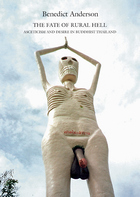 The Fate of Rural Hell: Asceticism and Desire in Buddhist Thailand
Benedict Anderson
Seagull Books, 2012 In 1975, when political scientist Benedict Anderson reached Wat Phai Rong Wua, a massive temple complex in rural Thailand conceived by Buddhist monk Luang Phor Khom, he felt he had wandered into a demented Disneyland. One of the world’s most bizarre tourist attractions, Wat Phai Rong Wua was designed as a cautionary museum of sorts; its gruesome statues depict violent and torturous scenes that showcase what hell may be like. Over the next few decades, Anderson, who is best known for his work, Imagined Communities, found himself transfixed by this unusual amalgamation of objects, returning several times to see attractions like the largest metal-cast Buddha figure in the world and the Palace of a Hundred Spires. The concrete statuaries and perverse art in Luang Phor’s personal museum of hell included, “side by side, an upright human skeleton in a glass cabinet and a life-size replica of Michelangelo’s gigantic nude David, wearing fashionable red underpants from the top of which poked part of a swollen, un-Florentine penis,” alongside dozens of statues of evildoers being ferociously punished in their afterlife. In The Fate of Rural Hell, Anderson unravels the intrigue of this strange setting, endeavoring to discover what compels so many Thai visitors to travel to this popular spectacle and what order, if any, inspired its creation. At the same time, he notes in Wat Phai Rong Wua the unexpected effects of the gradual advance of capitalism into the far reaches of rural Asia. Both a one-of-a-kind travelogue and a penetrating look at the community that sustains it, The Fate of Rural Hell is sure to intrigue and inspire conversation as much as Wat Phai Rong Wua itself.
The Fate of Texas: The Civil War and the Lone Star State
Charles D. Grear
University of Arkansas Press, 2018 In its examination of a state too often neglected by Civil War historians, The Fate of Texas presents Texas as a decidedly Southern, yet in many ways unusual, state seriously committed to and deeply affected by the Confederate war effort in a multitude of ways. When the state joined the Confederacy and fought in the war, its fate was uncertain. The war touched every portion of the population and all aspects of life in Texas. Never before has a group of historians examined the impact of the war on so many facets of the state.
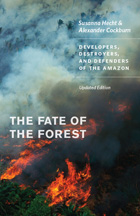 The Fate of the Forest: Developers, Destroyers, and Defenders of the Amazon, Updated Edition
Susanna B. Hecht and Alexander Cockburn
University of Chicago Press, 2010 The Amazon rain forest covers more than five million square kilometers, amid the territories of nine different nations. It represents over half of the planet’s remaining rain forest. Is it truly in peril? What steps are necessary to save it? To understand the future of Amazonia, one must know how its history was forged: in the eras of large pre-Columbian populations, in the gold rush of conquistadors, in centuries of slavery, in the schemes of Brazil’s military dictators in the 1960s and 1970s, and in new globalized economies where Brazilian soy and beef now dominate, while the market in carbon credits raises the value of standing forest.
Susanna Hecht and Alexander Cockburn show in compelling detail the panorama of destruction as it unfolded, and also reveal the extraordinary turnaround that is now taking place, thanks to both the social movements, and the emergence of new environmental markets. Exploring the role of human hands in destroying—and saving—this vast forested region, The Fate of the Forest pivots on the murder of Chico Mendes, the legendary labor and environmental organizer assassinated after successful confrontations with big ranchers. A multifaceted portrait of Eden under siege, complete with a new preface and afterword by the authors, this book demonstrates that those who would hold a mirror up to nature must first learn the lessons offered by some of their own people.
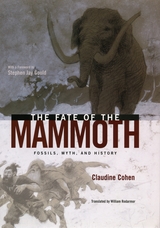 The Fate of the Mammoth: Fossils, Myth, and History
Claudine Cohen
University of Chicago Press, 2002 From cave paintings to the latest Siberian finds, woolly mammoths have fascinated people across Europe, Asia, and North America for centuries. Remains of these enormous prehistoric animals were among the first fossils to be recognized as such, and they have played a crucial role in the birth and development of paleontology. In this lively, wide-ranging look at the fate of the mammoth, Claudine Cohen reanimates this large mammal with heavy curved tusks and shaggy brown hair through its history in science, myth, and popular culture.
Cohen uses the mammoth and the theories that naturalists constructed around it to illuminate wider issues in the history of science, showing how changing views about a single object reveal the development of scientific methods, practices, and ideas. How are fossils discovered, reconstructed, displayed, and interpreted? What stories are told about them, by whom, and how do these stories reflect the cultures and societies in which they are told?
To find out, Cohen takes us on a grand tour of the study of mammoth remains, from England, Germany, and France to Russia and America, and from the depths of Africa to the frozen frontiers of Alaska and Siberia, where intact mammoth corpses have been discovered in the permafrost. Along the way, she shows how paleontologists draw on myth and history, as well as on scientific evidence, to explore the deep history of the earth and of life. Cohen takes her history from the sixteenth century right up to the present, when researchers are using molecular biology to retrieve mammoth DNA, calling up dreams of cloning the mammoth and one day seeing herds of woolly mammoths roaming the frozen steppes.
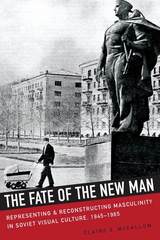 The Fate of the New Man: Representing and Reconstructing Masculinity in Soviet Visual Culture, 1945–1965
Claire E. McCallum
Northern Illinois University Press, 2018 Between 1945 and 1965, the catastrophe of war—and the social and political changes it brought in its wake—had a major impact on the construction of the Soviet masculine ideal. Drawing upon a wide range of visual material, The Fate of the New Man traces the dramatic changes in the representation of the Soviet man in the postwar period. It focuses on the two identities that came to dominate such depictions in the two decades after the end of the war: the Soviet man’s previous role as a soldier and his new role in the home once the war was over. In this compelling study, Claire McCallum focuses on the reconceptualization of military heroism after the war, the representation of contentious subjects such as the war-damaged body and bereavement, and postwar changes to the depiction of the Soviet man as father.
McCallum shows that it was the Second World War, rather than the process of de-Stalinization, that had the greatest impact on the masculine ideal, proving that even under the constraints of Socialist Realism, the physical and emotional devastation caused by the war was too great to go unacknowledged. The Fate of the New Man makes an important contribution to Soviet masculinity studies. McCallum’s research also contributes to broader debates surrounding the impact of Stalin’s death on Soviet society and on the nature of the subsequent Thaw, as well as to those concerning the relationship between Soviet culture and the realities of Soviet life. This fascinating study will appeal to scholars and students of Soviet history, masculinity studies, and visual culture studies.
|
|
